Broken windows theory
description: a criminological theory suggesting that visible signs of disorder and neglect cause an increase in crime
55 results
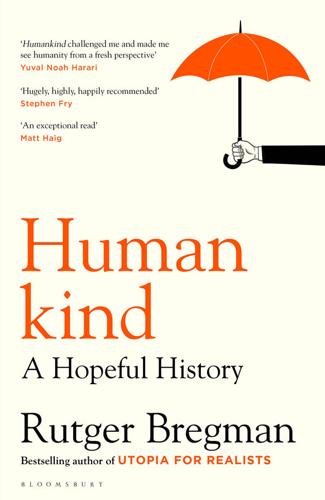
Humankind: A Hopeful History
by
Rutger Bregman
Published 1 Jun 2020
Zimbardo’s car experiment, never published in any scientific journal, was the inspiration for the broken windows theory. And just like his Stanford Prison Experiment, this theory has since been thoroughly debunked. We know, for instance, that the ‘innovative’ policing of William Bratton and his Brattonistas was not responsible for the drop in New York City’s crime rates at all. The decline set in earlier, and in other cities, too. Cities like San Diego, where the police left minor troublemakers alone. In 2015, a meta-analysis of thirty studies on broken windows theory revealed that there’s no evidence Bratton’s aggressive policing strategies did anything to reduce crime.33 Zip, zero, zilch.
…
Meanwhile, his co-author was plagued by mounting doubts. George Kelling felt the broken windows theory had been too often misapplied. His own concern had always been about the broken windows themselves, not the arrest and incarceration of as many black and brown people as possible. ‘There’s been a lot of things done in the name of Broken Windows that I regret,’ Kelling admitted in 2016. When he began hearing police chiefs all over the country invoke his theory, two words flashed across his mind: ‘Oh s––t.’40 What would happen if we turned the broken windows theory around? If we can redesign prisons, could we do the same with police departments?
…
The best remedy against crime, Professor Wilson patiently instructed, was to put away the criminals. How hard could it be? After reading a number of articles about James Q. Wilson’s influence on the justice system, it hit me. I’d heard this name before. Turns out that in 1982 Wilson came up with another revolutionary idea, which would enter the history books as the ‘broken windows’ theory. The first time I encountered this theory was in the same book where I’d also first read about Kitty Genovese’s murder (and the thirty-eight bystanders): journalist Malcolm Gladwell’s The Tipping Point. I remember being riveted by his chapter on Wilson. ‘If a window in a building is broken and is left unrepaired,’ Wilson wrote in a piece for The Atlantic in 1982, ‘all the rest of the windows will soon be broken.’21 Sooner or later, if nobody intervenes, the vandals will be followed by squatters.
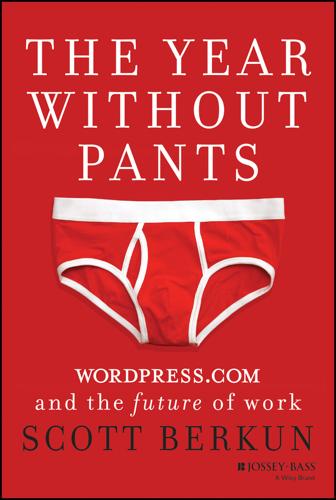
The Year Without Pants: Wordpress.com and the Future of Work
by
Scott Berkun
Published 9 Sep 2013
Mostly it was up to programmers and their teams to decide how to triage issues that landed on their P2s. Some were fixed immediately, others were fixed soon, some were rejected, and others fell into the limbo of issues whose fate may never be decided. Source: Greg Brown, a code wrangler at Automattic. If you ask the old-timers, Automattic believed in the broken window theory, the idea popularized by Jane Jacobs in her book The Death and Life of Great American Cities.1 She examined why some neighborhoods in New York City were safer than others and concluded that neighborhoods that were well maintained by their inhabitants, including small things like picking up trash and fixing broken windows, tended to have less crime.
…
Many open source projects espouse similar philosophies, but in practice it's a challenge since few enjoy picking up other people's trash. It was true that Adams and many other developers at Automattic would regularly watch for unowned issues to surface in IRC and jump in to debug or fix them. The broken windows theory has been challenged for not being the primary reason some neighborhoods were safer, but the premise—little things done well consistently can have big effects—has merit. While Automattic practiced the philosophy, how far it went is another story. No matter how many Good Samaritans you have, if the rate at which windows break is faster than people can fix them, the philosophy can't save you.
…
Although they never used the P word (process), a word that smelled of big corporations, that's what it was. One team improved P2 itself to allow posts to be marked as unresolved, making filtering possible. Often programmers would cherry-pick bugs they felt were most important or easiest to do, and leave the others alone—a kind of modified broken window theory where people pick the windows they like most or are closest to their homes. Team Social, like other teams, designated the lead to be the last line of defense, responding to unanswered P2 posts. The broken LinkedIn connector itself wasn't important. Not many people used it—maybe 1 percent of all users.
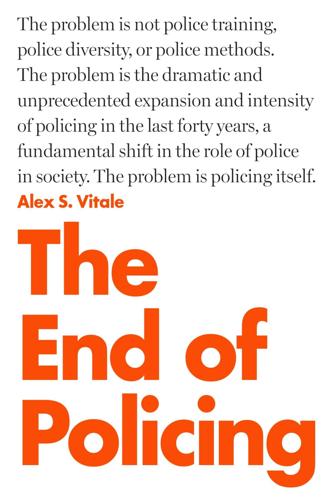
The End of Policing
by
Alex S. Vitale
Published 9 Oct 2017
Wilson co-authored the book Crime and Human Nature with Richard Herrnstein, which argued that there were important biological determinants of criminality.16 While race was not one of the core determinants, language about IQ and body type opened the door to a kind of sociobiology that led Herrnstein to coauthor the openly racist The Bell Curve with Charles Murray, who was also a close associate of Wilson.17 What was needed to stem this tide of declining civility, they argued, was to empower the police to not just fight crime but to become agents of moral authority on the streets. The new role for the police was to intervene in the quotidian disorders of urban life that contributed to the sense that “anything goes.” The broken-windows theory magically reverses the well-understood causal relationship between crime and poverty, arguing that poverty and social disorganization are the result, not the cause, of crime and that the disorderly behavior of the growing “underclass” threatens to destroy the very fabric of cities. Broken-windows policing is at root a deeply conservative attempt to shift the burden of responsibility for declining living conditions onto the poor themselves and to argue that the solution to all social ills is increasingly aggressive, invasive, and restrictive forms of policing that involve more arrests, more harassment, and ultimately more violence.
…
Christian Parenti has shown how the federal government crashed the economy in the 1970s to stem the rise of workers’ power, leaving millions out of work and creating a new, mostly African American permanent underclass largely excluded from the formal economy.39 In response, government mobilized at all levels to manage this new “surplus population” through intensive policing and mass incarceration. The policing of poor and nonwhite communities became much more intense. As unemployment, poverty, and homelessness increased, government, police, and prosecutors worked together to criminalize huge swaths of the population aided by ideologies like the broken-windows theory and the superpredator myth. We cannot reduce all policing to the active suppression of social movements and the control of racial minorities. Today’s police are clearly concerned with matters of public safety and crime control, however misguided their methods are. The advent of Compstat and other management techniques are in fact designed to address serious crime problems, and significant resources go into these efforts.
…
While the origins of “school resource officers” (SROs) can be traced back to the 1950s, there was a dramatic change in their number and focus in the 1990s, thanks in large part to the Justice Department’s “Cops in Schools” program, which gave out $750 million to hire 6,500 new school-based police.3 While many of these officers work hard to maintain a safe environment for students and to act as mentors and advisors, the overall approach of relying on armed police to deal with safety issues has led to a massive increase in arrests of students that fundamentally undermines the educational mission of schools, turning them into an extension of the larger carceral state and feeding what has come to be called the school-to-prison pipeline. This increase in the number of school-based police is tied to a variety of social and political factors that converged in the 1990s and continues today. First, conservative criminologist John Dilulio, along with broken-windows theory author James Q. Wilson, argued in 1995 that the United States would soon experience a wave of youth crime driven by the crack trade, high rates of single-parent families, and a series of racially coded concerns about declining values and public morality.4 He predicted that by 2010 there would be an additional 270,000 of these youthful predators on the streets, leading to a massive increase in violent crime.

Palaces for the People: How Social Infrastructure Can Help Fight Inequality, Polarization, and the Decline of Civic Life
by
Eric Klinenberg
Published 10 Sep 2018
Reducing crime is more difficult than preventing cholera, but MacDonald, who’s done pioneering experimental research on how places influence crime rates, is one of many contemporary environmental criminologists with something new and significant to offer. Social scientists have long played a major role in shaping crime policies. Consider the “broken windows” theory, which the Harvard political scientist James Q. Wilson and the Rutgers criminologist George Kelling introduced in the Atlantic in 1982. According to Wilson and Kelling, criminals perceive broken windows and other forms of neighborhood disorder as signals of weak social control and, in turn, as evidence that crimes committed there are unlikely to be checked.
…
Since the 1980s, cities throughout the world have used Wilson and Kelling’s ideas as motivation for “zero tolerance” policing, wherein officers carefully monitor petty crimes such as graffiti, loitering, public intoxication, even panhandling, and courts severely punish those convicted of committing them. “If you take care of the little things, then you can prevent a lot of the big things,” said the former Los Angeles and New York City police chief William J. Bratton, who used broken windows theory not only as a guide in both places but also in his global consulting work. In practice, this meant stopping, frisking, and arresting more people, particularly those who live in high-crime areas. It also meant a spike in reports that police were unfairly targeting minorities, particularly black men.
…
It also meant a spike in reports that police were unfairly targeting minorities, particularly black men. Despite some relatively recent experimental evidence supporting elements of the theory, broken windows always worked better as an idea than as a work of empirical science. As the Columbia University law professor Bernard Harcourt writes, “the famous broken windows theory has never been verified,” and “the existing social-scientific data suggest that the theory is probably not right.” The problems, which include the fact that perceptions of disorder generally have more to do with the racial composition of a neighborhood than with the amount of broken windows or graffiti, are numerous and well documented.
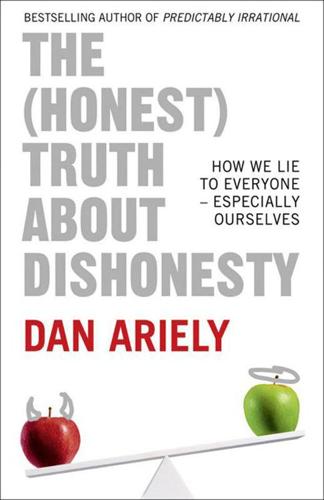
The (Honest) Truth About Dishonesty: How We Lie to Everyone, Especially Ourselves
by
Dan Ariely
Published 27 Jun 2012
So what can we do about it? One hint may lie in the Broken Windows Theory, which was the basis of a 1982 Atlantic article by George Kelling and James Wilson. Kelling and Wilson proposed a critical component of keeping order in dangerous neighborhoods, and it wasn’t just putting more police on the beat. They argued that if people in a run-down area of town see a building with a few broken, long-unrepaired windows, they will be tempted to break even more windows and create further damage to the building and its surroundings, creating a blight effect. Based on the Broken Windows Theory, they suggested a simple strategy for preventing vandalism: fix problems when they are small.
…
Based on the Broken Windows Theory, they suggested a simple strategy for preventing vandalism: fix problems when they are small. If you repair each broken window (or other misbehaviors) immediately, other potential offenders are going to be much less likely to misbehave. Although the Broken Windows Theory has been difficult to prove or refute, its logic is compelling. It suggests that we should not excuse, overlook, or forgive small crimes, because doing so can make matters worse. This is especially important for those in the spotlight: politicians, public servants, celebrities, and CEOs. It might seem unfair to hold them to higher standards, but if we take seriously the idea that publicly observed behavior has a broader impact on those viewing the behavior, this means that their misbehavior can have greater downstream consequences for society at large.
…
Similarly, understanding how conflicts of interest work and how deeply they influence us makes it clear that we need to avoid and regulate conflicts of interest to a much higher degree. We also need to understand the effects that the environment, as well as mental and physical depletion, plays in dishonesty. And of course, once we understand the social infectiousness of dishonesty, we could take a cue from the Broken Windows Theory to combat the social contagion of cheating. INTERESTINGLY, WE ALREADY have many social mechanisms in place that seem to be designed specifically for resetting our moral compass and overcoming the “what-the-hell” effect. Such resetting rituals—ranging from the Catholic confession to Yom Kippur, and Ramadan to the weekly Sabbath—all present us with opportunities to collect ourselves, stop the deterioration, and turn a new page.

Buried in Treasures: Help for Compulsive Acquiring, Saving, and Hoarding
by
David Tolin
,
Randy O. Frost
and
Gail Steketee
Published 14 Dec 2013
Then, when lots of windows are broken, they figure that the area is rundown and therefore it’s OK to do all kinds of rotten things. The broken windows theory has since been applied in police work and urban development, most visibly in New York City, where attention to smaller, “quality-of-life” problems (such as repairing signs of urban decay and stopping low-level crimes) seems to have reduced the occurrence of more serious crimes. What does the broken windows theory have to do with you? Think about how your actions are influenced by clutter in your home. Now think about how your actions are influenced by cleanliness.
…
It is the same with organizing and decluttering. Sorting and letting go will become harder and harder unless you are doing it on a frequent and regular basis. Clutter Is a Magnet for Clutter In the 1980s, social scientists James Wilson and George Kelling proposed what they called the “broken windows theory” of urban crime. They read about a famous study by psychologist Philip Zimbardo in which he left a car sitting in a nice neighborhood for 1 week. The car went untouched until Zimbardo smashed one of the car’s windows. Within a day, the car had been completely stripped by thieves and vandals.
…
See also decision making respecting, 103–4 avoidance, 48–49, 162–65 solution to, 108 “bad guys” (thoughts that inhibit recovery), 35 avoidance and excuse making, 48–49, 162–65 going for the short-term payoff, 50–51, 165–66 “It’s just not my priority,” 35–39, 157–62 letting unhelpful beliefs get in the way, 39–45, 167–82 overthinking, 45–48 taking on the, 186 balance of change, 93, 102 Balance of Change Scale, 36, 37f, 94f beliefs. See also “bad guys”; thinking about usefulness, waste, and responsibility, 41, 71–72, 174–76 about stuff, 39–45, 167–82 brain working with, not against, 121–26 brain scans, findings from, 66–68 broken windows theory, 195–96 Buried in Treasures (BIT) Workshops, 4, 5, 10, 40, 59, 65 203 catastrophizing, 163, 172 categorization deciding on location for saved items, 131–35 making categories, 129–30 overly elaborate, 46 problems with, 69–70 change priority for, 35–39 readiness for, 37–39, 102 charities that will pick up, 135–36 cheerleading, 62, 118 “churning,” 150 clutter as magnet for clutter, 195–96 reducing, 61 clutter visualization exercise, 99, 159–60 coaches, instructions for, 62–63 cognitive-behavioral therapy (CBT), 7–8 compulsive acquiring process, 110–12.
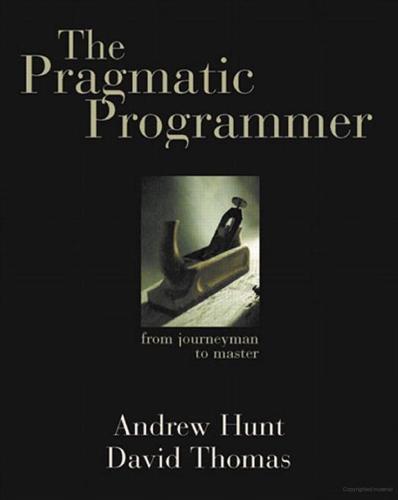
The Pragmatic Programmer
by
Andrew Hunt
and
Dave Thomas
Published 19 Oct 1999
One broken window, left unrepaired for any substantial length of time, instills in the inhabitants of the building a sense of abandonment—a sense that the powers that be don't care about the building. So another window gets broken. People start littering. Graffiti appears. Serious structural damage begins. In a relatively short space of time, the building becomes damaged beyond the owner's desire to fix it, and the sense of abandonment becomes reality. The "Broken Window Theory" has inspired police departments in New York and other major cities to crack down on the small stuff in order to keep out the big stuff. It works: keeping on top of broken windows, graffiti, and other small infractions has reduced the serious crime level. Tip 4 Don't Live with Broken Windows Don't leave "broken windows" (bad designs, wrong decisions, or poor code) unrepaired.
…
One broken window—a badly designed piece of code, a poor management decision that the team must live with for the duration of the project—is all it takes to start the decline. If you find yourself working on a project with quite a few broken windows, it's all too easy to slip into the mindset of "All the rest of this code is crap, I'll just follow suit." It doesn't matter if the project has been fine up to this point. In the original experiment leading to the "Broken Window Theory," an abandoned car sat for a week untouched. But once a single window was broken, the car was stripped and turned upside down within hours. By the same token, if you find yourself on a team and a project where the code is pristinely beautiful—cleanly written, well designed, and elegant—you will likely take extra special care not to mess it up, just like the firefighters.
…
But they say that if you take a frog and drop it into boiling water, it will jump straight back out again. However, if you place the frog in a pan of cold water, then gradually heat it, the frog won't notice the slow increase in temperature and will stay put until cooked. Note that the frog's problem is different from the broken windows issue discussed in Section 2. In the Broken Window Theory, people lose the will to fight entropy because they perceive that no one else cares. The frog just doesn't notice the change. Don't be like the frog. Keep an eye on the big picture. Constantly review what's happening around you, not just what you personally are doing. Related sections include: Software Entropy, page 4 Programming by Coincidence, page 172 Refactoring, page 184 The Requirements Pit, page 202 Pragmatic Teams, page 224 Challenges While reviewing a draft of this book, John Lakos raised the following issue: The soldiers progressively deceive the villagers, but the change they catalyze does them all good.
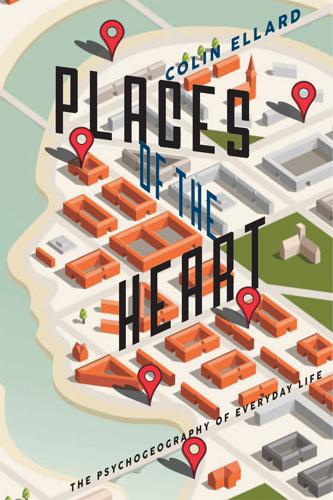
Places of the Heart: The Psychogeography of Everyday Life
by
Colin Ellard
Published 14 May 2015
A major crackdown on both physical and social disorder followed, including controversial enforcement measures that allowed police to stop, question, and frisk any suspicious individuals appearing on the streets. In New York and a few other places in the United States and beyond, a measurable drop in serious crime followed these initiatives; so the application of broken windows theory to the problem of urban crime was lauded as a success.12 Research and debate about the broken windows theory continues unabated and with some heat. Critics argue that the decreases in crime rate in New York observed during Mayor Giuliani’s reign also coincided with a general increase in the standard of living of residents of the city and notably a precipitous drop in the unemployment rate.
…
Political scientist James Wilson and criminologist George Kelling used this simple observation, publicized not long after the experiment in an article in Time magazine, as the cornerstone of a major new theory describing the origins of urban crime. The key argument of Wilson and Kelling’s so-called broken windows theory was that physical signs of disorder—broken or boarded up windows, litter, or graffiti—served as overt signals that nobody cared about the surrounding environment and this evident lack of caring encouraged crime. If Wilson and Kelling were right then a key corollary would be that any efforts taken to minimize signs of physical disorder would also discourage crime.
…
parsons-ellard 7The technical article describing the relationship between neuropeptide S and urban stress was written by Fabian Streit and a large group of collaborators titled “A Functional Variant in the Neuropeptide S Receptor 1 Gene Moderates the Influence of Urban Upbringing on Stress Processing in the Amygdala,” and was published in the journal Stress (2014, Volume 17, pages 352–361). 8Oshin Vartanian describes our preferences for curves and some of its implications for architecture in an article titled “Impact of Contour on Aesthetic Judgments and Approach-Avoidance Decisions in Architecture,” in the Proceedings of the National Academy of Sciences (2011, Volume 110, Supplement 2, pags 10446–10453) Available at: http://www.pnas.org/content/110/Supplement_2/10446.abstract 9The experiments describing the effect of geometric shapes on social judgment by Ursula Hess, Orna Gryc, and Shlomo Hareli appear in a paper titled “How Shapes Influence Social Judgments,” in the journal Social Cognition (2013 Volume 31, pages 72–80). 10The film The Pruitt-Igoe Myth, produced and directed in 2011 by Chad Friedrichs, provides an interesting interpretation of the failure of the development based more on prejudice and economics than on architecture. 11The dropped letter method was invented by Stanley Milgram (of the infamous Milgram Experiment) and first reported in an article titled “The Lost-Letter Technique: A Tool of Social Research,” in the journal Public Opinion Quarterly (1965, Volume 29, pages 437–438). 12The article, titled “Broken Windows: The Police and Neighborhood Safety,” that “broke” the news of broken window theory was published in The Atlantic Monthly (March, 1982 by James Wilson and George Kelling. In part, their theory was based on earlier work by Philip Zimbardo in an article titled “The Human Choice: Individuation, Reason, and Order Versus Deindividuation, Impulse, and Chaos,” in the Nebraska Symposium on Motivation (1969, Volume 17, pages 237–307). 13A report on the Eurobarometer analysis of the fear of crime, produced by the European Commission, titled “Analysis of Public Attitudes to Insecurity, Fear of Crime and Crime Prevention,” can be found at: http://ec.europa.eu/public_opinion/archives/ebs/ebs_181_sum_en.pdf 14A digest of results from a 2010 Gallup poll assessing fear of crime in the United States, titled “Nearly 4 in 10 Americans Still Fear Walking Alone at Night,” can be found at: http://www.gallup.com/poll/144272/nearly-americans-fear-walking-alone-night.aspx 15This Robert Ornstein quote comes from his 1992 book The Evolution of Consciousness: The Origins of the Way We Think (Simon and Schuster, New York, page 262). 16The official Viennese government description of gender mainstreaming may be found here: https://www.wien.gv.at/english/administration/gendermainstreaming/ A good discussion by Clare Foran of the Viennese policies titled “How to Design a City for Women,” can be found in the Atlantic City Lab blog at: http://www.citylab.com/commute/2013/09/how-design-city-women/6739/ 17The proportion of unmarried adults in U.S. rose to more than 50 percent according to a widely reported survey conducted by the U.S.
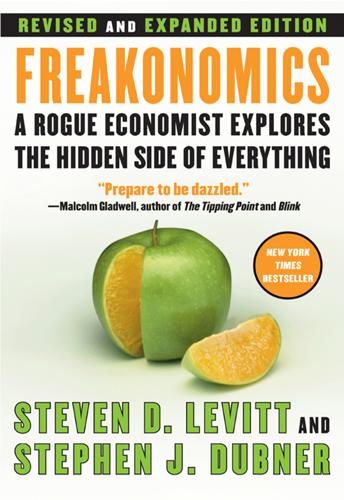
Freakonomics: A Rogue Economist Explores the Hidden Side of Everything
by
Steven D. Levitt
and
Stephen J. Dubner
Published 11 Apr 2005
Instead of relying solely on old-fashioned cop know-how, he introduced technological solutions like CompStat, a computerized method of addressing crime hot spots. The most compelling new idea that Bratton brought to life stemmed from the broken window theory, which was conceived by the criminologists James Q. Wilson and George Kelling. The broken window theory argues that minor nuisances, if left unchecked, turn into major nuisances: that is, if someone breaks a window and sees it isn’t fixed immediately, he gets the signal that it’s all right to break the rest of the windows and maybe set the building afire too.
…
. / 114–15 The 1960s as a great time to be a criminal: See Gary S. Becker and Guity Nashat Becker, The Economics of Life (New York: McGraw-Hill, 1997), pp. 142–43. NEW YORK CITY’S CRIME “MIRACLE”: The “Athenian period” quote came from an author interview with former police captain William J. Gorta, one of CompStat’s inventors. / 116 The broken window theory: See James Q. Wilson and George L. Kelling, “Broken Windows: The Police and Neighborhood Safety,” Atlantic Monthly, March 1982. / 118 Bratton hiring more police in Los Angeles: See Terry McCarthy, “The Gang Buster,” Time, January 19, 2004. GUN LAWS: Concerning the fact that the United States has more guns than it has adults, see Philip Cook and Jens Ludwig, Guns in America: Results of a Comprehensive Survey of Gun Ownership and Use (Washington, D.C.: Police Foundation, 1996). / 119 The gun-crime link: See Mark Duggan, “More Guns, More Crime,” Journal of Political Economy 109, no. 5 (2001), pp. 1086–1114. / 119 Guns in Switzerland: See Stephen P.
…
Conley, Dalton contraception conventional wisdom of experts and journalists inaccuracy of questioning of shifts in sloppy formation of Cook County, Ill. corporate scandals Corzine, Jon Cosby, Bill Cosby Show, The Council on Bioethics crack cocaine changes in market for nicknames for crib death crime abortion and African Americans and broken window theory and corporate deterrence of drug-related incentives for information minor predictions of property rising rates of street teenage underreporting of victims of violent white-collar see also drug dealers; specific crimes crime reduction aging population and capital punishment and drug market changes and gun control and imprisonment and legalized abortion and police and strong economy and theories of tougher laws and criminal mobs criminologists Crooked Timber Daily Racing Form Daily Show with Jon Stewart, The Danielovitch, Issur data: chains of on early childhood education game show online dating patterns in recording of selection of sports testing see also information dating, online day-care centers fines for late pickups at death: accidental of children drowning risks vs. fear of see also capital punishment; homicide Death Benefit Association “Death’s Waiting List” Declaration of Independence deflation Dershowitz, Alan Detroit diets DiIulio, John J., Jr.
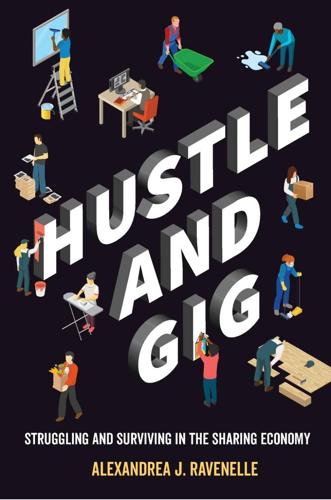
Hustle and Gig: Struggling and Surviving in the Sharing Economy
by
Alexandrea J. Ravenelle
Published 12 Mar 2019
An attorney with a law firm in New York City, making well over two hundred thousand dollars a year, can afford to treat his gig economy work as a game. He’s not dependent on it. But his “playing Mafia” and treating lawbreaking as an antidote to boredom points to a casualization of criminality within the sharing economy. In 1982, George L. Kelling and James Q. Wilson wrote about the broken-windows theory in The Atlantic. To illustrate their point that disorder begets disorder, they used Philip Zimbardo’s 1969 experiments with a car left in the Bronx bearing signs of deviance (hood up, no license plates) and a comparable vehicle left in Palo Alto, California, although without any signs of deviance.18 Within minutes of being “abandoned,” the vehicle in the Bronx was vandalized by a family that stole the radiator and battery.
…
Most of the adult ‘vandals’ were well-dressed, apparently clean-cut whites.”19 The vehicle in Palo Alto was fine for more than a week, until Zimbardo took a sledgehammer to a portion of the exterior. “Within a few hours the car had been turned upside down and utterly destroyed. Again, the ‘vandals’ appeared to be primarily respectable whites.”20 Broken-windows theory suggests that any sign of disorder or deviance—such as a single broken window—will lead to more disorder. “Untended property becomes fair game for people out for fun or plunder and even for people who ordinarily would not dream of doing such things and who probably consider themselves law-abiding. . . .
…
Airbnb has likewise established itself by breaking laws against illegal hotels and making it easier for people to enter a highly regulated, and taxed, industry without following the same rules or paying the same taxes as established companies. When a company flouts the rules and earns multibillion-dollar valuations as a result, the message sent to workers and customers is hardly one of moral rectitude. If broken-windows theory suggests that small-scale disorder can lead to wide-scale deviance, then perhaps this is best described as the theory of “dead fish rotting”: large-scale illegal efforts, carried out in full public view—such as starting an illegal hotel business by calling it an “accommodations marketplace” or opening an unregulated taxi company by calling it a “technology company”—lead to small-scale deviance by individuals.
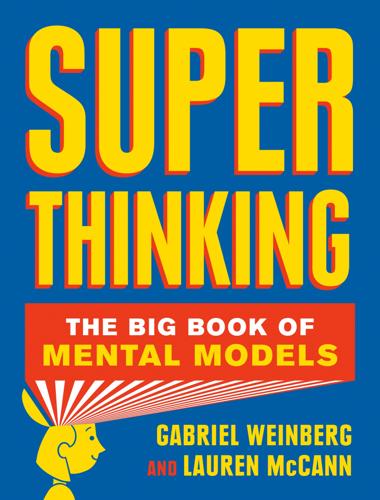
Super Thinking: The Big Book of Mental Models
by
Gabriel Weinberg
and
Lauren McCann
Published 17 Jun 2019
This line of reasoning is usually fallacious because there often isn’t 100 percent inevitability in each piece of the logical chain. The second model is broken windows theory, which proposes that visible evidence of small crimes, for example broken windows in a neighborhood, creates an environment that encourages worse crimes, such as murder. The thinking goes that broken windows are a sign that lawlessness is tolerated, and so there is a perceived need to hold the line and prevent a descent into a more chaotic state (see herd immunity in Chapter 2). While interventions associated with broken windows theory are intuitively appealing, it is unclear how effective they are at actually reducing widespread criminal activity relative to alternatives.
…
A&P, 70 absence of evidence is not the evidence of absence, 167 A/B testing, 136 Accidental Empires (Cringley), 253 accountability, 275 acne, 169–71 activation energy, 112–13 actor-observer bias (self-serving bias), 21, 272 Adams, John, 222 adaptability, 121, 129 ad hominem, 226 adverse selection, 46–47 advertising, 103–4, 120, 262 advisers, 44, 45, 296 Affordable Care Act (ACA), 46, 47 Afghanistan, 54, 243 agent, 44–45 aggregation, 205 aggression, obnoxious, 264 agreeableness, 250 AIDS, 233 Airbnb, 276, 288, 292 air pollution, 41 air travel, 53–54 Aldi, 70 Alexander, Christopher, 92 algorithms, 94, 97 Allen, David, 76 all-nighter, 83 alpha, 161, 182 al-Qaeda, 52, 54 alternative hypothesis, 163, 164, 166, 167 altruism, effective, 80 alumni, 119 Amazon, 61, 70, 95–96, 283, 290, 300 American Revolution, 221–22, 239, 240 American Statistical Association, 168 Amway, 217 analysis paralysis, 60–62, 93 anchoring, 14–15, 30, 199 anecdotal evidence, 133, 139, 146 antibiotics, 37, 47–49 Antifragile (Taleb), 2, 105 antifragility, 2–3, 31–33 anti-patterns, 93 AOL, 106 Apollo 13, 4 appeasement, 237 Apple, 103, 104, 231, 241, 258, 289–91, 305, 309 iPad, 290 iPod, 296–97 Newton, 290 approval ratings, 152–54, 158 arbitrage, 282–83 Archilochus, 254 Archimedes, 78 arguing from first principles, 4–7, 31, 207 Ariely, Dan, 14, 222–23 arithmetic, ix–x, 23–24, 30, 178 arms races, 209–12, 214 Ashley Madison, 229 Associated Press (AP), 306 asymmetric information, 45–47 atomic bomb, see nuclear weapons Atwood, Jeff, 253 authority, 219–20, 226 automation, 95, 310 availability bias, 15–18, 30, 33, 300 average, 146, 187 Avon, 217 Aztecs, 243–44 babies, 198, 279 sleep and, 131–32 babysitters, 222 backfire effect, 26 back-of-the-envelope calculation, 299 bacteria, 47–49, 295 bait and switch, 228, 229 bandwagon effect, 202 barriers to entry and barriers to exit, 305 baseball, 83, 145–46, 289 base rate, 157, 159, 160 base rate fallacy, 157, 158, 170 BATNA (best alternative to a negotiated agreement), 77 Battle of Heraclea, 239 Battle of Tsushima, 241 Bayes’ theorem and Bayesian statistics, 157–60 beachhead, 300–301 Beatles, 105 Beautiful Mind, A, 213 beliefs, 103, 107 bell curve (normal distribution), 150–52, 153, 163–66, 191 Bell Labs, 89 benefit of the doubt, 20 benefits: cost-benefit analysis, 177–86, 189, 194 eliminating, 224 net, 181–82, 184 Berlin, Isaiah, 254 Bernoulli distribution, 152 best practices, 92 beta, 162, 182 Better Angels of Our Nature, The (Pinker), 144 Bezos, Jeff, 61–62, 286–87 bias, 3, 139 availability, 15–18, 30, 33, 300 confirmation, 26–28, 33, 103, 159 disconfirmation, 27 groupthink, 201–3 hidden, 139–43 hindsight, 271–72 nonresponse, 140, 142, 143 observer-expectancy, 136, 139 optimistic probability, 33 present, 85, 87, 93, 113 publication, 170, 173 response, 142, 143 selection, 139–40, 143, 170 self-serving, 21, 272 survivorship, 140–43, 170, 272 Big Short, The (Lewis), 289 bike-shedding, 75, 93 Bird, Larry, 246 birth lottery, 21–22, 69 black-and-white thinking, 126–28, 168, 272 black boxes, 94–95 Black Flags rebellion, 276 blackouts, electric, 120 black swan events, 190–91, 193 Blank, Steve, 294 bleeding them dry, 239 blinded experiments, 136 Blockbuster, 106 blowback, 54 Boaty McBoatface, RSS, 35 body mass index (BMI), 137 body temperature, 146–50 boiling frog, 55, 56, 58, 60 bonds, 180, 184 Bonne, Rose, 58 Boot, Max, 239 boots on the ground, 279 Boston Common, 36–38, 42 Boyd, John, 294 Bradley, Bill, 248 brainstorming, 201–3 Brandeis, Louis, 307 breast cancer, 156–57, 160–61 Breathalyzer tests, 157–58, 160 Brexit, 206, 305 bright spots, 300 bring in reinforcements, 279 British Medical Journal (BMJ), 136–37 broken windows theory, 235–36 Broderick, Matthew, 230 Brody, William, 290–91 Brookings Institution, 306 brute force solution, 93, 97 Bryson, Bill, 50 budget, 38, 74–75, 81, 95, 113 national, 75–76 Buffett, Warren, viii, 69, 286, 302, 317, 318 burning bridges, 243 burnout, 82, 83 Burns, Robert, 49 burn the boats, 244 Bush, George H.
…
W., 104 business case, 207 butterfly effect, 121, 122, 125, 201 Butterfly Effect, The, 121 Butterworth, Brian, x buyout, leveraged, 79 bystander effect, 259 cable television, 69, 100, 106 Caesar, Julius, 244 calculus, 291 call your bluff, 238 cameras, 302–3, 308–10 campaign finance reform, 110 Campbell, Donald T., 49–50 Campbell’s law, 49–50 cancer: breast, 156–57, 160–61 clusters of, 145 lung, 133–34, 137 cap-and-trade systems, 42–43 capital, cost of, 76, 77, 179, 182 careers, 300–301 decisions about, 5–6, 57, 175–77, 201, 207, 296 design patterns and, 93 entry barriers and, 305 licensing and, 306–7 Carfax, 46 Cargill, Tom, 89 cargo cults, 315–16 caring personally, 263–64 car market, 46–47 Carrey, Jim, 229 carrot-and-stick model, 232 cascading failures, 120, 192 casinos, 220, 226 cast a wide net, 122 catalyst, 112–13, 115, 119 Catherine II, Empress, 228 causal loop diagrams, 192–93 causation, correlation and, 134, 135 cellphones, 116–17 center of gravity, 112 central limit theorem, 152–53, 163 central tendency, 147 chain reaction, viii, 114, 120 Challenger, 31–33 challenging directly, 263–64 change, 100–101, 112–13, 129 resistance to, 110–11 chaos, 124 balance between order and, 128 chaos theory, 121 chaotic systems, 120–21, 124, 125 Chatelier’s principle, 193–94 cheating, 50 Chekhov, Anton, 124 chess, 242 chilling effect, 52–54 China, 231, 276 choice, 62 paradox of, 62–63 Christensen, Clayton, 296, 297, 310 Cialdini, Robert, 215–17, 219–21 circle of competence, 317–18 climate change, 42, 55, 56, 104, 105, 183, 192 Clinton, Hillary, 70, 97 clustering illusion, 144–45 CNN, 220 Coase, Ronald, 42 Coase theorem, 42–43 cobra effect, 50–52 Coca-Cola, 305 cognitive dissonance, 27–29, 216 coin flips, 143–44, 154–55, 158–59 Cold War, 209, 235 collateral damage, 53–54, 231 collective intelligence, 205 collectivist versus individualist, in organizational culture, 274 college, 209–10 choice of, 58–60 rankings of, 50, 137 Collins, Jim, 109, 254 commandos, in organizations and projects, 253–54 commitment, 87–88 escalation of, 91 influence model of, 216, 220 commodities, 283 commons, 36–38, 43 Common Sense (Paine), 221–22 communication, high-context and low-context, 273–74 competence, circle of, 317–18 competition: and crossing the chasm, 312 moats and, 302–5 perfect, 283 regulatory capture and, 305 sustainable competitive advantage, 283, 285 complexity, complex systems, 185–86, 192, 194 diagrams and, 192–93 simulations and, 192–94 compound interest, 69, 85 Concorde fallacy, 91 conditional probability, 156 Confederate leaders, 113 confidence intervals, 154–56, 159 confidence level, 154, 155, 161 confirmation bias, 26–28, 33, 103, 159 conflict, 209, 226 arms races, 209–12, 214 game theory and, see game theory confounding factor, 134–35, 139 conjunction fallacy, 9–10 conscientiousness, 250 consensus, 202 consensus-contrarian matrix, 285–86, 290 consequence-conviction matrix, 265–66 consequences, 35 unintended, 35–36, 53–55, 57, 64–65, 192, 232 containment, 233, 237 contests, 35–36 context-switching, 71, 74 continental drift, 24–25, 289 contrarian-consensus matrix, 285–86, 290 Contrarian’s Guide to Leadership, The (Sample), 28 control group, 136 conventional wisdom, 5 convergent thinking, 203 conviction-consequence matrix, 265–66 cooperation, 215, 226 tit-for-tat, 214–15 correlations, 134, 135, 139 corruption, 307 Cortés, Hernán, 243–44 cost-benefit analysis, 177–86, 189, 194 Costco, 70 cost of capital, 76, 77, 179, 182 cost of doing business, 232 counterfactual thinking, 201, 272, 309–10 cramming, 83, 262 credible intervals, 159 crime, 16, 161, 231, 232 broken windows theory and, 235–36 Cringley, Robert X., 253 critical mass, viii–x, 114–15, 117, 119, 120, 129, 194, 308 critical thinking, 201 crossing the chasm, 311–12 crossing the Rubicon, 244 crowdsourcing, 203–6, 286 culture, 113, 273 organizational, 107–8, 113, 273–80, 293 customers, 300 development of, 294 personas for, 300 types of, 298–300 winner-take-most markets and, 308 Cutco, 217 Danziger, Shai, 63 dark patterns, 226–29 Potemkin villages, 228–29 Darley, John, 259 Darwin, Charles, 100, 101, 291 data, 130–31, 143, 146, 301 binary, 152 dredging of, 169–70 in graphs, see graphs mean in, 146, 149, 151 meta-analysis of, 172–73 outliers in, 148 streaks and clusters in, 144 variance in, 149 see also experiments; statistics dating, 8–10, 95 daycare center, 222–23 deadlines, 89 death, causes of, 17 death by a thousand cuts, 38 debate, 225 decisions, 1–2, 11, 31, 127, 129, 131–33, 175, 209 business case and, 207 choices and, 62–63 cost-benefit analysis in, 177–86, 189, 194 decision fatigue and, 63–64 decision tree in, 186–90, 194, 215 Eisenhower Decision Matrix, 72–74, 89, 124, 125 irreversible, 61–62, 223–24 opportunity cost and, 76–77, 80, 83, 179, 182, 188, 305 past, analyzing, 201, 271–72 pro-con list in, 175–78, 185, 189 reversible, 61–62 sequences of, 144 small, tyranny of, 38, 55 utilitarianism and, 189–90 Declaration of Independence, 222 deep work, 72, 76, 88, 278 default effect, 87–88 Defense, U.S.

Snowden's Box: Trust in the Age of Surveillance
by
Jessica Bruder
and
Dale Maharidge
Published 29 Mar 2020
Dick’s “The Minority Report,” the 1956 science fiction short story that became a Spielberg film. Pentagon-backed research for predicting war casualties has been adapted into technology that law enforcement agencies use to forecast crime. Sold by a firm called PredPol, the software has been compared by critics to the widely discredited “broken windows” theory of policing. They note that it perpetuates discrimination and does not predict white-collar crime. Meanwhile, Palantir, the $20 billion data analytics firm cofounded by Peter Thiel, has drawn protests for selling its services to ICE and the NYPD. (Meanwhile, executives raised eyebrows by sponsoring “thirteen-course tasting-menu lunches with lobster tail and sashimi at headquarters” as the company hemorrhaged money, a show of what critics dubbed “Palantir Entitlement Syndrome.”)
…
pp. 112–13 “internet of people” and locking workers in the bathroom: Erik Lorenzsonn, “Wisconsin Company That Microchipped Its Workers Envisions an ‘Internet of People,’” Cap Times, January 24, 2018. p. 113 Pentagon-backed research used to forecast crime: Ali Winston and Ingrid Burrington, “A Pioneer in Predictive Policing Is Starting a Troubling New Project,” Verge, April 26, 2018. p. 113 “broken windows” theory: Sarah Childress, “The Problem with “Broken Windows” Policing,” Frontline, June 28, 2016, pbs.org. p. 113 it perpetuates discrimination: Nathan Munn, “This Predictive Policing Company Compares Its Software to ‘Broken Windows’ Policing,” Vice, June 11, 2018. p. 113 Palantir draws protests: Rob Copeland and Eliot Brown, “Palantir Has a $20 Billion Valuation and a Bigger Problem: It Keeps Losing Money,” Wall Street Journal, November 12, 2018.

The Slow Fix: Solve Problems, Work Smarter, and Live Better in a World Addicted to Speed
by
Carl Honore
Published 29 Jan 2013
In the three decades since screen auditions became the norm the number of women playing in leading US orchestras has risen fivefold. The general cultural drift towards gender equality played a part, but without the introduction of blind auditions women would probably still sound worse than men. In sociology, the power of the telling detail is neatly distilled in the “broken window theory.” This holds that even the tiniest whiff of disorder, a broken window in a building, for instance, or a daub of graffiti on a wall, can set a tone that fuels more anti-social behaviour. In 2011 a group of researchers at the University of Groningen in the Netherlands showed how this works in practice.
…
Take the sharp fall in crime in New York over the last generation. Even after years of mining the data, academics still cannot agree on precisely why it happened. Was it caused by changes in policing techniques? Zero tolerance? Higher incarceration rates? Better race relations? Rising prosperity? A canny use of the broken window theory? Falling numbers of unwanted children after the legalisation of abortion in 1973? Was it some combination of all of these, or were there other, deeper trends or triggers that we have yet to spot? We will never know for sure. In a complex world, the only certainty is uncertainty. That is why the best fixers seldom bet the farm on a single epic win.
…
Poor spend heavily on lighting: Robert Bacon et al, “Expenditure of Low-Income Households on Energy,” Extractive Industries for Development, Series 16, World Bank, 16 June 2010. Women musicians sounded better behind screens: Claudia Goldin and Cecilia Rouse, “Orchestrating Impartiality: The Impact of ‘Blind’ Auditions on Female Musicians,” American Economic Review, Volume 90, Number 4 (September 2000), pp. 715–41. Broken window theory and effects of graffiti: Kees Keizer, Siegwart Lindenberg and Linda Steg, “The Spreading of Disorder,” Science 12, Volume 322, Number 5908 (December 2008), pp. 1681–5. John Wooden and basketball socks: Atul Gawande, “Top Athletes and Singers Have Coaches. Should You?” New Yorker, 3 October 2011.
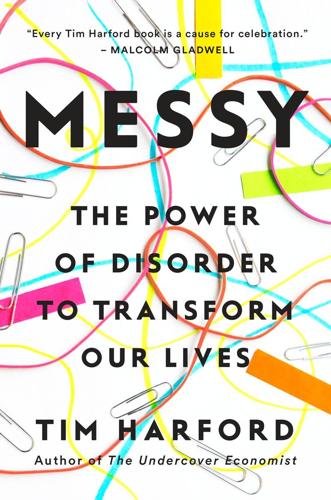
Messy: The Power of Disorder to Transform Our Lives
by
Tim Harford
Published 3 Oct 2016
But more pertinent, it was our eagerness to believe what his fraudulent study was telling us—to overestimate the ill effects of mess, to imagine that tidying up would have profoundly transformative effects on our moral selves, rather than just make our morning commute more pleasant—that led to its generating so much publicity. Not all messes have redeeming features: a train station that isn’t strewn with litter is more pleasant than one that is. It’s worth sweeping the platforms. But tidying up isn’t going to turn us into better people. • • • The story of the “broken windows” theory of urban decay is another example of how we instinctively overestimate the benefits of tidying up certain kinds of urban mess. The theory was proposed in an influential article in The Atlantic Monthly in 1982 by criminologist George Kelling and political scientist James Q. Wilson. Kelling and Wilson argued that small signs of disorder led to the breakdown of community norms and, eventually, to serious criminality.
…
Within a few hours, the car had been turned upside down and utterly destroyed.27 Interesting, but it is a stretch to build a theory of urban decay on what happens after one psychologist takes one sledgehammer to one car in one California city. The truth is that social science has not been able to muster much support for the broken windows theory of policing, nor for the idea that it deserves credit for breaking New York City’s crime wave in the 1990s. There is no shortage of explanations for the decline in crime, and any plausible explanation must deal with the fact that crime fell across the United States, not just in New York. Steve Levitt, the economist now famous for the Freakonomics books, surveyed the evidence in 2004.
…
(Whittaker), 240 Amazon, 124–27, 136–41 Ambulance response time, 159–61, 170–71 Anderson, Laurie, 17n Andreessen, Marc, 242, 243 Anechoic chambers, 75 Annealing, simulated, 10–11 Another Green World (Eno album), 9, 16 Apgar score, 153–55, 157 Apple (company and products), 63, 69, 139 Aquinas, Thomas, 93 Architecture, 68 modernist, 61–63, 72 playground, 269–70, 273 workplace, 70–73, 80, 85 Architecture of Happiness, The (de Botton), 62 Argentina, 216 Ariely, Dan, 248, 255, 256 Armitage, Simon, 31 Artificial intelligence, 252 Asch, Solomon, 47–48, 272n16 Attention deficit/hyperactivity disorder (ADHD), 18 Attentional filters, 17 Australia, 55, 68–69, 192, 207 Automation, 177–204, 258 disasters caused by, 177–86 human overreliance on, 192–98 unreliability of, 186–92 See also Computers Autonomy in childhood, 264 in workplace, 67–68, 80–84, 87–89 Avalanches, 165–66, 169 Aztec Empire, 34 Baar, Roland, 33 Bahns, Angela, 53–54 Bali, 190 Ball, David, 262 Banking regulations, 161–67, 169–74 Bardeen, John, 26 Barnes & Noble, 136–39 Basel Accords, 161–65, 169–70 Beagle (ship), 27 Beatles, 98 Beckmann, Johann Gottlieb, 150–53, 191, 205, 206 Belew, Adrien, 20–22, 97 Bentham, Jeremy, 170, 171 Beranek, Leo, 75–76 Berger, Warren, 71 Berkowitz, Aaron, 275n23 Berlin Wall, 8 Bevan, Gwyn, 172 Bezos, Jeff, 124–27, 129, 132, 136–41, 143–44, 146, 264 BHP Billiton, 68–69, 86 Big Sort, The (Bishop and Cushing), 217 Biodiversity, 155, 157, 206 Birmingham (England), 213–14 University of, 156 Bishop, Bill, 217 Blair, Tony, 149–50, 152, 155, 159, 170, 172, 173 Blaser, Martin, 208–9 Bletchley Park (England), 147 Blitzkrieg, 128 Blyton, Enid, 45 Bohlin, Peter, 63 Bolt, Beranek and Newman, 75–76, 78 Bombardier Inc., 51 Bonding, 36–39, 41, 57, 60 Bonin, Pierre-Cédric, 178–82, 185–86, 199 Borges, Jorge Luis, 234–39 Bose Corporation, 76, 78 Bösendorfer piano, 1–2 Boston, Route 128 technology cluster in, 214–15 Boston Attention and Learning Lab, 16 Boulder (Col.), 46–47 Bowie, David, 7–9, 16, 17n, 20, 25, 28 Boy Scouts, 42 Boyd, John, 132–35, 137, 140, 144, 264 “Boys Keep Swinging” (Bowie), 21, 22 Bradley, Sarah, 92 Brailsford, Dave, 58 Brand, Stewart, 79 Brandes, Vera, 1–3, 5 Braun, Allen, 99–100 Bridging, 38–39, 41, 57 Brin, Sergey, 81 Britain. See United Kingdom “Broken windows” theory, 221–25 Brown, Dan, 64, 67 Brown, Michael, 55 Bryars, Gavin, 17n Building 20 (MIT). See Massachusetts Institute of Technology (MIT) Bulgaria, 157 Bunce, Steve, 120 Burkina Faso, 120n Bush dynasty, 131, 132, 135, 139 Business Etiquette Handbook, The, 85 Byrne, David, 16 Cage, John, 75 Calendar management, 240–43 California, University of, San Francisco, 209, 281n4 Campbell, Robert, 79 Canada, 55 Cannae, Battle of, 134 Carlsen, Magnus, 120–21 Carson, Shelley, 17, 18 Carter, Jimmy, 217 Carthage, 134 Caterpillar Inc., 175 Catmull, Ed, 63, 87–89 CBS, 85 Cesarean sections (C-sections), 153–55, 210–11 Chambers, Paul, 96 Checklists, 30, 64, 234 ambiguous regulations versus, 172 messy transformation of.
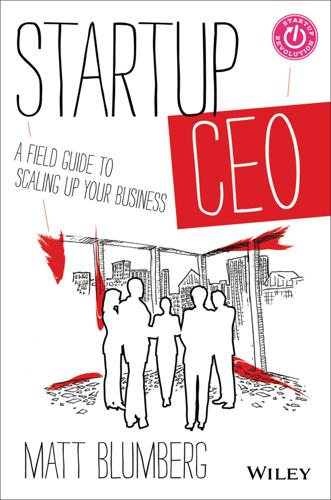
Startup CEO: A Field Guide to Scaling Up Your Business, + Website
by
Matt Blumberg
Published 13 Aug 2013
Having my act together in small ways makes me feel like I have my act together in all ways. It’s a little like the “Broken Windows” theory of policing formulated by George L. Kelling and James Q. Wilson in the early 1980s: if you crack down on graffiti and broken windows, you stop more violent crime, in part because the same people commit small and large crimes and in part because you create a more orderly society in visible, if sometimes a bit small and symbolic, ways. At Your Company These are some of the ways I apply the “Broken Windows” theory to my own life and work as a CEO: Have a clean inbox at the end of the day. This also comes from David Allen’s theory of workplace productivity and it works.
…
INDEX A Absey, Anita The Advantage: Why Organizational Health Trumps Everything Else in Business (Lencioni) Alignment, driving aligning individual incentives with global goals five keys to “Analog analogue” B Baer, Josh Baldonero, Angela Benchmarking, value and limitations of Bilbrey, George Blank, Steven Gary Blumberg, Bob Blumberg, Mariquita Board of directors building advisory board compensating feedback process members recruiting structuring as teams compensation and review, working with board on CEO’s compensation CEO’s performance review expenses decision making and firing a CEO making difficult decisions in concert managing conflict meeting materials Board Book value of preparing for meetings, effective executive and closed sessions forward-looking agenda, building in-meeting materials protocol scheduling staff/board interactions non–board meeting time ad hoc meetings premeetings social outings serving on other boards basics of substance vs. style value of reasons for having Bootstrapping company’s cash flow customer financing Bottom-up approach “Broken Windows” theory Business pivots (changes in substance) C “Can You Say What Your Strategy Is?” (Collis & Rukstad) Catcher Hypothesis CEO communication, cheat sheet for firing as functional supervisor rules for general managers performance review role in execution Cleveland Airport test Climbing Mount Improbable (Dawkins) Coach, working with purpose of value of Colonna, Jerry Company building, critical elements of communication patterns driving force expenses, policies about geography office, type of personal acknowledgment staffing and compensation systems time off, policies about Company culture, crafting company values environment of trust, building fig wasp 879 work-life balance Company operating system, creating modes of operating rhythms Compensation determining, general guidelines for three elements of base pay equity incentive pay pay reductions Competition good and bad playing hardball playing offense vs. playing defense Consolidating Covey, Stephen Coy, Jen D Data, collecting external learning from customers learning from (un)employees internal productive eavesdropping skip-level meetings subbing Debt bank loans convertible debt personal debt venture debt Defining and testing the story admitting you’re wrong lean business plan template channels cost structure and revenue streams customer segments key metrics problem solution unique value proposition and unfair advantage Development plans, sample Dickerson, Chad Difficult business situation, managing in Diversifying Divestiture Drucker, Peter E Economic downturn, managing in Employees.

Empty Vessel: The Story of the Global Economy in One Barge
by
Ian Kumekawa
Published 6 May 2025
But failing to do anything about a score of drunks or a hundred vagrants may destroy an entire community.[35] In New York, by the mid-1980s, it was clear to city leadership that whole neighborhoods—the Lower East Side, for example—had fallen into the sort of disorder so deprecated by Kelling and Wilson. The liberals who made up the Board of Correction were powerfully taken with the broken-windows theory and with James Q. Wilson himself, a distinguished professor of government at Harvard University. Building on racist conceptions of Black communities and Black families, Wilson argued that rehabilitation was an empty promise; only enforcement and deterrence would curb antisocial behavior.[36] In 1987, the board received VHS tapes narrated by Wilson and purchased “a television and a VCR so that it can watch these and other recordings about the prison system.”[37] In the fall of 1986, the board’s chair asked Wilson, then perhaps the most famous criminologist in the country, to recommend someone that the board could hire as a consultant.
…
See British Petroleum Brezenoff, Stanley, 122, 132–33, 136 Britain abstraction squabble in, 178–79 and closure of The Weare, 170–71 and development of shipping services, 52–55 education in prisons, 164–66, 169 Falklands as relic of British Empire, 60–63 garrisoning soldiers, 66–68 joint private-public nature of, 70–72 leasing Vessel, 72–74 legacy of empire, 92–95 oil production of, 39–43 prison policy of, 150–53 privatization program in, 68–70 projecting image of reform, 161–64 registering ships in Hong Kong, 80–85 responding to Operation Rosario, 63–66 retaking Falkland Islands, 57–60 soldiers living on barges, 74–76 Third Way approach in, 164–70 and transfer of registration, 95–99 turning to offshore, 153–54 Vessel returning to, 49–50 British East India Company, 88 British Health and Safety at Work Act, 41–42 British National Oil Corporation (Britoil), 42 British Petroleum (BP), 40 Britoil. See British National Oil Corporation broken-windows theory, 124–26 Brooklyn, port facilities in, 118–19 Buttafuoco, Paul, 120–21 C Cameron, David, 236 Captain Swing, 109 Car Wars, 107–9 Carnegie, Andrew, 90 Carpenter, John, 121–22 Casa Marina (ship), 113 Castro, Fidel, 93 Churchill, Winston, 90 CIFM.
…
See also Bahamas National Commission on Correctional Health Care, 135 National Union of Seafarers, 82 Negi, Chandra Rakesh Singh, 224 neoliberalism, term, 241–42 New Labour, government, 157, 163–64, 166, 169. See also Blair, Tony new penology, 128–29 New York City, 4, 235–36. See also jails abstraction squabble in, 178–79 and broken-windows theory, 124–26 crack problem in, 132–36 homelessness in, 136–37 imperfect solution to prison overpopulation problem, 126–29 mooring Sister Vessel at Pier 40, 141–45 perceived disorder of urban life, 121–24 Pier 36 in, 117–19 prison barge closure, 145–47 prison population “emergency” in, 119–21 promoting as “global city,” 136–41 repealing Regulation Q, 137–41 story of supply and demand in, 147–48 and trend toward punitiveness in American judicial system, 121 welfare state in, 121 New York Passenger Ship Terminal, 141 New York State Commission of Correction Report, 135 New York Times, 113, 134–35, 140, 142 Niger delta, 199–200, 210 Nigeria as example of “resource curse,” 198–99 expansion of Sea Trucks Group, 206–7 extralegal possession and intimidation, 209–11 international capital contending with Nigerian national enforcement, 214–16 legal action against Halani Shipping, 222–26 liquidation of Sea Trucks Group, 211–14 oil becoming central to economy of, 194–98 ripping apart Sister Vessel, 229–30 Vessel arriving in Onne, 200–206 Nigerian National Petroleum Company (NNPC), 195, 199 Nissan, 107–9 NNPC.

The Irrational Bundle
by
Dan Ariely
Published 3 Apr 2013
So what can we do about it? One hint may lie in the Broken Windows Theory, which was the basis of a 1982 Atlantic article by George Kelling and James Wilson. Kelling and Wilson proposed a critical component of keeping order in dangerous neighborhoods, and it wasn’t just putting more police on the beat. They argued that if people in a run-down area of town see a building with a few broken, long-unrepaired windows, they will be tempted to break even more windows and create further damage to the building and its surroundings, creating a blight effect. Based on the Broken Windows Theory, they suggested a simple strategy for preventing vandalism: fix problems when they are small.
…
Based on the Broken Windows Theory, they suggested a simple strategy for preventing vandalism: fix problems when they are small. If you repair each broken window (or other misbehaviors) immediately, other potential offenders are going to be much less likely to misbehave. Although the Broken Windows Theory has been difficult to prove or refute, its logic is compelling. It suggests that we should not excuse, overlook, or forgive small crimes, because doing so can make matters worse. This is especially important for those in the spotlight: politicians, public servants, celebrities, and CEOs. It might seem unfair to hold them to higher standards, but if we take seriously the idea that publicly observed behavior has a broader impact on those viewing the behavior, this means that their misbehavior can have greater downstream consequences for society at large.
…
Similarly, understanding how conflicts of interest work and how deeply they influence us makes it clear that we need to avoid and regulate conflicts of interest to a much higher degree. We also need to understand the effects that the environment, as well as mental and physical depletion, plays in dishonesty. And of course, once we understand the social infectiousness of dishonesty, we could take a cue from the Broken Windows Theory to combat the social contagion of cheating. INTERESTINGLY, WE ALREADY have many social mechanisms in place that seem to be designed specifically for resetting our moral compass and overcoming the “what-the-hell” effect. Such resetting rituals—ranging from the Catholic confession to Yom Kippur, and Ramadan to the weekly Sabbath—all present us with opportunities to collect ourselves, stop the deterioration, and turn a new page.

When to Rob a Bank: ...And 131 More Warped Suggestions and Well-Intended Rants
by
Steven D. Levitt
and
Stephen J. Dubner
Published 4 May 2015
abortion, 65–66, 288 Absolute Poker website, 154–58 academia: bribing kids, 337–40 school open house, 219–20 teacher cheating, 103–4, 160–61 tenure, 16–19 Adams, Brandon, 193–94 addictions, rational, 92–94 advice, best, 347–50 African women, survey of, 237 airports, shutting down, 21–23 airport security, 5–6, 11, 108–9, 251–53 Akerlof, George, 162 Allie (high-end call girl), 261–67 altruism, 324–28 Altucher, James, 196–98 anchoring, 309 animated films, voices in, 305–7 animus, discrimination theory, 321–22 anti-fraud measures, 106 aptonyms, 43–47 Armstrong, Lance, 153 Arrow’s Impossibility Theorem, 29 Arum, Bob, 72–73 Asian tsunami, 325–26 assets, non-fungible, 68 athletes: gambling on, 73 income taxes of, 72–74 aviation congestion, 21–23 baby formula, 303–5 backgammon, 195–98 Badenhausen, Kurt, 74 Baltimore Sun, The, 233 bank robberies, 223–26 baseball, steroids, 152–53 baseballs, autographed, 80–81 Becker, Gary, 9–10, 92–94 behavioral economics, 120, 122, 308–9 Belichick, Bill, 149–50, 208–9 Berlin brothel, 173 Bertrand, Marianne, 347 Betjeman, John, 282 Bing, Stanley, 277 bin Laden, Osama, 57–59 bird-watching, 286–87 blackjack, 189–91 bling, 184 blogs, 1–4, 37 as kaleidoscopes, 271 “blood injuries,” 148–49 Bloomberg, Michael, 240 Blount, Roy Jr., 217 Bolt, Usain, 74 books, 14–16 about business, 283–87 bullshit in titles, 276–77, 285 diet, 117 fake memoirs, 146–48 God in titles, 285–87 on iPad, 124–25 bowling, 204–6 Boxer, Barbara, 51 boxing, 72–73 Boxwell Brothers, 46 Braga, Anthony, 246 Bratton, Bill, 163 Broderick, Matthew, 101–2 “broken windows” theory of crime, 163 Brooks, Arthur, 329–31 Brown, Philip H., 326 bullshit, in book titles, 276–77, 285 Bunning, Jim, 58 Burress, Plaxico, 216, 239, 240–41 bus, boarding, 143–46 Bush, George W., 51, 108, 136 Caesars Entertainment, 126–27 Caesar’s Palace, 189–91 “Captain Steve,” 82–86 Carnegie, Andrew, 16 carnivores, 179–84 cars: child safety seats, 103–6 conspicuous consumption, 184–85 incivility in driving, 161–64 prices of, 54–57 Carson, Rachel, 181 Case, Justin, 46 Castro, Jesus “Manny” Jr., 248–49 chain letters, 141–42 Champagne, Dom Perignon, 40 charitable giving: disasters, 324–28 street handouts, 328–37 cheating: to be hot, 135–37 and “blood injuries,” 148–49 fake memoirs, 146–48 how not to cheat, 153–55 as human nature, 135 Mumbai train system, 140–41 at poker, 153–58 in self-reporting, 137–40 in sports, 148–50 on taxes, 11–14, 72–74, 122, 158–60 by teachers, 103–4, 160–61 chess, 196–98 Chicago Tribune, poll, 279 chicken, rancid, 307–11 chicken wings, prices of, 75–77 child abduction, 133 children, bribing, 337–40 child safety seats, 103–6 China: crime in, 226–28 earthquake in, 324–28 infant formula in, 303–5 Clemens, Roger, 149, 150 climate change, 179–84 Clinton, Hillary, 51 Coca-Cola, formula of, 59–60 Cohn, Alain, 228–29 Coinstar, 64 Collins, Jim, 283–84 Congress, U.S.: and bin Laden bounty, 57–59 and IRS, 12–14 tax code written by, 158–60 conspicuous consumption, 184–85 contests, 91 addictions, 92–94 motto for U.S., 96–99 rigged, 136 Twitter, 94–96 Cook, Phil, 246 Cope, Myron, 215, 216 corporate sponsorships, 81 cover-ups, 121, 157 Cowen, Tyler, 329, 331–33 Cowher, Bill, 218 Craig, Larry, 45 crime: and abortion, 288 bank robberies, 223–26 “broken windows” theory of, 163 burglary, 242 child abduction, 133 in China, 226–28 gun deaths, 245–51 and gun laws, 243–45 intruders, 241–43 priming criminals, 228–29 prison sentences, 128, 224, 242, 245, 248, 260 street gangs, 229–36, 246–47, 248–49 and The Wire, 229–33 volatile rates of, 244 Cuban, Mark, 329, 333 cyclists, Tour de France, 151–53 Cyrus, Miley, 306 Daily Show, The, 273–74 Dal Bó, Ernesto, 33–34 Daly, John, 277 dangerous activities: horseback riding, 101–3 obesity as result of, 116–19 walking drunk, 101 Daschle, Tom, 158, 160 Dawkins, Richard, 286 decision making, 120–21, 208–9 democracy, alternative to, 29–31 Dennett, Daniel, 286 dental wisdom, 275–76 diapers, cloth vs. disposable, 167 diminishing marginal returns, 203 disasters, and charitable giving, 324–28 discrimination, statistical, 321–22 divorce, statistics on, 345 Dohmen, Thomas, 212 Doleac, Jennifer, 320–21 Donohue, John, 288 doomsday prophets, 109–10 doping, in Tour de France, 151–53 driving: and the environment, 166–67 incivility in, 161–64 drugs, prescription, prices of, 51–54 Duke, Annie, 188 Duncan, Arne, 103–4 Duskiewicz, Bernie, 348–49 ecological invalidity, 335 economics: behavioral, 120, 122, 206, 308–9 invisible hand in, 315 morality vs., 288 visible hand in, 319–22 writing about, 287–88 Edlin, Aaron, 88 Ehrenreich, Barbara, 329, 333–34 Ehrlich, Paul, 109, 114 Eikenberry (funeral director), 46 Endangered Species Act, 165–66 Engelberger, Perfect, 40 environment: cloth vs. disposable diapers, 167 and conspicuous consumption, 184–85 and driving, 166–67 eating meat, 179–84 Endangered Species Act, 165–66 global warming, 87–89, 179–84 greenhouse gas (GHG) emissions, 171–72, 177, 180 locavores, 168–72 and packaging, 175–78 paper vs. plastic bags, 167 petroleum extraction, 109–16 Prius “green halo,” 185 and profitability, 172–74 saving the rain forest, 174–75 veganism, 179–84 Ericsson, Anders, 199, 201 escort (high-end call girl), 261–67 evaluation function (EV), 197 experts, ten thousand hours of practice, 199, 201–2 Fanning, Dakota, 305 fear of strangers, 130–33 Feinstein, Dianne, 53 Feldman, Paul, 69 feminist movement, 346–47 Ferraz, Claudio, 33 films, animated, 305–7 Finan, Frederico, 33 first-grade data hound, 219–20 fishing, 348–49 flight attendants, 19–20 food: chicken wings, 75–77 decayed, 177 deliciousness of, 170 kiwifruits, 77–80 locavores, 168–72 nutritional value of, 170 and obesity, 116–18 packaging of, 175–78 poor service, 272–73 rancid chicken, 307–11 shrimp, 341–44 transportation inefficiencies of, 170–72 wasting, 177–78 football: Immaculate Reception, 216 loss aversion, 206–9 Pittsburgh Steelers, 212–19 rookie symposium, 239–41 Fox, Kevin, 253 Frakes, Michael, 117 Frankfurt, Harry, 276 Freakonomics (Levitt & Dubner), 1–2, 37, 40, 54, 69, 101, 105, 135, 160, 223, 253–4, 261, 274, 277, 280, 297–98, 305, 322, 351 Freakonomics.com, 1–4, 8, 233 Freakonomics radio, 268–69 Frederick, Shane, 341–43 Freed, Pam, 342 Friedman, Milton, 23 Frost, Robert, 218 Fryar, Irving, 239–40 Fryer, Roland, 228, 288, 328–29, 337, 339 Fuller, Thomas, 194–95 Gacy, John Wayne Jr., 39 Gagné, Éric, 149 gambling: on athletes, 73 backgammon, 195–98 blackjack, 189–91 on horse racing, 191, 220–22 how not to cheat, 153–55 Internet poker, 127–30, 157 on newspaper circulation, 233 one card away from final table, 192–95 Rochambeau (Rock, Paper, Scissors), 188–89 on teams, 125–26 unbreakable record, 192 World Series of Poker, 187–88, 192–95 GAME (Gang Awareness Through Mentoring and Education), 248–49 gas, moratorium on, 311–14 gas prices, 86–90 Gates, Bill, 16 Geiger, Bernice, 224 Geithner, Tim, 158 gender identity, 228 Gladstone, Bernard, 258, 259 global warming, 88–89, 179–84 Gly-Oxide, 275–76 God, in book titles, 285–87 Goeree, Jacob, 31 Goldstein, Dan, 335 golf, 198–206 Goodall, Chris, 167 Good to Great (Collins), 283–84, 285 Goolsbee, Austan, 160 Gordon, Phil, 187–89, 192, 193 Goss, Pat, 200–201 government: and gambling income, 129 paying politicians, 32–36 voting mechanisms, 29–31 Greatest Good, 28, 300–301 Greene, Mean Joe, 216 greenhouse gas (GHG) emissions, 171–72, 177 Grossman, Michael, 116 Gruber, Jonathan, 117 Grzelak, Mandi, 268–69 guns: anonymous tips about, 247 athletes carrying concealed weapons, 240–41 concealed weapons laws, 242 D.C. ban on, 243–45 deaths from, 245–51 illegal use of, 245 ownership of, 245 shooting intruders with, 241–43 Hagen, Ryan, 314–19 happiness, 122–23, 344–47 Harold’s Chicken Shack, 75–77 Harris, Franco, 216 Hatcher, Teri, 305 hate mail, cost of, 49–51 health care: British National Health Service, 26–29 decisions in, 122 Hemenway, David, 249–50 Henderson, Kaya, 160 herd mentality, 143–46 Hitchens, Christopher, 286 hoaxes, 282–83 Holmes, Santonio, 214–16 home, building your own, 170 home field advantage, 209–12 homelessness, 330–31 horseback riding, 101–3 horse racing, 220–22 housing prices, 67–69 Hurricane Katrina, 42–43, 325–28 Hussein, Saddam, 58 identity, concept of, 162–63 Immaculate Reception, 216 impure altruism, 328 incentives, 17, 32–36, 65, 95–96, 110, 113, 122, 136, 166, 337–40 inefficiencies, transportation, 170–72 INS (Immigration and Naturalization Service), Form N-400, 237–38 In Search of Excellence (Peters and Waterman), 284 Internet poker, 127–30, 157 iPad, 124–25 Irfan, Atif, 130–32 irrational decisions, 120–21 IRS, 11–14, 159–60, 257 Jackson, Vincent, 215 Jacob, Brian, 160 Jagger, Mick, 74 Jarden Zinc, 63 J.F.K. airport, 21–22 Jines, Linda Levitt: brother’s eulogy for, 297–301 father’s interventions, 289–97 and Freakonomics, 277, 297–98 Jingjing Zhang, 31 Johnson, Larry, 207 Johnston, David Cay, 11–12 Kaczynski, Ted (Unabomber), 287 Kahneman, Daniel, 3, 119–24, 206 Katrina (popular name), 42–43 Kennedy, Bobby, 279 Kentucky Derby, 220–22 Keyes, Alan, 279 KFC, 272–73 Killefer, Nancy, 158 kiwifruits, 77–80 Kormendy, Amy, 169 Kranton, Rachel, 162 Kulkarni, Ganesh, 140–41 Laffer curve, 72 LaGuardia Airport, 21–23 LaHood, Ray, 21, 103–6 Lake George, boat accident on, 118–19 Lancaster, Barbara, 219 Landsburg, Steven, 259 Lane, Mary MacPherson, 173 Las Vegas: blackjack, 189–91 poker, 127–30, 153–58, 187–89, 192–95 risk aversion in, 126–27 Lee, Jennifer 8., 41 Lee Hsien Loong, 32 Leeson, Peter, 314–19 Levitt, Michael, “When a Daughter Dies,” 289–97 libraries, public, 14–16 lies of reputation, 137–40 Limberhand (masturbator), 45–46 List, John, 125, 165, 228, 327–28, 338 lobbyists, 62–63 locavores, 168–72 loss aversion, 206–9 Loveman, Gary, 127 ludicity (ludic fallacy), 335 Ludwig, Jens, 246–48 Maass, Peter, 109, 114 Madoff, Bernie, 133 Malthus, Rev.
…
.: and bin Laden bounty, 57–59 and IRS, 12–14 tax code written by, 158–60 conspicuous consumption, 184–85 contests, 91 addictions, 92–94 motto for U.S., 96–99 rigged, 136 Twitter, 94–96 Cook, Phil, 246 Cope, Myron, 215, 216 corporate sponsorships, 81 cover-ups, 121, 157 Cowen, Tyler, 329, 331–33 Cowher, Bill, 218 Craig, Larry, 45 crime: and abortion, 288 bank robberies, 223–26 “broken windows” theory of, 163 burglary, 242 child abduction, 133 in China, 226–28 gun deaths, 245–51 and gun laws, 243–45 intruders, 241–43 priming criminals, 228–29 prison sentences, 128, 224, 242, 245, 248, 260 street gangs, 229–36, 246–47, 248–49 and The Wire, 229–33 volatile rates of, 244 Cuban, Mark, 329, 333 cyclists, Tour de France, 151–53 Cyrus, Miley, 306 Daily Show, The, 273–74 Dal Bó, Ernesto, 33–34 Daly, John, 277 dangerous activities: horseback riding, 101–3 obesity as result of, 116–19 walking drunk, 101 Daschle, Tom, 158, 160 Dawkins, Richard, 286 decision making, 120–21, 208–9 democracy, alternative to, 29–31 Dennett, Daniel, 286 dental wisdom, 275–76 diapers, cloth vs. disposable, 167 diminishing marginal returns, 203 disasters, and charitable giving, 324–28 discrimination, statistical, 321–22 divorce, statistics on, 345 Dohmen, Thomas, 212 Doleac, Jennifer, 320–21 Donohue, John, 288 doomsday prophets, 109–10 doping, in Tour de France, 151–53 driving: and the environment, 166–67 incivility in, 161–64 drugs, prescription, prices of, 51–54 Duke, Annie, 188 Duncan, Arne, 103–4 Duskiewicz, Bernie, 348–49 ecological invalidity, 335 economics: behavioral, 120, 122, 206, 308–9 invisible hand in, 315 morality vs., 288 visible hand in, 319–22 writing about, 287–88 Edlin, Aaron, 88 Ehrenreich, Barbara, 329, 333–34 Ehrlich, Paul, 109, 114 Eikenberry (funeral director), 46 Endangered Species Act, 165–66 Engelberger, Perfect, 40 environment: cloth vs. disposable diapers, 167 and conspicuous consumption, 184–85 and driving, 166–67 eating meat, 179–84 Endangered Species Act, 165–66 global warming, 87–89, 179–84 greenhouse gas (GHG) emissions, 171–72, 177, 180 locavores, 168–72 and packaging, 175–78 paper vs. plastic bags, 167 petroleum extraction, 109–16 Prius “green halo,” 185 and profitability, 172–74 saving the rain forest, 174–75 veganism, 179–84 Ericsson, Anders, 199, 201 escort (high-end call girl), 261–67 evaluation function (EV), 197 experts, ten thousand hours of practice, 199, 201–2 Fanning, Dakota, 305 fear of strangers, 130–33 Feinstein, Dianne, 53 Feldman, Paul, 69 feminist movement, 346–47 Ferraz, Claudio, 33 films, animated, 305–7 Finan, Frederico, 33 first-grade data hound, 219–20 fishing, 348–49 flight attendants, 19–20 food: chicken wings, 75–77 decayed, 177 deliciousness of, 170 kiwifruits, 77–80 locavores, 168–72 nutritional value of, 170 and obesity, 116–18 packaging of, 175–78 poor service, 272–73 rancid chicken, 307–11 shrimp, 341–44 transportation inefficiencies of, 170–72 wasting, 177–78 football: Immaculate Reception, 216 loss aversion, 206–9 Pittsburgh Steelers, 212–19 rookie symposium, 239–41 Fox, Kevin, 253 Frakes, Michael, 117 Frankfurt, Harry, 276 Freakonomics (Levitt & Dubner), 1–2, 37, 40, 54, 69, 101, 105, 135, 160, 223, 253–4, 261, 274, 277, 280, 297–98, 305, 322, 351 Freakonomics.com, 1–4, 8, 233 Freakonomics radio, 268–69 Frederick, Shane, 341–43 Freed, Pam, 342 Friedman, Milton, 23 Frost, Robert, 218 Fryar, Irving, 239–40 Fryer, Roland, 228, 288, 328–29, 337, 339 Fuller, Thomas, 194–95 Gacy, John Wayne Jr., 39 Gagné, Éric, 149 gambling: on athletes, 73 backgammon, 195–98 blackjack, 189–91 on horse racing, 191, 220–22 how not to cheat, 153–55 Internet poker, 127–30, 157 on newspaper circulation, 233 one card away from final table, 192–95 Rochambeau (Rock, Paper, Scissors), 188–89 on teams, 125–26 unbreakable record, 192 World Series of Poker, 187–88, 192–95 GAME (Gang Awareness Through Mentoring and Education), 248–49 gas, moratorium on, 311–14 gas prices, 86–90 Gates, Bill, 16 Geiger, Bernice, 224 Geithner, Tim, 158 gender identity, 228 Gladstone, Bernard, 258, 259 global warming, 88–89, 179–84 Gly-Oxide, 275–76 God, in book titles, 285–87 Goeree, Jacob, 31 Goldstein, Dan, 335 golf, 198–206 Goodall, Chris, 167 Good to Great (Collins), 283–84, 285 Goolsbee, Austan, 160 Gordon, Phil, 187–89, 192, 193 Goss, Pat, 200–201 government: and gambling income, 129 paying politicians, 32–36 voting mechanisms, 29–31 Greatest Good, 28, 300–301 Greene, Mean Joe, 216 greenhouse gas (GHG) emissions, 171–72, 177 Grossman, Michael, 116 Gruber, Jonathan, 117 Grzelak, Mandi, 268–69 guns: anonymous tips about, 247 athletes carrying concealed weapons, 240–41 concealed weapons laws, 242 D.C. ban on, 243–45 deaths from, 245–51 illegal use of, 245 ownership of, 245 shooting intruders with, 241–43 Hagen, Ryan, 314–19 happiness, 122–23, 344–47 Harold’s Chicken Shack, 75–77 Harris, Franco, 216 Hatcher, Teri, 305 hate mail, cost of, 49–51 health care: British National Health Service, 26–29 decisions in, 122 Hemenway, David, 249–50 Henderson, Kaya, 160 herd mentality, 143–46 Hitchens, Christopher, 286 hoaxes, 282–83 Holmes, Santonio, 214–16 home, building your own, 170 home field advantage, 209–12 homelessness, 330–31 horseback riding, 101–3 horse racing, 220–22 housing prices, 67–69 Hurricane Katrina, 42–43, 325–28 Hussein, Saddam, 58 identity, concept of, 162–63 Immaculate Reception, 216 impure altruism, 328 incentives, 17, 32–36, 65, 95–96, 110, 113, 122, 136, 166, 337–40 inefficiencies, transportation, 170–72 INS (Immigration and Naturalization Service), Form N-400, 237–38 In Search of Excellence (Peters and Waterman), 284 Internet poker, 127–30, 157 iPad, 124–25 Irfan, Atif, 130–32 irrational decisions, 120–21 IRS, 11–14, 159–60, 257 Jackson, Vincent, 215 Jacob, Brian, 160 Jagger, Mick, 74 Jarden Zinc, 63 J.F.K. airport, 21–22 Jines, Linda Levitt: brother’s eulogy for, 297–301 father’s interventions, 289–97 and Freakonomics, 277, 297–98 Jingjing Zhang, 31 Johnson, Larry, 207 Johnston, David Cay, 11–12 Kaczynski, Ted (Unabomber), 287 Kahneman, Daniel, 3, 119–24, 206 Katrina (popular name), 42–43 Kennedy, Bobby, 279 Kentucky Derby, 220–22 Keyes, Alan, 279 KFC, 272–73 Killefer, Nancy, 158 kiwifruits, 77–80 Kormendy, Amy, 169 Kranton, Rachel, 162 Kulkarni, Ganesh, 140–41 Laffer curve, 72 LaGuardia Airport, 21–23 LaHood, Ray, 21, 103–6 Lake George, boat accident on, 118–19 Lancaster, Barbara, 219 Landsburg, Steven, 259 Lane, Mary MacPherson, 173 Las Vegas: blackjack, 189–91 poker, 127–30, 153–58, 187–89, 192–95 risk aversion in, 126–27 Lee, Jennifer 8., 41 Lee Hsien Loong, 32 Leeson, Peter, 314–19 Levitt, Michael, “When a Daughter Dies,” 289–97 libraries, public, 14–16 lies of reputation, 137–40 Limberhand (masturbator), 45–46 List, John, 125, 165, 228, 327–28, 338 lobbyists, 62–63 locavores, 168–72 loss aversion, 206–9 Loveman, Gary, 127 ludicity (ludic fallacy), 335 Ludwig, Jens, 246–48 Maass, Peter, 109, 114 Madoff, Bernie, 133 Malthus, Rev.
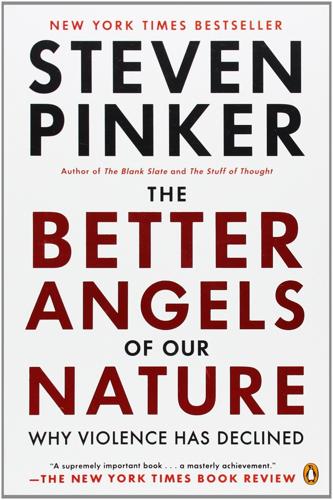
The Better Angels of Our Nature: Why Violence Has Declined
by
Steven Pinker
Published 24 Sep 2012
In some cities, like Boston, the police were accompanied by parole officers who knew the worst troublemakers individually and had the power to have them rearrested for the slightest infraction.164 In New York, police headquarters tracked neighborhood crime reports obsessively and held captains’ feet to the fire if the crime rate in their precinct started to drift upward.165 The visibility of the police was multiplied by a mandate to go after nuisance crimes like graffiti, littering, aggressive panhandling, drinking liquor or urinating in public, and extorting cash from drivers at stoplights after a cursory wipe of their windshield with a filthy squeegee. The rationale, originally articulated by James Q. Wilson and George Kelling in their famous Broken Windows theory, was that an orderly environment serves as a reminder that police and residents are dedicated to keeping the peace, whereas a vandalized and unruly one is a signal that no one is in charge.166 Did these bigger and smarter police forces actually drive down crime? Research on this question is the usual social science rat’s nest of confounded variables, but the big picture suggests that the answer is “yes, in part,” even if we can’t pinpoint which of the innovations did the trick.
…
Once the epitome of urban rot, New York is now one of America’s safest cities, having enjoyed a slide in the crime rate that was twice the national average and that continued in the 2000s after the decline in the rest of the country had run out of steam.167 As the criminologist Franklin Zimring put it in The Great American Crime Decline, “If the combination of more cops, more aggressive policing, and management reforms did account for as much as a 35% crime decrease (half the [U.S.] total), it would be by far the biggest crime prevention achievement in the recorded history of metropolitan policing.”168 What about Broken Windows policing in particular? Most academics hate the Broken Windows theory because it seems to vindicate the view of social conservatives (including former New York mayor Rudy Giuliani) that violence rates are driven by law and order rather than by “root causes” such as poverty and racism. And it has been almost impossible to prove that Broken Windows works with the usual correlational methods because the cities that implemented the policy also hired a lot of police at the same time.169 But an ingenious set of studies, recently reported in Science, has supported the theory using the gold standard of science: an experimental manipulation and a matched control group.
…
Above the bicycles was a prominent sign prohibiting graffiti and a wall that the experimenters had either covered in graffiti (the experimental condition) or left clean (the control condition). When the commuters were in the presence of the illegal graffiti, twice as many of them threw the flyer on the ground—exactly what the Broken Windows theory predicted. In other studies, people littered more when they saw unreturned shopping carts strewn about, and when they heard illegal firecrackers being set off in the distance. It wasn’t just harmless infractions like littering that were affected. In another experiment, passersby were tempted by an addressed envelope protruding from a mailbox with a five-euro bill visible inside it.
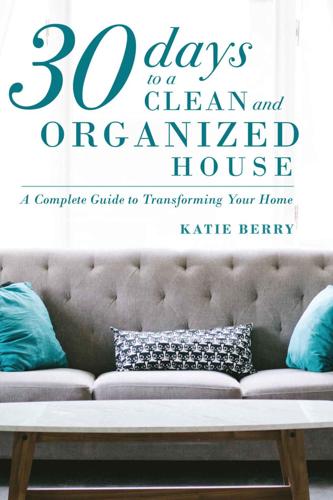
30 Days to a Clean and Organized House
by
Katie Berry
Published 13 May 2014
Well, okay, you are done for today, but that doesn't mean you can ignore your home tomorrow. The key to maintaining what you've accomplished is doing something every day so never gets out of control. It's the regular, daily attention that tells our family that we want them to help keep the home clean. In sociology, this is known as the "broken window theory": if the first sign of disorder or disrepair is ignored (as in, a broken window), it's interpreted as a sign that standards won't be enforced. Before long the entire area falls into decline. That doesn't mean you have to repeat the plan over and over. Instead, use the Monthly Cleaning Routine to keep chaos away.

The Rise and Fall of the Neoliberal Order: America and the World in the Free Market Era
by
Gary Gerstle
Published 14 Oct 2022
The Department of Defense, meanwhile, was accelerating the militarization of local police forces by distributing to them at little or no cost vast supplies of now redundant Cold War–era military equipment. The 1990s was also the decade in which more and more urban police forces adopted the “broken windows” theory of crime articulated in the early 1980s by social scientist James Q. Wilson. The theory posited that the slightest infractions of the law, such as vandalism, loitering, and subway fare evasion, had to be treated with the same seriousness as egregious infractions; minor crimes, left unpunished, inevitably led to a culture of permissiveness that encouraged major ones.100 The same philosophy governed the approach to the war on drugs, with possession of small amounts increasingly punished with tough sentences once reserved for the possession and dealing of large amounts.
…
Before becoming mayor, Giuliani had been federal attorney for the powerful Southern District of New York, where he built a reputation as the nation’s toughest prosecutor, sending Wall Street charlatans, Mafia bosses, and drug lords to jail. As mayor, he and his police commissioner, William Bratton, became the country’s most enthusiastic implementers of Wilson’s broken windows theory. Criticism of Giuliani for his prosecutorial and police excesses was rife, but he was also a popular figure among New Yorkers, who reelected him to a second term.103 Liberty, as we have seen, had long been closely associated with order in the imagination of both classical liberals of the nineteenth century and neoliberals of the twentieth century.
…
For a fuller discussion of mass incarceration and its consequences, see Chapters 4 and 7. 102.Gottlieb, “Yuppies.” 103.For a sympathetic treatment of Giuliani’s mayoralty and rise to power, see Fred Siegel, The Prince of the City: Giuliani, New York, and the Genius of American Life (New York: Encounter Books, 2006). On the deployment of the broken windows theory by then New York City police commissioner William Bratton, see William Bratton and Peter Knobler, Turnaround: How America’s Top Cop Reversed the Crime Epidemic (New York: Random House, 1998). 104.For an early and influential (and mocking) portrait of Yuppies, see David Brooks, Bobos in Paradise: The New Upper Class and How They Got There (New York: Simon and Schuster, 2000). 105.For a sampling of these attacks on Bill and Hillary Clinton, see David Brock, The Seduction of Hillary Rodham (New York: Free Press, 1996).
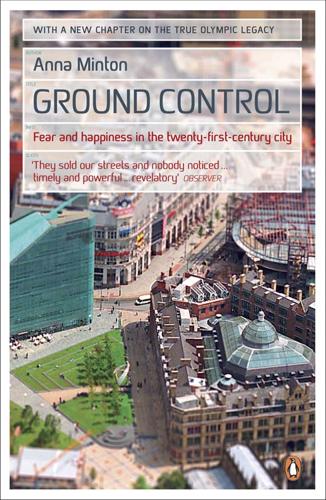
Ground Control: Fear and Happiness in the Twenty First Century City
by
Anna Minton
Published 24 Jun 2009
The starting point for his research was that urban America was witnessing a breakdown in society and that crime was spiralling beyond police control. The only solution, he claimed, was a new form of urban design based on the idea that the design of the environment, rather than social problems, influences behaviour – similar thinking to the Broken Windows theory discussed in Chapter 7 – and that the way to change behaviour was by controlling the environment rather than improving social conditions. In 1973 he published his landmark study, which was entitled Defensible Space: People and Design in the Violent City. His conclusions were based on research showing that high-rise living produced higher crime rates than low-rise housing projects.14 Researching three deprived neighbourhoods, Newman’s main finding was that what he described as ‘territoriality’ creates space which defends itself.
…
The problems connected with antisocial behaviour are real, but what is ironic is that, despite the government’s emphasis, most people are not that concerned by it; only 16 per cent told the British Crime Survey that antisocial behaviour was a ‘fairly big’ or ‘big’ problem in their area.32 That is a very small percentage compared with the whopping 80 per cent of Britons who fear that crime is going up when it isn’t. So why has so much time and energy been spent creating policies on antisocial behaviour in an attempt to tackle the rising fear of crime? Like so many of the policy ideas in this book, the agenda was imported from America and comes down to a theory of crime called the Broken Windows theory. ‘BROKEN WINDOWS’ First outlined by James Q. Wilson and George Kelling in a famous article in Atlantic Monthly in 1982, Broken Windows is a zero-tolerance approach to policing. The article argued that tolerating minor routine incivilities, such as window breaking, begging and drunkenness, increases ‘respectable fears’ and encourages a spiral of community decline.

The Vanishing Neighbor: The Transformation of American Community
by
Marc J. Dunkelman
Published 3 Aug 2014
But, as Sampson’s research indicates, it’s actually more important that community norms—even if they’re established among strangers—maintain a standard of safety and decorum. Disapproving looks from the couple sitting on a park bench, or the good example set by the woman who keeps up her front lawn, have a more powerful effect on a community’s civic health than neighborly ties. And in that, Sampson’s argument echoes James Q. Wilson and George Kelling’s “broken windows” theory, introduced in the early 1980s, which suggested that the implicit sign of disorder sent by an unrepaired pane of glass has the potential to set off a wave of criminality.18 This points to an auspicious element of networked community. If vitality doesn’t go hand in hand with the middle rings, then a society full of vibrant networks—even if they’re made up of hermits—might well signal an important step forward.
…
abortion, 69, 114, 116 Abrams, Samuel, 139 academic scholarship, data in, 6–7 “adjacent possible,” 159 adolescents, 28–31, 215, 217, 224 sexual orientation of, 43 shift of social capital from middle rings by, 120–24 advertising, 38, 60, 102–3 advocacy organizations, 116–18 affluence, 48, 52–55, 67, 72, 83 affirmation, search for, 102–12, 126, 138 outer-ring relationships and, 107–12, 115 trade-offs and, 112, 115 African Americans, 79, 111, 137, 146 civil rights movement and, 23–24, 108–9 in Great Migration, 40–41, 43, 137 in interracial marriage, 68 agriculture, 15, 16, 20, 53, 82, 84, 233, 260n airlines, airports, xi, 25, 230 Alfa Romeo, 172 Allentown, Pa., 170–74 al Qaeda, 56 Alzheimer’s disease, 199–200, 206–7 American Age (American Century), unwinding of, xiv–xv, xviii, 152–53 American character, 11, 67, 213–14 undermining of, 4, 65, 72–73 American Dream, xiv, xviii, xx, 3, 21, 32, 65, 75, 83, 226–27, 235, 240 American exceptionalism, xiv, xviii, 82, 142, 177, 226–41 American Idol (TV show), 36–37 American Revolution, xii, xix, 81, 151, 157–58, 194, 247n Americorps, 213 Amherst, Sir Jeffrey, 157 anthropologists, 90–97 Apple, 10, 173, 64, 160 assembly lines, 53, 85 assisted-living facilities, 197, 203 Associated Press, 185 Atlanta, Ga., 136–37 Atlantic, 46, 199 Aung San Suu Kyi, 64 authenticity, personal, 64–66 automobile industry, 10, 172, 175, 205 autonomy, 68, 73 baby boomers, 6, 28, 127, 133, 197, 198, 205 bands (overnight camps), 92, 94, 95, 96 banks, xv, xvii, 180, 181 Barbados, 179–81, 191 basketball, 8–9, 11–12 Bell, Daniel, 249n Bellah, Robert, 65–66, 73, 81 Bell Labs, 164, 173 belongingness, 4–5, 74, 110 Bender, Thomas, 83–84, 138 Berg, Joel, 62 Beverly Hillbillies, The (TV show), 36 “be yourself,” 63–66, 73–74, 102–3, 149, 218 bigotry, 117, 149, 237 Big Sort, The (Bishop with Cushing), 48, 50, 95, 135, 147, 238 Big Three, the, 8–9 bin Laden, Osama, 56 biology, 90–94 Bipartisan Policy Center, 188–89 Birmingham, England, 166–67 Bishop, Bill, 47–48, 95, 124, 135, 147, 184, 189, 238 Bissell, Cassandra, 140 blacks, see African Americans blogs, 36, 37, 109–10, 187 Bosh, Chris, 8–9 Boston, Mass., 33, 55, 84 Bowling Alone (Putnam), 7, 97, 99–100, 113–16, 119, 120, 134–35, 141, 149, 151–52, 192, 193 brain, 90–92, 94, 98, 121, 143, 144–45, 223–24 Brazil, 178–79, 267n Brokaw, Tom, 70 “broken windows” theory, 150 Brooks, David, 46–47, 48, 229 Brown University, 163 budget, federal, xv–xvi Buffalo, N.Y., ix–xi, xviii, 97, 136, 137, 170, 196–97, 240 Buffett, Warren, 27 bureaucracy, 16, 52, 110, 194, 202, 203, 204, 206, 210 Burke, Edmund, 81, 232 Burt, Ronald, 165, 168, 266n buses, 33–35 Bush, George W., 47, 54, 67, 184, 255n business, xvii, 10, 16, 52, 131–32, 163–68, 175–76, 235 in Barbados vs.

The Singularity Is Nearer: When We Merge with AI
by
Ray Kurzweil
Published 25 Jun 2024
With violent crime in the United States spiking to all-time highs by the early 1980s, criminologists started looking for new solutions. Scholars George Kelling and James Q. Wilson observed that low-level crime like graffiti and vandalism made communities feel unsafe and made some people believe they could get away with more serious and violent crimes.[162] This idea came to be called the “broken windows theory,” and it influenced a new trend in policing that emphasized stopping those minor offenses as a way of preventing more serious crime. This was combined with a shift toward other, more proactive approaches to crime prevention, such as increased foot patrols in high-crime neighborhoods and smarter data-driven modeling of how police resources could be most effectively employed.
…
v=wJUXLqNHCaI; German Lopez, “The War on Drugs, Explained,” Vox, May 8, 2016, https://www.vox.com/2016/5/8/18089368/war-on-drugs-marijuana-cocaine-heroin-meth; PBS, “Thirty Years of America’s Drug War: A Chronology,” Frontline, accessed April 28, 2023, https://www.pbs.org/wgbh/pages/frontline/shows/drugs/cron; Bureau of Justice Statistics, “Key Facts at a Glance: Homicide Rate Trends.” BACK TO NOTE REFERENCE 161 For more on broken windows theory and proactive policing, see George L. Kelling and James Q. Wilson, “Broken Windows: The Police and Neighborhood Safety,” Atlantic, March 1982, https://www.theatlantic.com/magazine/archive/1982/03/broken-windows/304465/?single_page=true; “Broken Windows Policing,” Center for Evidence-Based Crime Policy, accessed April 28, 2023, https://cebcp.org/evidence-based-policing/what-works-in-policing/research-evidence-review/broken-windows-policing [inactive]; Shankar Vedantam et al., “How a Theory of Crime and Policing Was Born, and Went Terribly Wrong,” NPR, November 1, 2016, https://www.npr.org/2016/11/01/500104506/broken-windows-policing-and-the-origins-of-stop-and-frisk-and-how-it-went-wrong; National Academies of Sciences, Engineering, and Medicine, Proactive Policing: Effects on Crime and Communities (Washington, DC: National Academies Press, 2018), https://doi.org/10.17226/24928; Kevin Strom, Research on the Impact of Technology on Policing Strategy in the 21st Century, Final Report (Research Triangle Park, NC: RTI International, 2017), https://www.ncjrs.gov/pdffiles1/nij/grants/251140.pdf.
…
See neocortex neural implants, 92–93 processing speed, 61–62 size of, 34, 246 brain-computer interface, 4, 8, 11–12, 171, 233, 263–65 dialogue with Cassandra, 287–92 extending neocortex into the cloud, 9–10, 68, 69–73, 222, 228–29, 290–91 Neuralink, 70–71, 244, 328n transferring consciousness, 87, 90–94, 103–5, 108–9 “You 2” conscious, 90–94, 102, 103 BrainGate, 70 brain prostheses, 92–93 brain scans, 69–70 broadband, 113 broadcast architecture, 249, 252, 261, 276 broken windows theory, 150 Bronze Age, 250 Brown University, 71 Brynjolfsson, Erik, 207–11, 211 bubonic plague, 271 Buddha, 267 buildings, 3D printing of, 170, 187–89 butadiyne, 251 Butler, Samuel, 75–76 C cable TV, 220–21 California, automation and jobs, 197 Calment, Jeanne, 255 Cambridge Declaration on Consciousness, 78 Campaign to Stop Killer Robots, 281–82 Canada poverty rate, 117 social safety net, 223, 223 cancer AI and, 278–79 biosimulation and, 190–91, 192, 241 detection, 243 immunotherapy for, 190, 227, 239 life extension and, 134, 135, 190–91, 192, 255, 256–57, 260 nanotechnology for, 255, 256–57, 260 capital and labor, 209–10 carbon, 7, 81, 96, 250, 275 carbon dioxide, 185, 192, 259 carbon emissions, 170, 185 cars, self-driving, 43, 171, 195–96, 208–9, 214, 229–30, 253.

Remote: Office Not Required
by
Jason Fried
and
David Heinemeier Hansson
Published 29 Oct 2013
It’s never a good idea to let poisonous people stick around to spoil it for everyone else, but in a remote-work setup it’s deadly. When you’re a manager and your employees are far flung, it’s impossible to see the dread in their eyes, and that can be fatal. With respect to drama, it therefore makes sense to follow the “No Broken Windows” theory of enforcement. What are we talking about? Well, in the same way that New York cracked down in the ’90s on even innocuous offenses like throwing rocks through windows or jumping the turnstile, a manager of remote workers needs to make an example of even the small stuff—things like snippy comments or passive-aggressive responses.
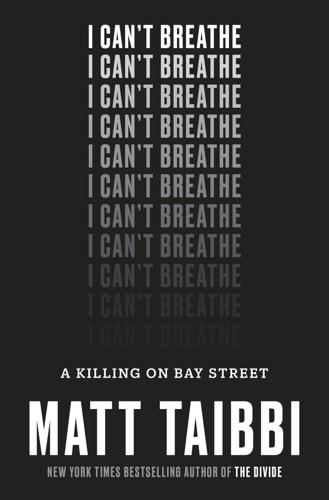
I Can't Breathe
by
Matt Taibbi
Published 23 Oct 2017
This used the preposterously aggressive technique of blasting certain areas of subway stations at odd hours with water from high-powered hoses. Ostensibly designed to clean the subway stations, the hoses’ actual objective was to blast away the people who were using those stations at odd hours—which meant the homeless. George Kelling opposed the tone-deaf Commando program. This was a real chance to try out his Broken Windows theory in the biggest city in America, and he didn’t want it going sideways. He insisted that any program that stereotyped people instead of focusing on behavior was wrong and in any event would be opposed by the police asked to do those jobs. Kelling was anxious to keep Broken Windows from turning into a symbol of thuggery and state-sanctioned racism.
…
Kelling, unwittingly perhaps, had set in motion a massive government program that would be warped from the beginning by a chilling syllogistic construct: New Yorkers who are afraid of crime are already victims. Many New Yorkers are scared of black people. Therefore, being black is a crime. — In 1994, the newly elected Rudy Giuliani empowered Bill Bratton to run America’s largest police force. Bratton not only committed his army to George Kelling’s Broken Windows theory but to a separate mania that belonged much more to him personally: statistics. The academic in George Kelling spent a lot of time thinking about more amorphous issues, like how safe people did or didn’t feel under certain kinds of police strategies. The hard-charging, macho Bratton was more intensely interested in counting the progress of cops.
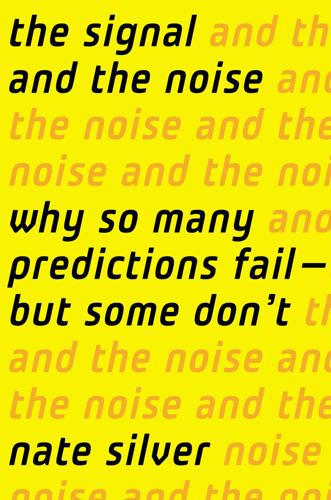
The Signal and the Noise: Why So Many Predictions Fail-But Some Don't
by
Nate Silver
Published 31 Aug 2012
Signals that point toward such large attacks should therefore receive a much higher strategic priority. This mathematical argument for a focus on larger-scale threats cuts somewhat against the day-to-day imperatives of those who are actively involved in homeland security. In 1982, the social scientists James Q. Wilson and George L. Kelling introduced what they called the “broken windows” theory of crime deterrence.71 The idea was that by focusing on smaller-scale types of crime, like vandalism and misdemeanor drug offenses,72 police could contribute to an overall climate of lawfulness and therefore prevent bigger crime. The empirical evidence for the merit of this theory is quite mixed.73, 74 However, the theory was very warmly embraced by police departments from Los Angeles to New York because it lowered the degree of difficulty for police departments and provided for much more attainable goals.
…
The empirical evidence for the merit of this theory is quite mixed.73, 74 However, the theory was very warmly embraced by police departments from Los Angeles to New York because it lowered the degree of difficulty for police departments and provided for much more attainable goals. It’s much easier to bust a sixteen-year-old kid for smoking a joint than to solve an auto theft or prevent a murder. Everybody likes to live in a cleaner, safer neighborhood. But it’s unclear whether the broken-windows theory is more than window dressing. Likewise, the ever more cumbersome requirements for commercial flights fall into the category of what the security expert Bruce Schneier calls “security theater”75—they are more for show than to actually deter terrorists. It’s by no means completely irrational to be worried about airport security; airplanes have been the subject of a large number of terror attacks in the past, and terrorism can have a copycat element.76 Yet even accounting for crashes that had nothing to do with terrorism, only about one passenger for every twenty-five million was killed on an American commercial airliner during the decade of the 2000s.77 Even if you fly twenty times per year, you are about twice as likely to be struck by lightning.
…
Murrah Federal Building, 425 algorithms, 265, 426 all-in bet, 306 Allison, Graham, 433–35 Al Qaeda, 422, 424, 425, 426, 433, 435–36, 440, 444 Alzheimer’s, 420 Amazon.com, 352–53, 500 American exceptionalism, 10 American Football League (AFL), 185–86, 480 American League, 79 American Stock Exchange, 334 Amsterdam, 228 Anchorage, Alaska, 149 Anderson, Chris, 9 Angelo, Tommy, 324–26, 328 animals, earthquake prediction and, 147–48 Annals of Applied Statistics, 511–12 ANSS catalog, 478 Antarctic, 401 anthropology, 228 antiretroviral therapy, 221 Apple, 264 Archilochus, 53 Arctic, 397, 398 Arianism, 490 Aristotle, 2, 112 Armstrong, Scott, 380–82, 381, 388, 402–3, 405, 505, 508 Arrhenius, Svante, 376 artificial intelligence, 263, 293 Asia, 210 asset-price bubble, 190 asymmetrical information, 35 Augustine, Saint, 112 Australia, 379 autism, 218, 218, 487 availability heuristic, 424 avian flu, see bird flu A/Victoria flu strain, 205–6, 208, 483 Babbage, Charles, 263, 283 Babyak, Michael, 167–68 baby boom, 31 Babylonians, 112 Bachmann, Michele, 217 bailout bills, 19, 461 Bak, Per, 172 Baker, Dean, 22 Bane, Eddie, 87 Bank of England, 35 Barbour, Haley, 140 baseball, 9, 10, 16, 74–106, 128, 426, 446, 447, 451n aging curve in, 79, 81–83, 81, 83, 99, 164 betting on, 286 luck vs. skill in, 322 minor league system in, 92–93 results in, 327 rich data in, 79–80, 84 Baseball America, 75, 87, 89, 90, 90, 91 Baseball Encyclopedia, 94 Baseball Prospectus, 75, 78, 88, 297 basic reproduction number (R0), 214–15, 215, 224, 225, 486 basketball, 80n, 92–93, 233–37, 243, 246, 256, 258, 489 batting average, 86, 91, 95, 100, 314, 321, 321, 339 Bayer Laboratories, 11–12, 249 Bayes, Thomas, 240–43, 251, 253, 254, 255, 490 Bayesian reasoning, 240, 241–42, 259, 349, 444 biases and beliefs in, 258–59 chess computers’ use of, 291 Christianity and, 490 in climatology, 371, 377–78, 403, 406–7, 407, 410–11 consensus opinion and, 367 Fisher’s opposition to, 252 gambling esteemed in, 255–56, 362 priors in, 244, 245, 246, 252, 255, 258–59, 260, 403, 406–7, 433n, 444, 451, 490, 497 stock market and, 259–60 Bayes’s theorem, 15, 16, 242, 243–49, 246, 247, 248, 249, 250, 258, 266, 331, 331, 448–49, 450–51 in poker, 299, 301, 304, 306, 307, 322–23 Beane, Billy, 77, 92, 93–94, 99–100, 103, 105–7, 314 Bear Stearns, 37 beauty, complexity and, 173 beer, 387, 459 behavioral economics, 227–28 Belgium, 459 Bellagio, 298–99, 300, 318, 495 bell-curve distribution, 368n, 496 Bengkulu, Indonesia, 161 Benjamin, Joel, 281 Berlin, Isaiah, 53 Berners-Lee, Tim, 448, 514 BetOnSports PLC, 319 bets, see gambling Betsy, Hurricane, 140 betting markets, 201–3, 332–33 see also Intrade biases, 12–13, 16, 293 Bayesian theory’s acknowledgment of, 258–59 in chess, 273 and errors in published research, 250 favorite-longshot, 497 of Fisher, 255 objectivity and, 72–73 toward overconfidence, 179–83, 191, 203, 454 in polls, 252–53 as rational, 197–99, 200 of scouts, 91–93, 102 of statheads, 91–93 of weather forecasts, 134–38 Bible, 2 Wicked, 3, 13 Biden, Joseph, 48 Big Data, 9–12, 197, 249–50, 253, 264, 289, 447, 452 Big Short, The (Lewis), 355 Billings, Darse, 324 Bill James Baseball Abstract, The, 77, 78, 84 bin Laden, Osama, 432, 433, 434, 440, 509 binomial distribution, 479 biological weapons, 437, 438, 443 biomedical research, 11–12, 183 bird flu, 209, 216, 229 Black, Fisher, 362, 367, 369 “Black Friday,” 320 Black Swan, The (Taleb), 368n Black Tuesday, 349 Blanco, Kathleen, 140 Blankley, Tony, 50 Blodget, Henry, 352–54, 356, 364–65, 500 Blue Chip Economic Indicators survey, 199, 335–36 Bluefire, 110–11, 116, 118, 127, 131 bluffing, 301, 303, 306, 310, 311, 328 Bonus Baby rule, 94 books, 2–4 cost of producing, 2 forecasting and, 5 number of, 2–3, 3, 459 boom, dot-com, 346–48, 361 Boston, 77 Boston Red Sox, 63, 74–77, 87, 102, 103–5 Bowman, David, 161–62, 167 Box, George E. P., 230 Brady, Brian, 158, 159 brain, information storage capacity of, 12 breadth, depth vs., 271–73 breast cancer, 245–46, 246, 248, 250 Brier score, 474 British Medical Journal, 254 “broken windows” theory of crime, 439 Brown, Shawn, 226 Brownian noise, 173 Bryant, Kobe, 233–34, 237 bubbles, 38, 195, 333, 356, 357, 369–70 credit, 68, 196 difficulty of bursting, 360, 362, 367 dot-com, 346–48, 361 efficient-market hypothesis and, 346–52 housing, see housing bubble real-time identification of, 347–48, 369–70 signals of, 366 Buchanan, Pat, 48, 50 bugs: in Deep Blue, 283, 285, 286, 288–89 in models, 285–86 Bulgaria, 52 Bureau of Economic Analysis, 481 Bush, George H.
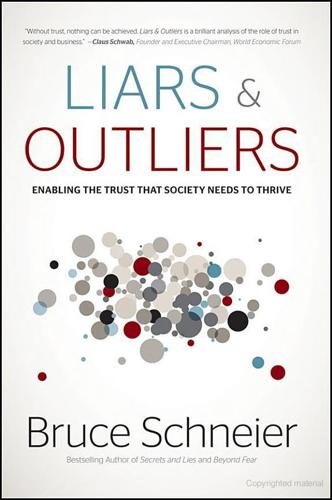
Liars and Outliers: How Security Holds Society Together
by
Bruce Schneier
Published 14 Feb 2012
The entire phrase is “one bad apple spoils the entire bunch,” and is intended to explicitly highlight how the reputation of one person can taint the reputation of all people in the group. Incidentally, this is actually true for apples stored in a root cellar. A spoiled apple will cause the rest of the apples to spoil. (14) The logical extreme of this idea is the “broken windows theory” of John Q. Wilson and George Kelling, that visible signs of criminal activity like broken windows and abandoned cars actually incite people to commit crimes. Wilson and Kelling believed that if you clean up these visible signs of lawlessness, a neighborhood will become safer overall; societal pressures against petty crime will cause a reduction in violent crime.
…
Lynn (2000), “Method and Apparatus for Helping to Ensure the Washing of Hands,” U.S. Patent #6,031,461. John M. Lynn (2000), “Method and Apparatus for Helping to Ensure the Washing of Hands,” U.S. Patent #6,147,607. Fiona A. Lynn and John M. Lynn (2001), “Method and Apparatus for Helping to Ensure the Washing of Hands,” U.S. Patent #6,211,788. broken windows theory James Q. Wilson and George L. Kelling (Mar 1982), “Broken Windows,” Atlantic Monthly, 127:29–38. George L. Kelling (17 Jul 2009), “How New York Became Safe: The Full Story,” City Journal. Researchers compared Khaled Taqi-Eddin and Dan Macallair (1999), “Shattering Broken Windows: An Analysis of San Francisco's Alternative Crime Policies,” Justice Policy Institute.

Adam Smith: Father of Economics
by
Jesse Norman
Published 30 Jun 2018
Graffiti, for example, can be the result of an artistic calling; a heedless act irrespective of the beliefs or interests of others; a deliberate attempt to annoy and provoke; or it can reflect a principled belief that a particular public space should be contested in some way. The result may be a stable but inefficient and anti-social equilibrium. The well-known ‘broken windows’ theory reflects the insight that minor disorder tends to escalate unless tackled, and (more controversially) claims that serious crime can be prevented as a result. Different subcultures can vary widely in the norms they obey. In October 2002, the Clinton–Schumer Amendment allowed the city of New York to tow illegally parked diplomatic vehicles, revoke diplomats’ United Nations parking permits and deduct 110 per cent of the total amount of any fines due from US aid given to the country of origin.
…
See standing army Arrow, Kenneth, 193–195, 205–206, 213, 222, 244 Arrow securities, 244 Asia, 274–275, 330 Asquith, Herbert, 23 asset markets, 247–249, 252 assets, of moral identity, 303 asymmetries, of power, 282–283, 285 Austria, 69 Ayr Bank crisis, 89, 91–93, 99–100, 174, 253 Bacon, Francis, 163 The Masculine Birth of Time by, 214 natural philosophy of, 164–165 The New Atlantis by, 164 on science, 166 Bagehot, Walter, 277 Balliol, 23–26 Bank of England, 92 banking system international, 259–260 loans in, 249–250 regulation of, 254 in Scotland, 88–89, 91–92 banks capital and, 108 financial products of, 250 lobbying by, 261 regulation of, 254, 259 rent-extraction by, 260–261 See also Ayr Bank crisis Becker, Gary, 215 behaviour, 169–170, 196, 209, 222 human, 29, 197 in markets, 236–237 The Theory of Moral Sentiments on, 201 The Wealth of Nations on, 221 benevolence, 56–57 bent markets, 283–284 Bentham, Jeremy, 21, 198, 201 Berkeley, Bishop, 25 big data, 281–282 bills of exchange, 92–93 birth, of Smith, A., 4 Black, Joseph, 126–127, 136–137, 152, 169 Blackstone, William, 100 Blair, Hugh, 124 Boston Tea Party, 103 Boswell, James, 6, 51–52, 127–128, 132, 154–155 Bradstreet, Dudley, 35 Bretton Woods Agreement, 252 Breyer, Stephen, 258 Britain. See England broken windows theory, 309 Brougham, Henry, 200 Brown, Gordon, xi Buccleuch, Duke of, 81–84, 86–88, 91, 93, 132 Buchanan, James, 271 Buffett, Warren, 224–225 Burke, Edmund, xv–xvi, 66, 101, 125, 138–140, 150, 258 Burns, Robert, 60–61 Butler, Bishop, 76 Calas, Jean, 83, 288–291 campaign finance law, 258 Canongate Church, 133 capital accumulation, 181–182 banks and, 108 in cash account, 89 circulating, fixed, 110 in markets, 273–274 money and, 91–92, 108 services in, 111 shortage, in Scotland, 89, 91 Capital in the Twenty-First Century (Piketty), 259 capitalism, 258–259, 265 commercial society and, 325–326 corporate, 267 equality and, 273–276 franchise, khaki, licence, 263 globalization and, 287 monopoly, 263 wealth-creation in, 275, 321 See also crony capitalism; narco-capitalism cases, effects and, 44 cash account, 89, 92 Catholicism, 31–32, 83, 163–164, 183, 288–289 Cato (Addison), 8 Charles I (king), 47 Charles II (king), 12 church funding, 120–121 state and, 120–121 Church of England, 22 Church of Scotland, 18, 127 circulating capital, 110 Citizens United v.

The Lonely Century: How Isolation Imperils Our Future
by
Noreena Hertz
Published 13 May 2020
In Philadelphia and in twenty other US metropolitan areas, street lights outside recreation centres are fitted with small devices, aptly named Mosquitoes, which emit an unpleasant high-pitched sound that can be heard only by young people, as the frequencies are no longer audible to their elders (this is due to a process called presbycusis, in which certain ear cells die off over time).9 The goal of these Mosquito devices is, according to the president of the company that makes them, to ‘ward off’ unruly, ‘loitering’ teenagers while conveniently keeping areas pleasant for adults.10 It’s for similar reasons that pink lights designed to highlight uneven skin and acne have been installed in public places around the UK – an ‘anti-loitering strategy’ designed with the hope that vain teenagers will disperse once their pimples and blemishes are exposed.11 According to one Nottingham resident who was at first ‘dubious’ of the concept, ‘it’s done the trick’.12 Although one can argue that hostile architecture is not a new phenomenon – think of moats around castles and ancient cities’ defensive walls – its modern incarnation has its roots in the ‘broken windows’ policing of the 1980s US, when everyday activities such as standing, waiting and sleeping (especially when ‘committed’ by people of colour) began to be criminalised as ‘disorderly’ and ‘antisocial’.13 Preventing these behaviours, the logic went, would make a space more ‘orderly’ and, in convincing locals to ‘claim their public spaces’, would also prevent crime.14 Hence, hanging out became ‘loitering’, sleeping on the street became ‘improper lodging’, dawdling became ‘loafing’, people-watching became ‘lurking’.15 The fact that the broken-windows theory has been revealed to be highly flawed – responsible for the over-policing of minorities16 and an ineffective deterrent for more serious crimes – has not stopped many cities from continuing to rely on its strategies.17 The result is that over the past fifteen years, cities around the globe are increasingly sprouting spikes.
…
Gilbert here Barcelona here Batson, Daniel here Baylis Old School complex here BBC here Beecroft, Nicholas here Belgium here, here Berlin here Bezos, Jeff here Bhutan here Black Mirror here, here Blair, Tony here Blond, Oliver here Bloodworth, James here, here, here Bloomberg News here Blücher, Heinrich here ‘Blue Zones’ here BOMP (A Belief that Others are More Popular) here Boston College here Bradlee, Ben here Brahnam, Cheryl here Brain Dynamics Institute (University of Chicago) here Brewster, David here Bridgewater Associates here Bristol here Broghammer, Francie Hart here broken-windows theory here Brooker, Charlie here, here Brown, Kelsey here Buettner, Dan here Business Roundtable here Cacioppo, John here, here Calland, Chris here, here Camden Bench here Canada here, here Carpenter, Julie here causes of loneliness social media here, here racism here sexism here in cities here employment here decline of communal spaces here neoliberalism here, here Center for the Study of Elections and Democracy here Centrica here Chan, Jenny here Chernichovsky, Dov here children see also young people effect of parental smartphone use on here effect of screen time on here screen-free initiatives here and social robots here, here Chicago here China loneliness amongst older people here rise of individualism in here link between loneliness and mental health here city life in here, here work in here, here, here, here sexual activity of young people here Chinese Academy of Sciences here Christakis, Nicholas here Cisco here cities as cause of loneliness here example of loneliness in here historic loneliness in here prevalence of loneliness in here reasons for loneliness in here negative politeness cultures in here pace of life in here micro-interactions in here transient nature of here solo living in here eating alone in here lack of ‘democratic skills’ here contactless spaces in here hostile architecture in here segregation in here communal spaces in here revitalisation projects here citizen’s assemblies here City Index Survey here Clinton, Bill here Clinton, Hillary here, here, here co-living spaces here, here, here co-working spaces here, here, here Coachella festival here, here Coleridge, Samuel Taylor here, here Coleridge, Sara here Cole, Steve here communal spaces loss of as cause of loneliness here segregation in here decline in cities here initiatives for use of here revival of here examples of revival here restoration of here communication skills here community within Haredi community here health benefits of here, here and rise of populism here and communal eating here commercial co-opting of here inclusivity in here, here initiatives for here mandatory programmes for here contact, personal need for here robots for here contactless spaces here Cook, Tim here Cooper, Marianne here Corbat, Michael here Covid-19 and increased loneliness here effect on mental health here and populism here, here and contactless spaces here community responses to here smartphone use during here video-calling during here in open-plan workplaces here workers rights during here and Loneliness Economy here political response to here response of Amazon here craftjams here Cronin, Kerry here Cruz, Reynalda here, here Cruz, Ted here Cullen, William here cyberbullying here Daimler here Dalio, Ray here Darley, John here dating skills here De Quincey, Thomas here Deep, Shannon here definition of loneliness here Denmark here ‘Deutschland Spricht’ (‘Germany Talks’) programme here Die Zeit 240–1 disconnection from politics here and rise of populism here proposals to tackle here Dodd, Sarah here Dubai here Dunn, Elizabeth here Duplex (voice assistant) here Durkheim, Emile here Duterte, Rodrigo here Durkheim, Émile here Dwyer, Johnny here eating alone here, here economics see also work impact of loneliness on here neoliberal as cause of loneliness here and Loneliness Economy here commercial co-opting of community here solutions to loneliness crisis here Elektro (robot) here Eliot, George here ElliQs (robots) here Emanuel, Rahm here, here Emma (robot) here Emmanuel, Anton here, here empathy here Empathy Effect, The (Riess) here employment see work Endicott, Katie here Erdogan, Recep Tayyip here Eros, Ade here escape rooms here Europe prevalence of loneliness in here populism in here, here attitudes to migration here solo living in here work in here, here, here European Commission here European Social Survey here European Union here, here, here, here, here Facebook Effect, The (Kirkpatrick) here Feldman, Hazel here, here festivals here, here Financial Times here Flippy (robot) here FOMO see BOMP Forbes here Ford, Henry here France distrust in here populism in here, here work in here, here community service in here Frey, Carl here Furhat (robot) here Future of Work programme here Garner, Simon here Gates, Bill here Germany Covid-19 lockdown in here prevalence of loneliness in here populism in here, here, here city life in here work in here ‘Deutschland Spricht’ (‘Germany Talks’) programme here Ghana here Gibbons, Joey here Gidron, Noam here gig economy here, here Gilman, Charlotte Perkins here Glastonbury festival here, here Gordon, Margaret here Great Good Place, The (Oldenburg) here Grenfell Tower here Griggins, Sharon here Guangzhou here Guardian here, here Haekjji here Hall, Peter A. here Hamai, Koichi here Haredi community here Harmony (robot) here, here Harvard Business School here Harvard Study of Adult Development here Haselager, Pim here health see also mental health impact of loneliness on here, here, here within Haredi community here benefits of community here, here benefits of helpfulness here Heisler, Karen here, here helpfulness here Henry (robot) here Hermes here Hill, Andrew here Hirevue here, here, here, here Hogg, Thomas Jefferson here Homecoming (film) here homelessness here, here Honeyman, Gail here Hong Kong here hostile architecture here hostility created by loneliness here ‘How We Gather’ project here Hungary here Huxley, Aldous here I’d Blush If I Could (United Nations report) here immigration see racism inclusivity in communities here, here India here, here individualism here inequality as cause of loneliness here in work here proposals to tackle here Institute for Social Research (University of Michigan) here intolerance here Ishikawa, Masatoshi here Italy here, here, here James, Letitia here Japan Rent-a-Friend in here loneliness amongst older people here mukbang in here work in here social robots in here sexual activity of young people here Jenner, Kendall here Jobs, Steve here, here Jones, Matt here J.P.

Vanishing New York
by
Jeremiah Moss
Published 19 May 2017
With his zero-tolerance and quality-of-life campaigns, based on broken-windows theory and backed by a paramilitarized police force, the “Mussolini of Manhattan” inflicted severe damage on New York’s unruly spirit. Giuliani went after squeegee men, panhandlers, graffiti writers, street artists, newsstand owners, and hot dog vendors—in a move that spurred the Times to accuse the mayor of “making war on the New Yorkness of New York City.” His NYPD cruised through gentrifying parts of town and cracked down on minor infractions, like drinking a beer or urinating on the sidewalk. In broken-windows theory, it is believed that if you control small acts of disobedience, you can prevent more serious crimes.
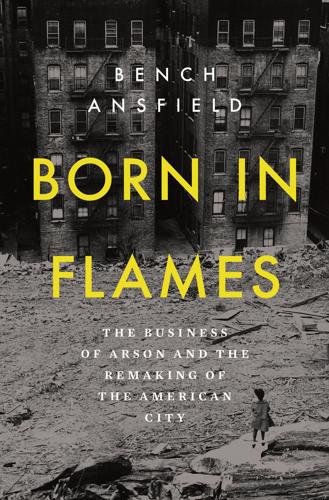
Born in Flames
by
Bench Ansfield
Published 15 Aug 2025
Barely any context was needed to evoke the familiar South Bronx images of arson, rubble, depopulation, and violence, and indeed, Wilson and Kelling gave little of their own: “Because of the nature of community life in the Bronx—its anonymity, the frequency with which cars are abandoned and things are stolen or broken, the past experience of ‘no one caring’—vandalism begins much more quickly than it does in staid Palo Alto, where people have come to believe that private possessions are cared for, and that mischievous behavior is costly.”55 In the opposition created by Wilson and Kelling, the Bronx and its residents were the “thousand broken windows” to Palo Alto’s one. The danger was metastasis—the creation of many Bronxes—by way of small manifestations of disorder. In Wilson and Kelling’s narration, one broken window had rendered “staid Palo Alto” lawless, a mirror image of what should have been its inverse, the Bronx. Here, in the introduction of the broken windows theory to the nation and the world, the Bronx served as a racialized landscape of death and destruction that threatened to encroach upon the rest of the country. The borough thus loomed over the Atlantic Monthly article as a possible future, one that could be prevented only by embracing the authors’ proposed new regime of policing.
…
“There’s no hope for the southerly areas unless the northern areas win their fight to stop the spread of decay,” he cautioned in 1975. In warning about the metastasis of the problems facing the South Bronx, Brant risked conveying the same racial logic that would undergird Fort Apache, the Bronx and the broken windows theory of policing. Many of the neighborhoods organized by the NWBCCC in the 1970s had experienced less white flight than their counterparts to the south. In the words of Harry DeRienzo, who cut his teeth organizing with the NWBCCC, the coalition “was intent upon stopping the ‘South Bronx’ with its violence and fires (and, perhaps, its residents), from spreading any further north.”
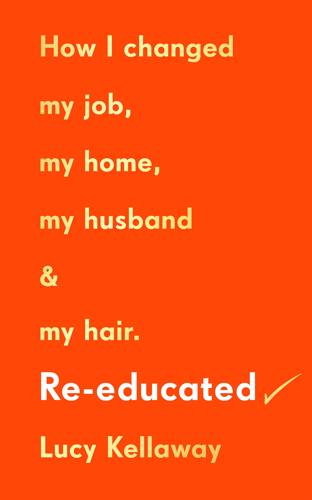
Re-Educated: Why It’s Never Too Late to Change Your Life
by
Lucy Kellaway
Published 30 Jun 2021
The entire teaching staff prowl up and down reprimanding children whose ties are not tied tightly enough or whose backpacks are not neatly placed on the ground by their right heel. One boy is so scared he leaves the line to throw up by the basketball hoops. The teachers assure me this happens every year, and don’t seem too troubled by it. I’m feeling a bit like throwing up myself. I also feel torn. The school is built on the broken windows theory of policing – pupils who get yelled at for putting their hands in their pockets are less likely to throw desks or stab each other. They are more likely to do the homework, get decent results and have a better start in life. I get that and I strongly approve. But then I look at the vomiting child: is this the best way to deal with children who are nervous about their first day of school?

So You've Been Publicly Shamed
by
Jon Ronson
Published 9 Mar 2015
Gladwell’s essay was a sensation - one of the most influential articles in the magazine’s history. It sold the aggressive policing tactic to thoughtful, liberal New York City people - the sorts of people who wouldn’t normally support such a draconian idea. He gave a generation of liberals permission to be more conservative. He became a marketing tool for the Broken Windows theory. His book The Tipping Point went on to sell two million copies, launching his career and the careers of the countless other pop-science writers who followed in his footsteps, like Jonah Lehrer. But Gladwell’s essay was wrong. Subsequent data revealed that violent crime had been dropping in New York City for five years before Broken Windows was implemented.
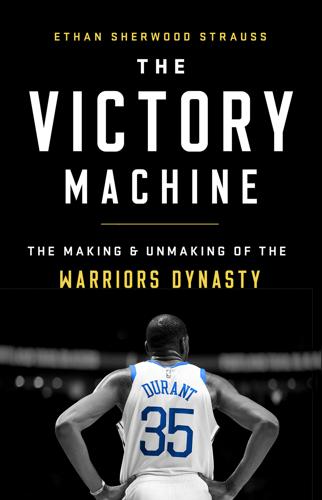
The Victory Machine: The Making and Unmaking of the Warriors Dynasty
by
Ethan Sherwood Strauss
Published 13 Apr 2020
The pickup games moved to the Warriors practice court, a place at a remove from the business side. Given that division, one in which Ops towered over business in prestige, prioritizing the business side might have been a curious strategy. Doubly so, considering how the Warriors’ issues were thought to be mostly basketball related. It was something like an organizational broken window theory, as dictated by venture capitalists. Lacob believed that incompetence on the business side and elsewhere informed a general lack of cohesion. In September 2011, the well-regarded Rick Welts was brought on from the Phoenix Suns to be chief operating officer. He would soon be tasked with the herculean goal of building a basketball arena in San Francisco, a task he would complete.
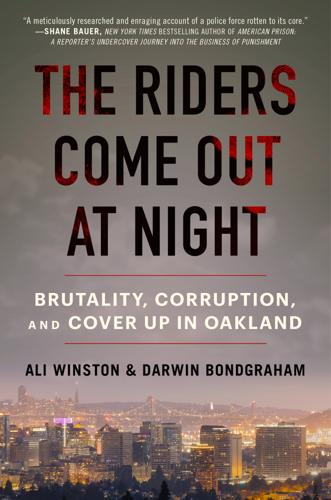
The Riders Come Out at Night: Brutality, Corruption, and Cover-Up in Oakland
by
Ali Winston
and
Darwin Bondgraham
Published 10 Jan 2023
Hart assigned Lieutenant Peter Sarna to work with businesses, developers, and community groups to put uniformed and plainclothes foot patrols and cops on dirt bikes on the streets. They overhauled municipal codes to ban loitering in certain areas of downtown. An entire new platoon, including a full Special Duty Unit (SDU III), was created to shore up Oakland’s unique version of what is known as the broken-windows theory of policing.59 Despite the SDU’s high levels of arrests, the OPD acknowledged that it was merely conducting triage. Suppressing the drug trade and preventing another Mitchell-like empire from emerging was the best it could do.60 Conversely, the department’s campaign against street dealing and quality-of-life offenses prompted sustained complaints from some African American residents about harassment, and a series of racial-profiling lawsuits filed by Jim Chanin and Oliver Jones.61 Officers were “given a mandate to pounce on anything that even smelled of violence or criminal activity,” according to one newspaper account.62 Black and brown Oaklanders took exception and complaints about police conduct increased sharply, from forty-seven in 1988 to sixty-two in 1991.63 “The department’s main problem is with its strategy of so-called proactive policing,” wrote the scholar Skolnick.
…
.; Seale, Bobby Grove Street headquarters in Oakland, 135, 139–40, 181 Oakland political class vs., 125–28, 133–34 Oakland underworld and, 159–62 OPD counterinsurgency operation and, 134–37 origins at Merritt College, Oakland, 120, 121, 123, 181 police as “pigs” and, 125, 147, 158, 173, 282 police officer shootings, 65, 136–40 Seventh Street gun battle, 136–39 Ten-Point Program for liberation, 123–24 voter registration and, 150–52 Blacks / African Americans civil rights complaints by, 54, 82–85, 87, 89–90, 113–20, 337–38 demand for OPD oversight commission, 156–58 economic decline in Oakland and, 243 Ku Klux Klan and, 97, 103–6, 107–8, 124 migration from the South, 113–14, 123, 158, 209 Oakland Black Officers Association, 148, 155, 369–70, 377 in Oakland leadership positions, 34, 38, 114–18, 141, 145, 150–52, 154, 172–75, 254, 267, see also Dellums, Ron; Henderson, Thelton as OPD recruits and leaders, 54, 94, 119–20, 138–41, 147, 148, 208–9, 369–70, see also Armstrong, LeRonne; Joshi, Holly; Samuels, Joseph in OPD stop data, 13, 312–13, 358 racial profiling by OPD, 66–67, 221–25, 348, 358 segregation in Oakland schools, 121–22, 124 voter registration and, 126 see also Black Lives Matter (BLM); Black Panther Party (BPP); the Riders Blackstock, Marcia, 338 Bock, Charles, 102 body-worn cameras (BWCs), 286, 293, 311–12, 318, 364, 366, 370 Bolton, Christopher, 366 bootlegging, 104–7 Borello, Jessica, 194–96 Bowman, Danielle, 279 Boxer, Barbara, 254 BPP, see Black Panther Party (BPP) Bradford, Amory, 243 Bradley, Tom, 91 Bradshaw, Kirby, 222–25 Brando, Marlon, 138, 374 Brandwood, Randolph “Randy,” 195, 335–36 Bratton, William “Bill,” 37, 300, 309, 371, 381–82 Braverman, Charles, 144 Brazier, Ronald, 200 Breshears, Eric, 263–64, 280 Bridges, Harry, 112 broken windows theory of policing, 170–71 Brooks, Desley, 239, 277, 282, 336, 337 Broussard, Devaughndre, 230–31, 236 Brown, Edmund “Pat,” 34, 130 Brown, Elaine, 151, 159–62 Brown, Jerry as attorney general of California (2007–2011), 99, 213–14, 254–55, 275, 300, 354 as governor of California (1975–1983 and 2011–2019), 34, 35, 159–60 as Mayor of Oakland (1999–2007), 8, 24–25, 34–39, 53–54, 78–79, 98–99, 180, 227, 240 presidential campaigns, 34, 35 pro-police / anti-crime approach as mayor, 36–40, 53–54, 78, 98–99, 314–15 radio program, 35–36, 37 the Riders and, 78–79, 98–99, 240, 255, 300 as secretary of state of California, 35 We the People nonprofit, 35–36 Brown, Michael, 2–3, 316–17 Brown, Owen, 137–38 Brown, Raheim, 283–84 Brown, Ray, 134–37, 143–44 Brown, Thorvald, 103 Brown, Tim, 148 Brown, Wayne “Downtown,” 165 Brown, Willie, 174, 225 Brunner, Jane, 64 B Street Boys (gang), 266 Buenrostro, Jose, 200 Buffington, Justin, 204, 205–6, 280 Bullock, Vic, 163 Bunn, Clifford, 39–41, 49–52 Bunting, Steven, 153–54, 155 Bunton, Brian, 330–31, 342–43 Bunton, Justin, 343 Burch, James, 349 Burge, John, 347 Burgess, Rachel, 96–97 Burnout Family, 268 Burris, John background, 88, 174 Melvin Black shooting and, 154–56 civil rights cases against OPD officers, 82–85, 88, 93–98, 190, 201, 206, 207, 220–21, 225, 233–34 class action lawsuit on Oakland arrest quota system, 89–90 forms partnership with Jim Chanin, 88–89, 180 OPD NSA compliance and, 267–73, 290, 293, 294–302, 311, 349–51, 356, 370–71, 378 Bush, George W., 63, 93, 188–89, 288–89 Butler, Bob, 232, 233 C Caen, Herb, 138 CalGang database, 354 California Eagle, 115 California Highway Patrol (CHP), 23, 129, 144, 262, 284, 305, 312 California Partnership for Safe Communities, 308 California Police and Fire Games, 56 Callan, Nick, 184 Callins, Preston, 160 Camilosa, Jeffrey, 278–79 Campbell, Donn, 54–56 Campbell, Rafael, 266 Campbell Washington, Annie, 353 Candler, Mark, 213–14 Cardoza, Michael, 272 Carradine, Alaysha, 305, 307 Carter, Geoffrey, 157 Carter, Jimmy, 35, 97 Case Gang, 302, 303–4, 307, 308 Castille, Philandro, 316 Ceasefire / Operation Ceasefire violence intervention program, 268, 274, 307–8, 311–12, 314, 347–48, 380 Cedillo, Monica, 321–23, 324 “Celeste Guap,” see Abuslin, Jasmine (“Celeste Guap”) Centeno, Anthony, 200 Chamberlain, Richard, 131 Chandler, Harry, 108–9 Chanin, Jim background, 85–88, 157, 294–95 civil rights cases against OPD officers, 82–85, 88, 93–98, 171, 190, 201, 206, 207, 220–21, 233–34 forms partnership with John Burris, 88–89, 180 OPD NSA compliance and, 267–73, 290, 293, 294–302, 311, 349–51, 356, 370–71, 378 Chauncey Bailey Project, 232 Chicago Police Department (CPD) federal consent decree, 2, 346 Anne Kirkpatrick and, 346, 348 Laquan McDonald murder, 346 racist policies, 88, 346–47 war against labor organizing, 109 Chicanos, see Latinos Chinese Exclusion Act (1882), 101–2 Chisholm, Shirley, 150–51 Chow, Raymond “Shrimp Boy,” 340 Christopher, Warren, 91 Christopher Commission (LAPD), 91, 96, 196, 199, 207 Church, Frank, 160 Cincinnati Police Department, federal consent decree, 2 Citizens for Law and Order, 158 Citizens’ Police Review Board (CPRB), 7, 19, 132–33, 157–58, 174, 182, 189–93, 290–91, 306, 351–52, 374 City Journal, 37–38 Civil Rights Congress (CRC), 116–17, 118 Clark, Stephon, 354–55 Cleaver, Eldridge, 137–39 Clements, Antonio, 317 Clinton, Bill, 36, 92, 93, 270 Coakley, Frank, 122, 130–32, 136, 144, 145 Coalition for Police Accountability, 349, 351, 369, 373 Cockrell, David, 103 Coffman, Robert, 137–38 Cogley, Michael, 255–56 Coglio, Richard, 185 Coleman, Kirk, 328, 348 Coleman, Ronald, 237–39 Comfort, Mark, 121–22, 123 Communist Workers Party, 109–12, 114–15 Community Police Review Agency (CPRA), 352–53, 367, 369 community-policing model, 52, 91, 177–78, 274–76, 318 Conner, Bob, 58–62, 66–77, 83, 208, 240 Conroy, Alexander “Alex,” 69–70, 81 consent decrees, see US Department of Justice, consent decrees on law enforcement Cook, Dave “Davey D,” 240 Cooper, Michael, 247 Copley Press v.
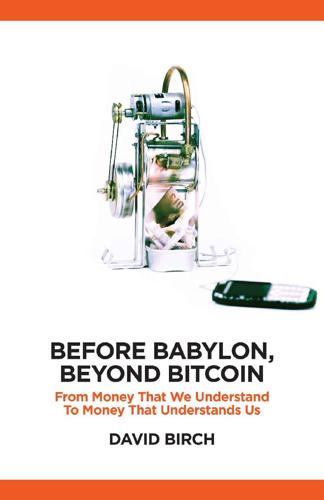
Before Babylon, Beyond Bitcoin: From Money That We Understand to Money That Understands Us (Perspectives)
by
David Birch
Published 14 Jun 2017
. ******** I enjoyed Moises Naim’s book Illicit: How Smugglers, Traffickers and Copycats are Hijacking the Global Economy (2010) about the emergence of cross-border, enterprise-scale organized crime. ******** As payments expert Scott Loftesness said on Twitter when we were discussing this, we need to remember the ‘broken window’ theory of policing. Chapter 7 Moving to mobile Machine intelligence will make us far smarter [because] our smart phones are basically supercomputers. — Eric Schmidt, Google’s executive chairman, at the World Economic Forum in Davos in 2015 Cards transformed the payments world but they did not, as was once thought, spell the end for cash.
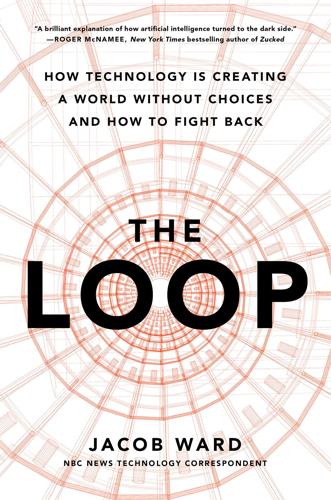
The Loop: How Technology Is Creating a World Without Choices and How to Fight Back
by
Jacob Ward
Published 25 Jan 2022
It argues that six principles must be involved in any successful pitch: reciprocity (“Here, have a free sample”), commitment and consistency (“You’ve put so much into this process, don’t back out now”), social proof (“This one is our best seller, everyone loves it”), authority (“JD Power says it’s a best buy”), liking (“You have a lovely family”), and scarcity (“This two-door is the last one on the lot!”). Cialdini’s work is devoured by readers in marketing and sales, and he is in constant demand as a consultant to multinationals, governments, you name it. Yet his work is also cited by academics studying human behavior and decision-making. A 2008 paper published in Science explored the “broken windows theory” that assumes people observing signs of disorder are more likely to break rules themselves. The paper’s authors, Dutch social psychologists, set up their findings by describing the well-established idea that messages asking people to refrain from an activity (like littering) are more effective in a setting where that thing hasn’t already been done (a clean, unlittered park).

Station Eleven
by
Emily St. John Mandel
Published 8 Sep 2014
The men’s rooms were windowless, lit only by an ever-dwindling supply of scented candles from the gift shop, and the water had to be warmed over the fire outside, but Clark felt it was worth the effort. Several of the men in the airport weren’t shaving at all anymore, and the effect was wild and also frankly unflattering. Clark disliked the general state of unshavenness, partly for aesthetic reasons and partly because he was a believer in the broken-windows theory of urban-crime management, the way the appearance of dereliction can pave the way for more serious crimes. On Day Twenty-Seven he parted his hair neatly down the middle and shaved off the left side. “It’s the haircut I had from ages seventeen through nineteen,” he told Dolores when she raised an eyebrow at him.

Masters of Scale: Surprising Truths From the World's Most Successful Entrepreneurs
by
Reid Hoffman
,
June Cohen
and
Deron Triff
Published 14 Oct 2021
The combination of those signals—and others—helps to determine whether any given comment or post in fact constitutes bullying. If this turns out to be the case, Instagram will hide the bully’s posts. “We’ve seen this effect where you as a bully don’t want to be the only bully,” says Kevin. “It’s broken windows theory—if there are a bunch of broken windows or graffiti around you, you feel, ‘Oh, it’s okay for me to do that.’ If people are not seeing bullying by others, they don’t feel it’s okay to be the only one doing it. By cleaning it up, we’ve seen it has this interesting scaled effect.” Instagram’s bullying filter allows them to monitor kindness on the platform via technology and metrics.
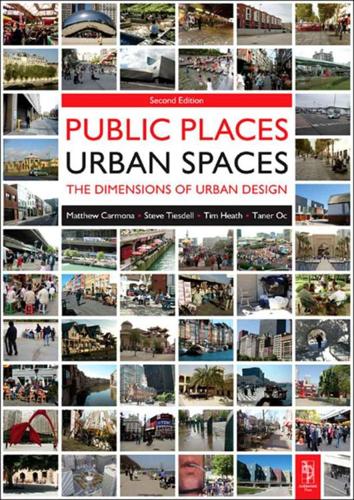
Public Places, Urban Spaces: The Dimensions of Urban Design
by
Matthew Carmona
,
Tim Heath
,
Steve Tiesdell
and
Taner Oc
Published 15 Feb 2010
To control these tensions, most conservation controls create a two-tier system of regulation with designated buildings and areas subject to an additional regime of control operating beyond that of the statutory planning processes operating elsewhere – for example: listed buildings and ‘conservation areas’ in the UK; the ‘National Register of Historic Places’ in the USA; and ‘buildings inscrit’ or ‘classés’ and ‘Zones de Protection du Patrimonies Architectural et Urbain’ in France. Cleaning and Maintenance A lack of proper maintenance can easily precipitate a spiral of decline. As Wilson & Kelling’s broken windows theory of crime prevention contends, when a window in a building is broken and left unrepaired, the rest of the windows will soon be broken. Wilson & Kelling (1982) explain that:‘Window-breaking does not necessarily occur on a large scale because some areas are inhabited by determined window-breakers, whereas others are populated by window-lovers.
…
section=publications_EDG http://www.transitorienteddevelopment.org http://vancouver.ca/commsvcs/currentplanning/urbandesign/index.htm Index A Accessibility 81, 137disability and 158–160 mobility and 160–161 physical access 156 robustness and 247 symbolic access 156 visual access 156 Active engagement 211 Active frontage 215–219 Activities in public space 236 Adelaide, Australia 101, 105 Advisers 282 Aesthetic preferences 85–101patterns and 170 Agency 258 Agency models 270 Air quality 228 Alexander, Christopher 3, 6, 7, 14, 102, 103, 145, 176, 177, 203, 214, 219, 258–262, 293–294, 369 ‘All-of-a-piece’ urban designers 19 Animation 19 Appleyard, Donald 8–10, 12, 39, 102, 103, 106, 113, 116, 170, 240, 269, 346, 369, 372, 378, 379 Appraisal 302–306area-wide appraisal 303–304 district/region-wide appraisal 302–303 site-specific appraisal 305–306 Architectural code 317 Architecture 184–186types 78–92see alsoBuildings Authenticity, lack of in invented places 128–130 B Bacon, Edward 57, 111, 122, 175, 208, 259, 264, 321, 353, 370, 372, 374, 383 Balance 139 Balanced communities 142 Banerjee, Tribid 137 Barcelona, Spain 138 Barnett, Jonathan 16, 93, 97, 259, 285, 370 Battery Park City, New York, USA 93 Beijing, China 127 Ben-Joseph, Eran 12, 91, 92, 108, 109, 316, 370, 384–386 Bentley, Ian 4, 9, 11, 13, 16, 50, 56, 60, 77, 82, 91, 96, 101, 103, 121, 149, 177, 220, 227, 254, 256, 288, 289, 291, 333, 370, 371 Biddulph, Michael 42, 102, 109, 124, 142, 313, 324, 331, 370–371, 381, 385 Bilbao, Spain 45 Birmingham, England/UK 108 Bosselmann, Peter 175, 182, 331, 333, 343, 348, 351, 353, 356, 370, 371 Boston, Massachusetts, USA 193 Boundaries: edges 113–115 neighbourhoods 141–147 Breheny, Michael 25, 39, 223, 371, 382 Brisbane, Australia 101 Builders 283 Buildings as constituents of urban blocks 93–94 attributes of good buildings 243–244 freestanding buildings 85–86, 186 structures 61 symbolic role of 118 urban architecture 184–186 Built environment professions, roles of 12–13 Burgage plots 78 Burgess's Concentric Zone Model 28 C CABE (Commission for Architecture and the Built Environment) 53 Cadastral (street) pattern 80–82accessibility 81 permeability 81 persistence of 101 Calthorpe, Peter 10, 15, 41–42, 84, 108, 226, 371–372 Capital web 234–240 Carmona, Matthew 7, 12–13, 55–59, 70–71, 137–139, 184–185, 219–220, 233–236, 263–265, 278, 284, 291–292, 310–311, 321–331, 355–356, 364–368 Carr, Stephen 141, 154–155, 208–209, 211, 372, 380 Cars 103accessibility and 153 impact on urban form 38 motorist's visual experience 170 parking 217 problems of car dependency 37 road networks 77, 90 traffic calming measures 237 traffic reduction proposals 238see alsoTransport Central Business District (CBD) 28block structures 57, 78, 83 Change 84management of 243–244 robustness 253–256 time frames of 252–253 urban environment 14see alsoUrban development Charter for New Urbanism 41–42 Chicago 83 Chicago School 28, 29 Childs, Mark 16, 169, 262, 263, 372see alsoconcinnity Choice 49 Circulation mesh 101 Cities 101Central Business District (CBD) 25block structures 57, 92, 93 identity 112 images of 127districts 128 edges 101 landmarks 113 nodes 41 paths 113 transformations in urban form 230industrial cities 29 informational age urban form 31–32 post-industrial urban form 29–31see alsoUrban design; Urban development; Urban environment; Urban morphology; Urban space City Beautiful Movement 3 Civic design 3 Comfort 8, 160 Communication 210communication gaps 332–335designer–non-designer gap 333 designer–user gap 334 powerful–powerless gap 334 professional–layperson gap 332–333 reality–representation gap 333 informative 349 persuasive 269 technology 31–34, 46impact on urban form 38see alsoRepresentation Communities 10balanced communities 55, 57–59 community motivators or catalysts 14 gated communities 149 role in development process 279see alsoParticipation Community urban design 17 Compact city/cities 26 Competition 45, 61 Computer imaging and animation 354 Computer-aided design 350–351 Computers, participation and 229 Concept providers 19 Conceptual urbanism 40, 41 Concinnity 262 Congress for New Urbanism 9–10 Connotation 117 Conservation 245–247, 249management 270 Consultation 284 Containment 176, 178 Continuity of place 247–248 Controls 31, 150, 258public sector role 295see alsoPublic sector smart controls 34 zoning controls 308see alsoAppraisal Conzen, John 77, 78, 183, 252, 373 Copenhagen 242 Copenhagen, Denmark 175 Crawford, Margaret 44, 372–373, 378, 381, 385 Crime 147displacement 153 fear of victimisation 165 perception of 169 prevention 307‘broken windows’ theory 328 dispositional approaches 150 situational approaches 150see alsoSecurity Crime Prevention Through Environment Design (CPTED) 150 Cul-de-sacs 151, 152 Cullen, Gordon 3, 6–7, 170, 174–175, 177, 182–185, 316, 345–346, 353, 373, 376see alsoTownscape Culture 113, 124mass culture 124 Curvilinear layouts 83 Cuthbert, Alexander 4, 5, 52, 55, 165, 205, 373 D Decentralisation 32, 25, 39 Democracies 63 Denotation 117 Density 223–226benefits of higher density 223 urban form and 224 Denver, Colorado, USA 42 Design 3, 71–74policies 18see alsoUrban design Design briefs 312–313 Design codes 316–319 Design frameworks327 seeUrban design Detroit, Michigan, USA 23 Developers 275–279motivations of 275–279 types of 275 Development advisers 282 Development funders 287 Development pipeline model 271, 270–274development feasibility 270–274market conditions 272–273 ownership constraints 271 physical conditions 271–272 project viability 273–274 public procedures 272 development pressure and prospects 270see alsoDevelopment process Development process 11–12, 269–295actors and roles 269–270, 274–275adjacent landowners 283 advisers 282 builders 282 developers 275–279 funders 280–281 investors 280 landowners 279–280 motivations of 285 occupiers 284 public sector 284–286 land and property development 269–274 models 270agency models 270 equilibrium models 270 event-sequence models 270 institutional models 270 structure models 270see alsoDevelopment pipeline model quality issues 286–295monitoring and review 324–325 producer–consumer gap 286–288 public sector role 297, 301 urban design quality 291–295 urban designer's role 288see alsoUrban development Diagrams seeRepresentation Disability 158–160 Discovery 213–214, 258 Disneyland 129 Disneyworld 152–153 Displacement 152 Districts 115 Dovey, Kim 70, 117, 119, 120, 123, 124, 130, 264, 331, 374 Duany, Andres 9, 12, 31, 37, 42, 80, 90–92, 109, 143–144, 147, 188, 222, 234, 257, 317–320, 333, 355, 374see alsoNew Urbanism Duany & Plater-Zyberk (DPZ) 9, 37, 144, 317–318, 355, 374 E Eco-masterplanning 49 Edge cities 41 Edges 89–90, 173–178 Edinburgh, Scotland/UK 197 Education 325–326 Electronic communication 21, 32impact on urban form 38 Ellin, Nan 10, 14, 119, 129–130, 140–141, 146, 148, 155, 263, 282, 297, 374–375see alsoIntegral Urbanism Enclosure 179squares 170 streets 182–183 Engagement 209, 213active 211–212 passive 209 English Heritage 196, 304 Environment seeUrban environment Environmental design 93, 150–152lighting 228–229 microclimate 226 sun and shade 227 wind 227–228 Environmental footprints 53 Environmental issues 51–55fossil fuel consumption 37, 38 global warming 38, 46 pollution 51, 55 sustainable development 7–8, 11, 51, 233by spatial scale 58–59 density and 224 strategies for 200, 218 Environmental meaning 117–119 Environmental perception 111–119 Environmental symbolism 117–119 Equilibrium models 270 Equitable environments 158disability 158–166 mobility 160–161 social segregation 145, 146 Essex Design Guide 92 Event-sequence models 270see alsoDevelopment pipeline model Everyday Urbanism 40 Exclusion 158–160disability and 158–160 mobility and 145 strategies 150–153 voluntary exclusion 148 Facades 178, 186–187 F Facilitators of urban events 19 Fear of victimisation 148 Figure-ground techniques 346 Figure-ground studies 190 Finance 269funders 280–281 investors 283 Fishman, Robert 15 Floorscape 193–195 Florida, Richard 8 Flusty, Steven 29, 156, 205, 208, 211–213, 373, 375 Footpath design 234–236 Fossil fuel consumption 37–38, 46, 51 Fragmentation 11–12, 64by roads 90–91, 256 social fragmentation 257 Frontage 183 Functional zoning 220–222 Funders 280–282 G Gans, Herbert J 133, 143, 144, 253, 375 Garages 216 Garden cities 25 Garden suburbs 199 Garreau, Joel 27, 28, 259, 262, 314, 375see alsoEdge cities Gated communities 291 Geddes, Patrick 319 Gehl, Jan 3, 7, 110, 202, 207–211, 236, 242, 259–261, 375see alsoactivities in public space Geographic Information Systems (GIS) 346, 349 Gestalt theory 170 Glasgow, Scotland/UK 193 Global context 51–55 Global warming 38, 46 Globalisation 124 Governance 64 Government 63–65market–state relations 65–68 reinventing of 69 structure of 77 Grid erosion 90 Guideline designers 19 H Harmonic relationships 173 Harvey, David 22, 55, 61, 68, 69, 124, 125, 130, 376 Hearing 111 Hebbert, Michael 15, 86, 88, 105, 109, 229, 377 Hierarchy of human needs 134, 136 Hillier, Bill 82, 150–152, 203–208, 377 Home Zones 109 Hulme, Manchester 280 I Icon, iconic 117, 126–127see alsostarchitect Identity 90, 92personalisation and 121 Image 112–113 Imageability 113 Images 113districts 115 edges 114 landmarks 116 nodes 115 paths 114 Incentive zoning 308 Incivilities 148 Industrial cities 22 Industrial Revolution 25 Informational age 31 Infrastructure 230designers 16–17 Institutional models 270 Integral Urbanism 10, 14, 263see alsoEllin, Nan Integration 187–193 Internet 342 Invented places 128–130lack of authenticity 132 manufactured difference 103–104 other-directedness 130 superficiality 130 Investors 256 Involvement seeParticipation J Jacobs, Allan 8–9, 12 Jacobs, Jane 3, 7, 10, 41, 135, 150, 151, 202, 258, 265, 378 Japanese cities 50 Jarvis Bob 6 K Kaliski, John 44 Kelbaugh, Douglas 23 Keno Capitalism 29 Kentlands, Maryland, USA 42, 317, 318see alsoNew Urbanism Kinaesthetic experience 170–176 Knox, Paul 23, 28, 30, 31, 39, 59, 112, 117–119, 121, 124, 166, 213, 244, 275, 279, 371, 374, 378–379, 381 Koetter, Fred 78, 94–95, 259, 384 Koolhaas, Rem 45 Krier, Leon 86, 95, 97, 102, 142, 172, 266, 379 Krier, Rob 95, 96, 145, 179, 222, 379 Kunstler, John Howard 14, 26, 37, 38, 227, 258, 379 L Land development 264see alsoDevelopment process; Urban development Land markets 5 Land uses 13mixed use 220–223 Land value 23 Landmarks 116 Landowners 279–280, 292adjacent landowners 283–284 Landscape code 256 Landscape Urbanism 45 Landscaping 198hard 199 soft 198, 199–200 Lang, Jon 12, 13, 17–19, 42, 48, 54–55, 67, 103, 111–112, 133, 136, 220, 332, 361, 379 Las Vegas, Nevada, USA 23 Lawson, Bryan 96 Le Corbusier 6, 21–23, 85, 87, 183, 369, 371, 379 Lefebvre, Henri 44, 84, 86, 202, 241, 246, 380 Leinberger, Christopher 33, 34, 37, 60, 62, 91, 269, 281–282, 297, 380 Lighting 228–229natural lighting 228 street lighting 228 Local context 47–51 London 48, 253, 299Canary Wharf 70 Docklands 70 Los Angeles School 29 Los Angeles, California, USA 29 Loukaitou-Sideris, Anastassia 11 Lynch, Kevin 3, 6–8, 10, 112, 113–116, 121, 145, 147, 154, 169, 170, 212, 241, 243, 245–247, 253–254, 258, 297, 302, 305, 345, 369, 380 M MacCormac, Richard 72, 216–218, 223, 239, 247, 380 McGlynn, Sue 9, 12, 14, 288–289, 334, 346, 370, 377, 380 Madanipour, Ali 4, 59, 124, 215, 219, 257, 277, 380, 381 Maintenance 328–329 Management 326–329conservation 327–328 maintenance 328–329 public realm 139–141 regeneration 327 transport 326–327 Managerialism 376 Manchester, England/UK 115 Manhattan, New York, USA 33, 83, 100 Manipulation 331–335 Maps seeRepresentation Market context 55–60, 290, 364market–state relations 65–68 operation of markets 60–61 Marketplace urbanism 40, 41 Marshall, Stephen 20, 23, 91–93, 261, 262, 372, 378, 381 Maslow's hierarchy of needs 134 Mass culture 124 Master plans 229 Meaning 113, 116–117neighbourhoods 141–147 Melbourne, Australia 70 Microclimate 226–228 Mitchell, Bill 31–34, 49, 50, 137, 159, 160, 239 Mixed use 220–223 Mobility 160–161 Models 351–353Burgess's Concentric Zone Model 28 conceptual models 352 development process 269–295agency models 270 equilibrium models 270 event-sequence models 270 institutional models 270 structure models 270 presentation models 352 working models 352see alsoDevelopment pipeline model Modernism 119Modernist urban space 23, 77 New Modernism 25 symbolism and 119 Monderman, Hans 108, 197, 198 Montgomery, John 112, 120, 122, 200, 206, 221, 244, 381 Monuments 180 Moudon, Anne Vernez 77, 79, 102, 108, 222, 228, 254, 256, 266 Movement, through public space 201 N National Playing Fields Association 234 Neighbourhoods 141–147boundaries 145 mixed-use 220–223 neo-traditional neighbourhoods (NTDs) 9–10 size of 144, 149 social mix and balanced communities 145 social relevance and meaning 145 traditional neighbourhood developments (TNDs) 9–10, 142 types of 116 Neighbourhood Unit 143 Neo-liberalism 68 Neo-traditional neighbourhoods (NTDs) 9–10 Newman, Oscar 24, 37–40, 51, 92, 150, 151, 224, 335, 376, 382 New Modernism 25 New Urbanism 9–10, 41–43Charter for 41–42 New Urbanist codes 317, 319 New York, USA 32 Nodes 115 Noise 220 O Obsolescence 248–252 Occupiers 284 Open space 234 Opportunity reduction (approaches to crime prevention) 150 Opportunity space 65 Organic growth 262 Organicists 14 Orthographic projections 348, 349 Ownership constraints 271 P Paraline drawings 349, 350 Paris 10 Parking 238–239see alsoCars Participation 297, 329bottom-up approaches 336 top-down approaches 336 Passive engagement 209–210 Paths 13–14 Patterns 6–9aesthetic preferences and 169 plot pattern 79–80see alsoCadastral (street) pattern Pedestrian activity maps 344 Pedestrian pockets 9–10 Pedestrianisation 235Copenhagen 242, 260–261 Perception 111–119environmental perception 111–119 of crime 149 Performance indicators 324 Perimeter cities 26 Permeability 99 Personalisation 121 Perspective drawings 349–350 Persuasion 331–335 Perry, Clarence 87, 89, 141–143, 382see alsoNeighbourhood Unit Perth, Australia 101 Phenomenology 112, 120 Photomontages 350 Philadelphia, Pennsylvania, USA 250 Phoenix, Arizona, USA 38 Physical conditions 271–272 Place image 112–113 Place identity 111, 112 Place theming 128 Place attributes of successful places 206 construction of 119–125 identity of 121 invented places 128–130lack of authenticity 132 other-directedness 130 superficiality 130 making places tradition of urban design 7 sense of 120–121neighbourhoods and 141–147 personalisation 121 territoriality 121 significance of 20 Placelessness 123–125globalisation and 123 loss of attachment to territory 124 mass culture and 124 Plants 209 Plater-Zyberk, Elizabeth 9, 37, 144, 317, 330, 374see alsoNew Urbanism Plot pattern 79–80 Pod developments 90–91 Policy 306–325 Policy makers 19 Politics 63 Pollution 33, 39 Portland, Oregon, USA 363 Postmodernism 119, 128, 130superficiality 130 symbolism and 117–119 Post Urbanism 43 Poundbury, Dorchester, UK 42, 236 Power 118, 119, 332 Powergram 288–291, 334 Prague, Czech Republic 80 Precinct principle 89 Preservation 246–247, 252 Privacy 219–220aural privacy 220 visual privacy 219–220 Private sector 65 Privatisation 68, 140, 148 Producer-consumer gaps 277, 285 Professional–layperson gap 332–333 Project for Public Space 127, 134, 138, 206, 292 Project viability 273–274 Property development 4see alsoDevelopment process; Urban development Property markets 222 Public goods 62 Public life 138–139 Public participation seeParticipation Public procedures 272 Public realm 10, 137–141decline of 141 design 17 exclusion strategies 156 function of 201 management and 157–158 physical and sociocultural public realms 122, 139–141see alsoPublic space Public sector 67, 69–70, 272appraisal 273area-wide appraisal 303–305 district/region-wide scale 302–303 site-specific appraisal 305–306 design briefs 312–313 design control/review 320–322 design frameworks and codes 313–316 intervention by 71 management role 298conservation 301 maintenance 328–329 regeneration 327 transport 326–327 monitoring and review 324–325 policy 229 role in development process 279 role in quality control 306 Public space 201, 205–206comfort 209 discovery 213 edges 212 engagement 209–211active 211–212 passive 209–210 exclusion strategies 157 external 139 internal 139 movement through 201, 202, 204 network 83–85 quasi-public space 138 relaxation 209 shape 266 social use of 98–103see alsoPublic realm; Urban space Punter, John 6, 35, 63, 71, 91, 122, 257, 298, 306, 308, 310, 313, 319, 322, 324, 325, 347, 355, 356, 370, 372, 383 Q Quality in Town and Country initiative 71 Quality issues 11, 12, 13constraints 361, 362 monitoring and review 324–325 producer–consumer gap 277, 286–288 public sector role 295, 301see alsoPublic sector urban design quality 336 urban designer's role 288 Quasi-public space 138 R Radiance 180, 182, 185 Reality–representation gap 333 Redevelopment 22, 88, 89 Regeneration 327 Regulatory context 68government structure 64 market–state relations 65–68 Relaxation 209 Relph, Edward 13, 112, 119–125, 128, 130, 131see alsoplacelessness Representation 343–354analytical representations 344–348 computer imaging and animation 354 computer-aided design 354 conceptual representations 343–344 four dimensions 353–354 Geographic Information Systems (GIS) 348 models 349 orthographic projections 349 paraline drawings 350 perspective drawings 349–350 photomontages 350 serial vision 353–354 sketches 350 three dimensions 349–353 two dimensions 348–349 video animations 354 Resilience 253–256 Responsive environments 9 Reurbanism – seeFishman, Robert Rhyme 172 Rhythm 172 Rhythmic repetition 241 Road design 234–238 Road networks 86impact on urban form 21, 25, 32see alsoCars; Transport Robustness 253–256access and 304 cross-sectional depth and 254, 256 room shape and size and 254, 256 Rome, Italy 175 Rowe, Colin 78, 94, 95, 259, 384see alsoFigure-ground studies Rybczynski, Witold 83, 131, 300, 384 S Safety 147–15324-hour cities 244 road design and 234–238 San Francisco, California, USA 10 Savannah, South Carolina, USA 82 Scale 6 Schwarzer, Mitchell 36–37, 40–41, 159, 160, 166, 239 Seaside, Florida 42, 98see alsoNew Urbanism Seaside, Florida 317 Seasonal cycle 329 Seattle, Washington 51, 101 Security 147–154animation/peopling approach 153 crime prevention 150 fortress approach 153 management/regulatory approach 153 panoptic approach 153see alsoCrime Semiotics 117 Serial vision 353–354 Servicing 238–239 Seven Clamps of Urban Design 12 Seoul, South Korea 84 Shade 226 Shanghai, China 231 Shared streets 109 Short-termism 62, 257, 275, 360 Sieve maps 17 Sienna, Italy 176, 300 Signification 116–117 Simulation 130see alsoInvented places Sitte, Camillo 6–7, 83, 95, 177–184, 186, 200, 372, 385 Situational approach (to crime prevention) 150 Sketches 350 Slow Food 39 Slow City 39 Smart controls 297 Smart growth 36, 46 Smell 111 Social costs 62 Social mix 145–146 Social segregation 145, 146, 147 Social space 83, 84, 86see alsoPublic space Social urbanism 40, 41 Sonic environment 111 Soundscape 111 Southworth, Michael 26, 91, 92, 108–109, 215–216, 235, 236, 302, 316, 319, 370, 375, 380, 385 Space Left Over After Planning (SLOAP) 86, 234 Space seePublic space see alsoUrban environment; Urban space Space syntax 203–205 Spatial analysis 302 Spatial containment 176, 178 Squares 179–182amorphous squares 182 closed squares 181 dominated squares 182 enclosure 180 freestanding sculptural mass 180 grouped squares 182 monuments 180 nuclear squares 182 shape 180 Starchitect 125, 127see alsoicon, iconic Stevens, Quentin 205, 208, 211–213, 372, 375, 382, 385 Sternberg, Ernst 14 Street furniture 196–198 Street Reclaiming 80 Streets 182–183lighting 228–229 pattern seeCadastral (street) pattern; Road networks Structure models 270 Suburbs 29–31 Sunlight 227–228 Superficiality 130 Surveillance 150–154 Sustainable development 51–55, 307by spatial scale 58–59 density and 225 strategies for 56–57 SWOT analysis 306 Sydney, Australia 126 Symbolism 117–119 T Talen, Emily 42, 143, 147, 294, 319, 374, 385 Technical standards 12–13 Telecommunications 17impact on urban form 38 Territoriality 121loss of attachment to territory 125 Theme parks 129crime prevention 150, 151, 153see alsoInvented places Third place 138–139 Third way 71 Tibbalds, Francis 4, 6, 9, 47, 187, 255, 258, 264, 361, 386 Tiesdell, Steve 46, 65, 140, 147–149, 153, 220, 244, 269, 290–291, 363 Time cycles 241–244 management of 243–244 march of 244–257 time frames of change 252–253 Tissue studies 346 Tokyo (Japan) 50, 196 Toronto (Canada) 99 Total designers 19 Touch 111 Town Centre Management 298 Townscape 183–184 Traditional neighbourhood developments (TNDs) 9, 142 Traditional urbanism 40 Traffic calming measures 237 Transit-oriented development (TOD) 10, 226 Transport environmental sustainability issues 35 impact on urban form 29, 31, 36, 39 management 326 road networks 90 technology 31–34see alsoCadastral (street) pattern; Cars Trancik, Roger 86, 176, 332, 336, 386 Transect 311, 319see alsonew Urbanism, Andres Duany Trees 199air quality and 228 shade 227 wind protection 226, 227 Triangulation 211 Twenty four-hour society 243 U Urban architecture 184–186see alsoBuildings Urban code 317 Urban conservationists 19 Urban design 3–20, 269as joining up 13–16the professions 14–16 the urban environment 14 challenges 361 clients and consumers of 18–20 controls 12 definitions 4, 10ambiguities in 4 relational definitions 4 scale and 19 design briefs 312–313 design codes 316–319 design review and evaluation 320–324 frameworks 10–11Allan Jacobs and Donald Appleyard 8–9 Francis Tibbalds 9 Kevin Lynch 8 responsive environments 9 The Congress for New Urbanism 9–10 global context 51–55 holistic approach 363–366 ‘knowing’ urban design 17, 72, 162 local context 47–51 market context 55–62 monitoring and review 324–325 need for 11–13 practice 17–20types of 17 process 71–74 quality 272barriers to 357 questioning 360 regulatory context 63 Seven Clamps of Urban Design 13 technical standards 13 traditions of thought 6–8making places tradition 7–8 social usage tradition 7 visual-artistic tradition 6–7 ‘unknowing’ urban design 11, 17 Urban Design Alliance (UDAL) 15Placecheck 304 Urban Design Group (UDG) 15 Urban development change management 225 development briefs 312–313 environmental sustainability 35, 37, 45, 69, 165density and 225 strategies for 22 sustainable design by spatial scale 58–59 quality 286–295 smart growth 36 transformations in urban form 39industrial cities 21, 22 informational age urban form 31–34 post-industrial urban form 29see alsoDevelopment process; Urban design Urban entertainment destination (UED) 129see alsoInvented places Urban environment changes 49time frames of 252–253 components of 55 culture relationship 39 environment-people interaction 133environmental determinism 133 environmental possibilism 133 environmental probabilism 133 environmental perception 111–112 equitable environments 158–166disability 158–160 mobility 160–161 social segregation 145 management 277, 283, 326conservation 327–328 maintenance 328–329 regeneration 327 transport 326–327 quality issues 10, 12, 15public sector role 295, 301 urban environmental product 11see alsoCities; Urban development Urban grids 88grid erosion 90 Urban managers 19 Urban morphology 77–78building structures 78–79 cadastral (street) pattern 80–81 capital web 234–240 density and 225 freestanding buildings 85, 186 land uses 78 plot pattern 79–80 pod developments 90–91 public space network 83–85 return to streets 92 road networks 86 super blocks 89–90 urban blocks 93–94block sizes 96–99 persistence of block pattern 101see alsoCities Urban population growth 25 Urban quarters 142 Urban regeneration 327 Urban renaissance 35 Urban space 21, 176design 21–23 Modernist 22–23, 77 positive and negative space 176 positive space creation 176–179 traditional 77return to 114see alsoPublic space Urban Task Force 35, 71, 223, 225–226, 237, 257, 327, 386 Urban villages 142, 144 Urban Villages Forum 142 V Vegetation 199 Venice 175 Venturi, Robert 23, 128 Victimisation 148 Video animations 354 Virtual reality 354 Vision 111 Vision makers 19 Visual experience aesthetic preferences 169 motorists 175 patterns and 170 Visual privacy 219–220 Visual qualities 176–200 Voluntary exclusion 148 W Washington DC 28, 83 Wind environment 227–228 Whyte, William H (Holly) 7, 106, 135, 208, 210–211, 215, 379, 387 Woonerfs 109 World Wide Web 342 Y Yeang, Ken 49, 364, 387see alsoeco-masterplanning Z Zoning 220–223controls 297 incentive zoning 308 Zucker, Paul 95, 176, 179, 181–182, 387 Zukin, Sharon 61, 124, 128, 137, 213, 387
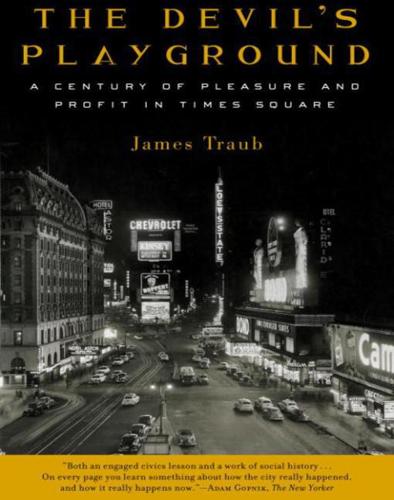
The Devil's Playground: A Century of Pleasure and Profit in Times Square
by
James Traub
Published 1 Jan 2004
A few months earlier, Daniel Patrick Moynihan, a U.S. senator from New York and a distinguished social theorist, had said that a city in the throes of social disintegration had accepted a defeatist strategy of “defining deviancy down.” Moynihan described a place in which the forces of social control seemed to have surrendered to the forces of disorder. Giuliani cited this resonant expression in his speech, and mentioned instances of it that few could deny. He also drew on the “broken windows” theory, advanced by the criminologists George L. Kelling and James Q. Wilson, who had argued that “serious street crime flourishes in areas in which disorderly behavior goes unchecked. The unchecked pan-handler is, in effect, the first broken window.” Giuliani vowed to reverse the process by arresting the window breakers.
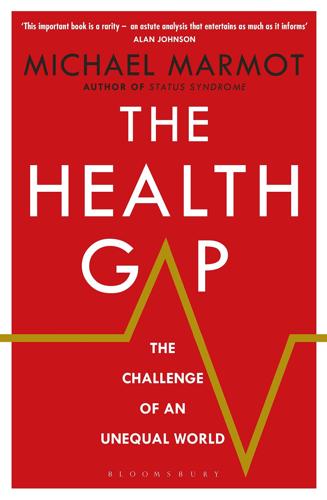
The Health Gap: The Challenge of an Unequal World
by
Michael Marmot
Published 9 Sep 2015
The women themselves had to contribute $50, a great amount if you are living on $2 a day.44 The results are impressive: same streets, same modest houses, but spruced up, made pukka, and the required additions made. It feels cared for. I don’t know whether it would lead to less crime. It feels like it might, if there is anything to the broken windows theory.45 What is clear, though, is that women no longer have to stand in long queues to collect water, there is less water-borne disease, and as a result children lose fewer days of school. In Bonfire of the Vanities, the novelist Tom Wolfe talks of his obscenely rich banker achieving ‘isolation’ from the chaos of New York.
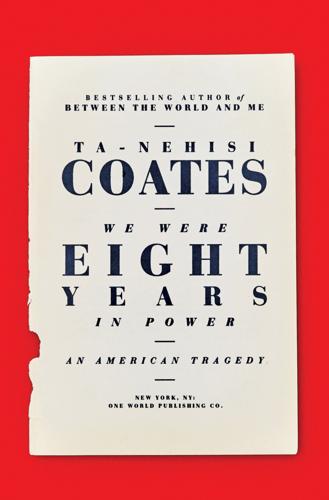
We Were Eight Years in Power: An American Tragedy
by
Ta-Nehisi Coates
Published 2 Oct 2017
The young inner-city males who had so concerned Moynihan led “wasted and ruined” lives and constituted a threat that could “bring about the destruction of whole communities and cities across this Nation.” In seeming to abandon scholarship for rhetoric, Moynihan had plenty of company among social scientists and political pundits. James Q. Wilson, the noted social scientist and a co-creator of the “broken windows” theory of policing, retreated to abstract moralizing and tautology. “Drug use is wrong because it is immoral,” he claimed, “and it is immoral because it enslaves the mind and destroys the soul.” Others went further. “The inner-city crack epidemic is now giving birth to the newest horror,” the Washington Post columnist Charles Krauthammer declaimed: “A bio-underclass, a generation of physically damaged cocaine babies whose biological inferiority is stamped at birth.”

The Evolution of Everything: How New Ideas Emerge
by
Matt Ridley
As time went by, people ‘increasingly inhibited their impulses, anticipated the long-term consequences of their actions, and took other people’s thoughts and feelings into consideration’. In other words, not blowing your nose on the tablecloth was all one with not stabbing your neighbour. It’s a bit like a historical version of the broken-window theory: intolerance of small crimes leads to intolerance of big ones. Doux commerce But how were these gentler habits acquired? Elias realised that we have internalised the punishment for breaking these rules (and the ones against more serious violence) in the form of a sense of shame. That is to say, just as Adam Smith argued, we rely on an impartial spectator, and we learned earlier and earlier in life to see his point of view as he became ever more censorious.
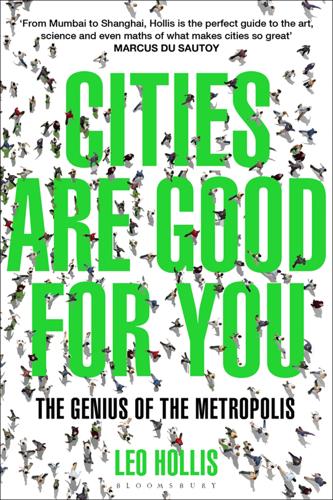
Cities Are Good for You: The Genius of the Metropolis
by
Leo Hollis
Published 31 Mar 2013
This is the natural process that regulates the daily biological rhythms, regulated by the hormone melatonin, secreted from a gland in the centre of the brain, which can have an impact on conditions such as Seasonal Affective Disorder. This has encouraged many architects to rethink the importance of sunlight within their design. It is this kind of experiment that informs environmental psychology, the link between place and behaviour. The power of this connection is also the thinking behind the well-known ‘broken windows theory’ that first appeared in a 1982 article by James Q. Wilson and George L. Kelling in the Atlantic Monthly. In the essay, the authors reported on the relationship between disorder within a community and crime: a chaotic environment in which vandalism is a reflection of a ‘don’t care’ attitude.
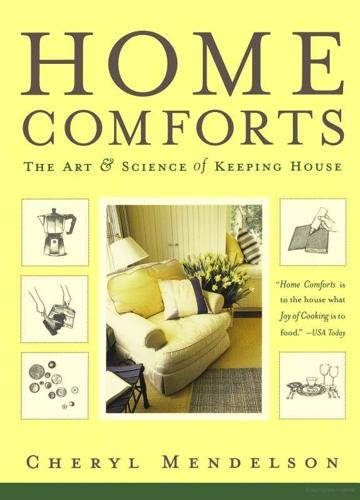
Home Comforts: The Art and Science of Keeping House
by
Cheryl Mendelson
Published 4 Nov 1999
That evening, the chair held not only the bathrobe and newspaper but also my husband’s dry cleaning, a plastic replica of the Millennium Falcon along with Luke Skywalker, a tube of antiseptic ointment, one copy of PC Magazine, and five Tinkertoys. (I remember because I recited the entire list to my smirking husband.) Yet this chair had stood entirely empty for the preceding six months. Modern police successes are allegedly built on a sociological principle called the “broken-window theory.” This theory says that any sign of social or physical neglect in a neighborhood causes people who are pre-disposed to antisocial conduct to feel more inclined to commit various crimes and misdemeanors. If there is one broken window and it isn’t fixed, this suggests to malefactors that no one cares or that no one is in charge—that therefore it is safe to write graffiti on the walls, litter, and break other windows.
…
Thus, by making sure that graffiti, broken windows, and “quality-of-life” crimes are immediately stopped or tended to, police have drastically reduced the serious-crime rates in many big cities. At least this is the claim, and there is good evidence that it is true. It sounds like common sense to most people. The broken-window theory certainly applies to every individual home, and the reason why it does is clear. When people are cooperating in maintaining a household, the domestic equivalent of an unrepaired broken window can result in a chain reaction that eventually sees the home in complete chaos. It happens like this.
…
Hardwick (1986), 762 brass, 557-58 on antique furniture, 558 fireplace accessories, cleaning, 558 tarnish and, 558 bread: stale, revival of, 156 storage of, 160 breakfast, 52-54, 65 habitual foods and, 53 nooks, 69 place setting for, 63 breaking and entering, 765 broadcloth, 197 brocade, silk, 199 “broken window theory,” 31 bronze, 557-58 brooms and sweeping, 459-60, 506 brownstone, 516 brushes: bottle, 737 for cleaning blinds, 542 buckets, as hazards to children, 739 builders, detergent, 320 bulbs, see lightbulbs burglary, 764-65 burns: avoiding, 735-36 causes of, 708-9 butcher blocks, care of, 496 buttonholes, widening and narrowing of, 609-10 buttons, 602 sewing on, 608-9 shank, 608-9 two- and four-hole, 608 buying food, see marketing C cabinet storage of foods, see pantry and cabinet food storage cabinets: childproofing of, 743-44 medicine, 696-97 Cable Communication Policy Act (1984), 777 cable television: addressable converter for, 778 laws on, 777-78 V-chips, 777 Cable Television Consumer Protection and Competition Act (1992), 777 caffé latte, 78 cages, pet, cleaning of, 644-45 calcite, 444 calcium carbonate, 444, 688 calendering of fabric, 226 calico, 197 Caller ID, 773, 775 cambric, 197 Campylobacter jejuni, 162, 166, 179-80, 642 Canadian Standards Association (CSA), 694 Candida albicans, 376 candles, 61 safety with, 708 candlesticks, crystal, 548 candle wax, removal of: from carpets and upholstery, 486 from candlesticks, 548 from fabrics, 387 from tile, 514 from wood, 504 cane, 503 canned foods, 43, 44-45, 129-30, 155-60 botulism and, 164, 180-81 convenient storage of, 91 shelf-life of, 131-35 can openers, cleaning of, 120 cappuccino, 78 carbon dioxide, 414, 705 carbon monoxide, 412-14, 416, 593, 704, 705, 707 detectors, 413-15 warning signs of, 413 Care and Cleaning for Natural Stone Surfaces (Marble Institute of America), 519 care labels, 194-95, 276-87, 293 disregarding, when not to, 283-84 disregarding, when to, 282-83 fiber content, 194 FTC regulations, 278-282 limits of, 277-78 meaning of, 280-82 terms and symbols, 286-87 carnauba wax, 494 Carpet and Rug Institute (CRI), 468-69 carpet beetles, 688 carpet-cleaning services, 471 carpets and rugs, 466-74, 478-81, 517 antique, oriental, delicate, care of, 470, 472-73 in bedrooms, 655, 661 care of, 469-70 colorfastness of, 467 delicate, 472-73 dry-cleaning of, 471 dust mite allergens and, 452, 454, 455, 468 fleas in, 645 fumes from, 411, 468 glossary of, 478-81 handmade, 497 natural vs. synthetic fiber, 467 nonskid, 737 padding or underlay for, 274-75, 469 pests and, 468 pets and, 640, 641 rotation of, 497 rushes, grasses, sisal, care for, 473-74 selection of, 274 shampooing of, 470-71, 473 slips and falls and, 731-32 stain removal from, 471-72, 481-86 steam-cleaning of, 471 storage of, 470 structure of, 467-68 synthetic materials used in, 467 carpets and rugs (cont.)

Behave: The Biology of Humans at Our Best and Worst
by
Robert M. Sapolsky
Published 1 May 2017
As summarized in the title of one paper demonstrating this, this seems a case of “Male generosity as a mating signal.” We’ll return to this theme in the next chapter. Thus, our social environment unconsciously shapes our behavior over the course of minutes. As does our physical environment. Now we come to the “broken window” theory of crime of James Q. Wilson and George Kelling.38 They proposed that small signs of urban disarray—litter, graffiti, broken windows, public drunkenness—form a slippery slope leading to larger signs of disarray, leading to increased crime. Why? Because litter and graffiti as the norm mean people don’t care or are powerless to do anything, constituting an invitation to litter or worse.
…
Cheese’s, 342n Churchland, Patricia, 541 Cinderella effect, 367 cities, 296, 298–99 civilizing process, 617 Civil War, 409, 662 Battle of Gettysburg, 554, 644 Clark, Kenneth and Mamie, 415 class, see socioeconomic status Clay, Henry, 285 cleanliness, 564–65 climate, 302–3 Clinton, Bill, 640 cognition, 617–18 adolescence and, 159 cognitive load, 49–50, 416–17, 546 empathy fatigue, 534–35 emotion and, 54–58 empathy and, 528, 531–35, 552 frontal cortex and, 47–50, 159 stages of cognitive development, 176–79 cognitive behavioral therapy (CBT), 61 Cohen, Dov, 285, 286, 287 Cohen, Jonathan, 47, 58, 609 Cohn, Alain, 491 Cohn, Roy, 396 Colburn, Lawrence, 657, 658n, 658, 660, 670 Coles, Robert, 181n Collapse: How Societies Choose to Fail or Succeed (Diamond), 302 collectivist cultures, 97, 156, 206–7, 273–82, 474, 501–3 Coming of Age in Samoa (Mead), 122 compassion, 15, 522, 523, 542 acts of, 542–45, 551, 614 effective, 545–46 in animals, 523–26 in children, 527–28 self-interest in, 547–50, 642 wealthy people and, 533–34 see also empathy compatibilism, 586 competition, 2–4, 15, 16 moral judgment and, 495–500 COMT (catechol-O-methyltransferase), 256–58 conditioned place preference, 103 confidence, 102–3, 237 confirmation biases, 403 conflict monitoring, 528–29 conflict resolution, sacred values in, 575–79, 643–44 conformity, see obedience and conformity congenital adrenal hyperplasia (CAH), 215–18 consequentialism, 504–7, 520 consolation behavior, 525–26 contact theory, 420, 626–30 cooperation, 3, 4, 15, 547, 633–35 moral judgment and, 495–500, 508–9 optimal strategy for, 345–53 punishment used to promote, 635 starting, 353–54, 508–9 corporate personhood, 411n, 503 Correll, Joshua, 86 corruption, 267 Corry, Stephen, 315 cortex, 29 Cotton, Ronald, 641–42 Craddock, Sandie, 124 CRH (corticotropin-releasing hormone), 125, 129, 132, 708–9 Crick, Francis, 714 crime: abortion and, 190–91 broken window theory of, 95–96 income inequality and, 295 in 1970s and 1980s, 311 organized, 395–96 urbanization and, 296 Crimean War, 662 criminal justice system, 171, 253, 398, 502–3, 580–600, 608–12 adolescents and, 170–71, 589–90, 592–93 brain damage and, 590–91, 597, 598, 601–2, 609 and causation vs. compulsion, 593 cognitive biases in jurors, 582 and diminished responsibility for actions, 587 free will and, see free will judicial decisions, 448, 449, 483, 583, 643 neuroimaging data and, 582, 599 and starting a behavior vs. halting it, 594–95 and time course of decision making for action, 592–93 crises, cultural, 301–3 culture(s), 7, 11, 21, 266–327 adolescence and, 155–56 changes in, over time, 276–77 childhood and, 202–10 collectivist, 97, 156, 206–7, 273–82, 474, 501–3 crises and, 301–3 definitions of, 269–71 differences in, 271–73 gender-related, 272 diffusion and, 621 egalitarian, 291–96 of honor, 207, 283, 284, 501 American South, 207, 284–88, 501 honor killings in, 288–91, 290 human universals in, 271–72 hunter-gatherer, 291, 315–25, 318, 372–73, 407, 499, 616–17, 620 gods in, 297 Hadza, 317–19, 318, 498, 620 violence in, 319–25, 322 individualistic, 97, 156, 206–7, 273–82, 474, 501–3 learning in, 457 long-lasting effects of, 267 math skills and, 266–67, 406 moral judgments and, 275, 493–503 pastoral, 282–83, 288, 379 religion and, 283, 304 prehistoric and contemporary indigenous, 305–26, 307, 310, 318, 320, 322 religion in, see religion sensory processing and, 276 similarities in, 271–72 stratified, 291–96 stress responses and, 274–75 violence and, 272 Cushing’s syndrome, 151n Cyberball, 165–66, 529–30, 559 Dalai Lama, 544 Dale, Henry, 692 Dalton, Katharina, 123 Daly, Martin, 367 Damasio, Antonio, 28, 56, 61, 97, 507, 538 Darden, Chris, 396 Darkness in El Dorado: How Scientists and Journalists Devastated the Amazon (Tierney), 312n Darwin, Charles, 230n Darwin’s finches, 379 Das, Gopal, 147 Davidson, Richard, 544 Davis, Richard, 574–75 Dawkins, Richard, 330, 333, 361, 362 DeCasper, Anthony, 210–11 deception, 512–17 Decety, Jean, 180, 532 decision making, 38–39, 46–47 De Dreu, Carsten, 116–17 De Kock, Eugene, 629–30 Demonic Males: Apes and the Origins of Human Violence (Wrangham and Peterson), 316, 317 Dennett, Daniel, 607, 668–69 deontology, 504, 505, 520 depression, 143, 437, 602–3 childhood adversity and, 196–97 5HTT variant and, 246 Descarte, René, 28 Descartes’ Error (Damasio), 28 despotism, avoidance of, 324 DeVore, Irven, 384, 427, 651 De Waal, Frans, 271, 444, 457, 484–87, 525, 526 diabetes, 379–80 gestational, 359n dichotomizing, 392 see also Us/Them dichotomies Dictator Game, 497, 498 Diallo, Amadou, 86 Diamond, Jared, 302 Diana, Princess of Wales, 401n–2n disgust, 411, 560–65 adolescents and, 160n insular cortex and, 41, 46, 69, 398–99, 454, 560–61 interpersonal, 399 moral, 398, 454, 561–65 political orientation and, 453–55 Us/Them and, 398–99 dishonesty, 512–17 Disney, Walt, 84 DNA, 108, 147, 223, 225–33, 261–62 as blueprint for constructing proteins, 712–14 exons and introns and, 230–31 mutations and polymorphisms and, 714–17 noncoding, 226 Dobzhansky, Theodosius, 328 dog(s), 112 deception in, 513 dog-meat market and, 510, 510 feral Moscow, 378, 379 scenario of saving person vs., 368, 371 doll studies, 415 Donohue, John, 190 dopamine (mesolimbic/mesocortical dopamine system), 30, 64–77, 84, 103, 151, 275, 390, 555–56, 692 in adolescence, 162–64, 163 arbitrary signals and, 391 charitable acts and, 548–50 childhood adversity and, 196 D4 receptor, gene for (DRD4), 256, 258, 260, 261, 279 7R variant, 256, 279–81 empathy and, 534, 545, 546 genes and, 255–58, 264, 279–81, 280 L-DOPA and, 693 DRD4 gene, 256, 258, 260, 261, 279 7R variant of, 256, 279–81 drone pilots, 645–46 drought, 303 drugs, 65, 76, 196 neuropharmacology, 693–94 Drummond, Edward, 586 Dunbar, Robin, 429 Dunbar’s number, 430 Dweck, Carol, 595 Dylan, Bob, 184 Eakin, John, 554 East Asia, 277–78 Eckford, Elizabeth, 640 E. coli, 343, 380 economic games and game theory, 18, 55, 66, 77, 89, 93, 104, 112, 116, 255, 272, 292, 345, 393, 398, 497–500, 609, 610, 624 Dictator Game, 497, 498 hunger and, 92, 449 language effects on, 92–93, 491 Prisoner’s Dilemma (PD), 92, 116, 345–46, 372, 393, 557, 633, 634 public good, 495–96 third-party punishment, 497 Tit for Tat, 346–53, 363, 634, 666 Contrite, 350 Forgiving, 350, 351 Ultimatum Game, 38–39, 106, 486, 497, 498, 500, 610, 635 educational attainment, 263 egalitarian cultures, 291–96 egalitarianism, 167, 180–81 Eichmann, Adolf, 464, 475 Eisenberger, Naomi, 165 Eisenegger, Christoph, 106 Eldredge, Niles, 374–75, 385 Elias, Norbert, 617 Ellsberg, Daniel, 652 El Niños, 302 Emanuel African Methodist Episcopal Church, 641 Ember, Carol, 319, 321 Emerson, Ralph Waldo, 520 emotional contagion, 522 in animals, 523–26, 569 in children, 527–58 brain and, 22–28 cognition and, 54–58 eyes and, 89, 97 and frontal cortical changes in adolescence, 160 reappraisal and, 60–61, 160, 453 empathy, 3, 4, 15, 18, 46, 169, 454, 521–52, 617 in adolescence, 167–69 affective side of, 528–31, 552 cognitive load and, 534–35, 546 cognitive side of, 528, 531–35, 552 compassionate acts and, 542–45, 551, 614 effectiveness in, 545–46 emotional contagion, 522 in animals, 523–26, 569 in children, 527–28 group loyalty and, 395 mimicry and, 102, 522–24 mirror neurons and supposed role in, 540–41 pain and, 86, 133, 169, 180, 395, 522, 523, 527, 532, 533, 540, 545–47, 550–52, 560, 568 self-interest in, 547–50, 642 stress and, 133 Us/Them and, 532–35 wealthy people and, 533–34 in young children, 179–81 endocrinology, 7 basics of, 707–10 see also hormones Enlightenment, 615, 617 environmental degradation, 302 envy, 15, 67 epilepsy, 605–6, 610, 611 epinephrine, 27, 126 equality, 395 Escherichia coli, 343, 380 estrogen, 117, 118, 144, 158 genes and, 260 prenatal, 211–13 ethology, 10, 81–84 Evans, Robert, 294–95 evolution, 7, 15, 21, 328–86 adaptation in, 380–85 basics of, 328–31 behavior and, 331–32 continuous and gradual, 374–80 evidence for, 329–30 exaptation in, 381, 569 fossil record and, 329, 330, 375, 376 founder populations and, 353–54, 633 genes and, 328–29, 373–74 genotype vs. phenotype in, 360–62 group selection in, 332–33, 426 human, 365–73 individual selection in, 366–68 kin selection in, 368–72, 499 and reciprocal altruism and neo-group selectionism, 372–73 as tournament vs. pair-bonded, 365–66 individual selection in, 333–36, 366–68 intersexual genetic conflict and, 359–60 kin selection in, 336–42, 368–72, 499, 570 cousins and, 339–40 green-beard effect and, 341–42, 353, 390, 409, 633, 637 and recognizing relatedness, 340–41, 570 misconceptions about, 328–29 multilevel selection in, 360–65 natural selection in, 330–31 neo-group selection in, 360, 363–65, 372–73 observed in real time, 379–80 and pair-bonding vs. tournament species, 354–58, 360, 365–66, 383 parent-offspring conflict and, 358–59 punctuated equilibrium in, 374–80, 384–85 reciprocal altruism and, 342–54, 372–73 optimal cooperation strategy and, 345–53 starting cooperation and, 353–54 selection for complexity and, 329 selection for preadaptation and, 329 sexual selection in, 330–31 sociobiology and, 331–33, 374–76, 380–84 spandrels and, 381–82, 382 survival of the fittest and, 328–29 tinkering and improvisation in, 381, 568–69 evolutionary psychology, 331–32 executions, 170–71, 472, 582 firing squads, 471–72 executive function, 48 sustained stress and, 130–31 see also cognition; frontal cortex executive stress syndrome, 436 eyes, social impact of, 89, 97, 623 Facebook, 164, 667 faces, 85–89, 129, 275 amygdala and, 85, 89, 388, 395, 408–9, 416, 418 beauty in, and confusion with goodness, 88, 443 disgust and, 411 dominant, 432, 433 eyes, social impact of, 89, 97, 623 fear and, 85, 395, 411 fusiform response to, 80, 85–86, 88, 114, 122n, 388, 402 gender of, 88 infants and, 391–92 race of, 85–87, 89, 391–92, 398, 408–9, 418–19, 614, 628–29 testosterone and, 102, 104 voting and, 442–44 FADS2 gene, 246 Fail-Safe (Burdick and Wheeler), 349n–50n Fairbanks, Lynn, 337 fairness and justice, 323–24, 449, 450 children’s sense of, 181, 483–84 see also morality and moral decisions Farah, Martha, 195 fascism, 202, 308, 401 fear: aggression and, 44 amygdala and, 34, 36–40, 42, 44, 85, 87–90, 97, 129 faces and, 85, 395, 411 innate vs. learned, 36 pheromones and, 90 sustained stress and, 128–30 Fehr, Ernst, 55, 106, 517 Felt, W.
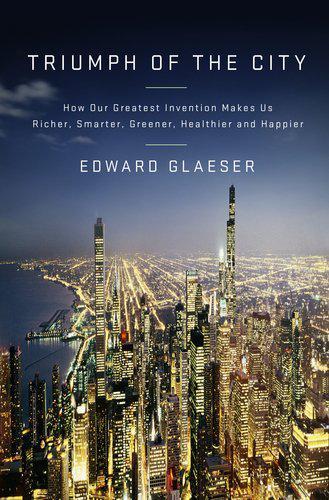
Triumph of the City: How Our Greatest Invention Makes Us Richer, Smarter, Greener, Healthier, and Happier
by
Edward L. Glaeser
Published 1 Jan 2011
In 1973, Nelson Rockefeller, once considered the liberal hope of the Republican Party, signed the Rockefeller drug laws, which mandated a prison sentence of fifteen years to life for anyone possessing four ounces or more of any illegal drug. In the mayoral election of 1977, Ed Koch distinguished himself from his rivals by supporting the death penalty. Koch started a trend, and his successors, including Rudy Giuliani, embraced the “broken windows” theory of policing, which calls for strong penalties for even minor infractions, such as jumping subway turnstiles to avoid paying the fare. Harsher penalties naturally appealed to citizens of a city where criminals seemed to be in control. Between 1980 and 2000, the number of inmates in the U.S. criminal system—in prison, in jail, on probation, or on parole—increased from 1.8 million to 6.4 million.
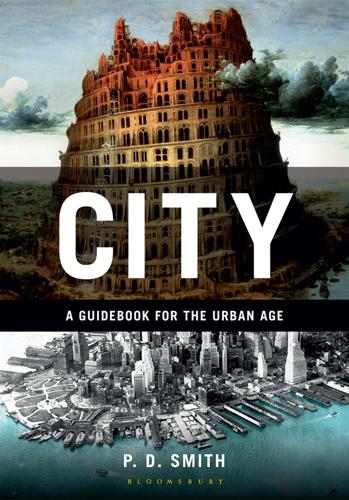
City: A Guidebook for the Urban Age
by
P. D. Smith
Published 19 Jun 2012
Films like Death Wish (1974) suggested that vigilante violence was the way to solve the problem of urban crime; either that or the brutal police methods of Harry Callahan (Dirty Harry, 1971). The fear of crime has become a major political issue around the world and, particularly in the United States and the United Kingdom, it is often presented as an urban issue. The most influential (and controversial) recent attempt to solve crime in urban areas was the so-called ‘broken windows’ theory. It was proposed by social scientists George L. Kelling and James Q. Wilson in 1982. They argued that relatively minor offences reinforce the impression of neglect in an area and represent the beginning of a slippery slope leading to serious criminality: ‘one unrepaired broken window is a signal that no one cares, and so breaking more windows costs nothing’.

If You're So Smart, Why Aren't You Happy?
by
Raj Raghunathan
Published 25 Apr 2016
This belief is rooted in a number of findings, including the famous “obedience” studies conducted by Stanley Milgram in the 1960s, in which he showed that regular people like you and me, under the guise of helping others learn a task (e.g., word associations), could be persuaded to administer severe shocks to them. The so-called broken window theory, which has its basis on a set of studies conducted by Phillip Zimbardo, too, is testament to the idea that people’s propensities are not set in stone. S. Milgram, “Behavioral Study of Obedience,” The Journal of Abnormal and Social Psychology 67(4) (1963): 371–78; for a review of Zimbardo’s famous studies, see P.

Coders: The Making of a New Tribe and the Remaking of the World
by
Clive Thompson
Published 26 Mar 2019
“I tell people, you always take pride in your code. You should always be refactoring it, it should look like you’ve been working on it, when people see it,” he said. A single flabbily written function would convey something other than total commitment to the craft. “I’m a firm believer in the broken-windows theory. You find a bug, you hunt it down and kill it.” Indeed, when Cohen was working hard, he hated anything that took him out of the flow, even eating. While making himself a sandwich in his kitchen, back when I visited him for Wired, he complained that it was taking too long. “Sometimes I wish there were just some way to install energy in your body, like the Terminator putting a battery in his chest,” he said.
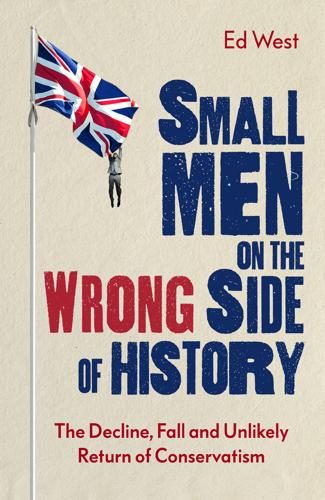
Small Men on the Wrong Side of History: The Decline, Fall and Unlikely Return of Conservatism
by
Ed West
Published 19 Mar 2020
Norton, 1979). 25 http://anepigone.blogspot.com/2018/06/centrists-find-politics-boring-wish-it.html. 26 https://medium.com/@ryanfazio/politics-are-not-the-sum-of-a-person-378102f25334. 27 Burton Egbert Stevenson, The Macmillan Book of Proverbs, Maxims, and Famous Phrases (London: Macmillan, 1948) INDEX 28 Days Later (2002) 185 Abbott, Jack 121 abortion 166, 168, 202, 217, 241, 363 Abortion Act 217 Abramson, Lyn Yvonne 30 academia 7–8, 12, 16–17, 136–8, 319–26 activism 7, 316–17, 326 actors 186–7 Adam 33, 219 Adam, Corinna 18 Adams, Henry 90–1 Adams, John 281 Adams, Samuel 281, 331 Adorno, Theodor 135 The Authoritarian Personality 104–7, 143 Aesop’s Fables 260 Africa 15 Agamemnon 187 Agnew, Spiro 154 agnostics 216 agreeableness 108 Aids 125 Ailes, Roger 313, 346 al-Qaida 13, 125, 201 al-Sahaf, Mohammed Saeed 353 alcohol consumption 112–13, 133 Aldred, Ebenezer 61 Alexander, Scott 118, 315–16, 342–3 Allen, William 92 Allen, Woody 102 Alloy, Lauren 30 ‘Alt-Right’ 345, 347 Altemeyer, Bob 107, 333 American Beauty (1999) 106, 184 American Civil Liberties Union 201–2 American constitution 345 American independence 53, 55, 305 American National Election Studies 303 American Political Science Association 300 ‘American Religion’ 222 American Revolution 55, 280–1 Amnesty International 99, 201, 202, 212 ANC 16, 89, 189 ancien régime 178, 333, 358–9 Andrews, Helen 176 Anglicanism 13, 37, 64, 65, 202, 214, 222 Communion 220 High Church 50, 51 norms 79 supremacy 292 anti-apartheid movement 16 anti-Catholicism 232 anti-communism 22, 211 anti-humanitarianism 74 anti-social behaviour orders (ASBOs) 163 Antichrist 64 Antonia, Lady Fraser 42 apartheid 89, 174 Apollo 29 Aquinas, Thomas 326 Arabs 362 Arbuthnot, Norman 312 aristos 31 Arnold, Matthew 279 art, degenerate 98 Arts Council 197 Aryans 89 ASBOs see anti-social behaviour orders Ashley Madison website 107 Asquith, Robert 168 atheism 52–3, 214–16, 292, 294 see also New Atheism Athelstan, King 126 Athens 31 Atlantic magazine 341, 348, 366 Attenborough, David 195 Attlee, Clement 175 Attlee era 177 Augustine of Hippo 31–3, 35, 349 Augustine, St 110, 291 Auschwitz 98 authoritarian personality 104–7, 118, 334 authoritarianism 140, 148, 208, 262, 329–30, 333–4, 338, 350 autism 138 Ayres, Bill 236 Babeuf, François-Noël 60–1 baby boomers 44, 83, 131, 155 Bad Religion 102 bad-thinkers 144–5, 146, 150, 152 Baldwin, Alec 24 Balfour, Arthur 265 Bank of England 331 Bannon, Steven 152, 309, 347 Baptists 59, 145 barbarism 65, 66, 84 barbarians 12, 131 Bargh, John 115 Barlow, Joel 109 Baron-Cohen, Sacha 333 Barrès, Maurice 95 Basics, Baxter (Viz character) 86, 267 Bastille, storming of the 55, 59, 331 Batbie, Anselme 274 Batek 131 BBC 3, 149, 165, 186, 190–7, 265, 266, 313–14, 337 Beatles 166, 287 beatnik poetry 127 Becker, Ernest 115 Beeching Axe 285 Belgium 303 Belle Époque era 126, 175, 184–5 Benedict, St 373 Benedict XVI, Pope 218, 232, 233 Benn, Tony 18, 21, 42 Bentham, Jeremy 78, 92, 223–4 Berenger, Tom 110 Berlin 20–1, 23, 41–2 Berlin Wall 21, 22, 23, 86 Betjeman, John 285 Bevan, Nye 230 Beyoncé 24 Beyond the Fringe 191 Bible 50, 219, 229, 294 Bible Belt 228 Big Five personality traits 108–13, 137, 363 ‘Big Sort, The’ 295 Bill of Rights 305–6 biological determinism 139 birth control 364 birth rates 362–4 Bishop, Bill 295 Black Death 34–5 Black Lives Matter 338 Black Wednesday 154 Blackadder 331 Blair, Tony 21, 24, 79, 153, 156, 158–61, 163–4, 183, 189, 192, 213, 266–7, 270 Blair era 167, 203–4, 205, 281 ‘Blob, the’ 271 Bloom, Allan 98 Bloom, Paul 321 Bloomsbury 18 ‘blue wave’ 2006 274 Blumenberg, Hans 67 Boas, Franz 133–4 ‘Bobo’ (bohemian bourgeois) 244, 308 Bogart, Humphrey 24 Bolshevik Revolution 303 Bolshevism 226, 246 Borat 333 Bosnia 214 bourgeois 132, 246 bourgeoisie 9, 97, 127, 135 see also Ruling Class Boy Scouts 197 Bradbury, Malcolm 39 brain 116–17 Brando, Marlon 24, 341 Brazil 164 Brecht, Bertolt 186 Breitbart (website) 308, 309, 314, 315, 317–18, 347 Breitbart, Andrew 181, 308 Brennan, Mr 47 Brent, David 192 Brexit 4, 26–7, 103, 186, 195, 270, 346, 353–60, 365, 370 Brexit Referendum (2016) 3, 173, 222, 270, 275, 302, 354–5, 357, 359 Brief Encounter (1945) 162, 168 British Army 9 British Empire 57 British National Party 87 British Potato Council 203 ‘broken windows’ theory 69 Brook 241 Brooke, Heather 298 Brooker, Charlie 249 Brooks, Arthur 82, 191, 299 Who Really Cares 237 Brooks, David 244 ‘brotherhood of man’ 71, 100 Brown, Dan 213 Brown, Gordon 203, 265, 281 Brown era 203–4 Bruinvels, Peter 194 B’Stard, Alan 89 Buchanan, Pat 154–9, 313 Buckley, William F. 68, 295–6, 313 Bullingdon Club 267 Burke, Edmund 47, 53–5, 57–9, 61–3, 65, 66, 68, 70–2, 82, 89–90, 159, 163, 181, 190, 191, 198, 230, 274, 279, 280, 345, 365 Burleigh, Michael 88 Bush, George, Sr 86, 156 Bush, George W. 27, 201, 236, 248, 313 buttons 34–5 Byrne, Liam 266 C2DE social class 5 cable TV 311 Cafod 233 California 4, 320 Calvin, John (Jean) 48, 49, 293 Calvinism 45, 49, 64 Cambridge 49 Cambridge University 52, 55, 145, 151, 326, 348 Camden Labour Party 18 Cameron, David 237, 265, 266, 267, 270, 272, 359 Cameron faction 266, 270, 359 Campaign for Nuclear Disarmament (CND) 81 Campbell, Alistair 159–60 Camus, Albert 226 Canada 178, 201 capitalism 15, 64, 78, 93, 97, 280, 339 Caplan, Bryan 275 Capra, Frank 123 Captain America comics 237 Carlson, Tucker 365 Carlyle, Thomas 41, 75, 76 cars 285–6 Cash, Johnny 24 Cassandra 28–9, 62, 373 Catharism 254–5 Cathedral, the 202–3, 271 Catholic Church 48, 116, 212, 212–14, 217–18, 232, 233, 269, 333 Catechism 137 Catholic Emancipation Act 289 Catholic Herald (newspaper) 212, 213, 216, 219, 233, 241, 272, 307, 339 Catholicism 11–13, 33, 37, 41–3, 45, 49, 51–2, 54, 57, 62, 64, 75, 134–5, 142, 155, 158, 176, 199, 202, 211–13, 217–18, 222, 230–1, 241, 243, 272–3, 291–2, 294, 296, 339, 363 see also anti-Catholicism Cato Institute 324 Cavaliers 53, 57 Ceauşecu 46 censorship 148, 166, 188–9, 290, 331 Central Intelligence Agency (CIA) 61 ‘centrist dad’ 8 Chagnon, Napoleon 147 Change 3 Change UK 3 Channel 4 168, 232 charities 57, 199–202, 233, 237 Charles I 49, 55 Charles II 36, 37, 52 Charles-Roux, Fr Jean-Marie 210–11 Chartists 175 Chelsea FC 47 Chesterton, G.

The Rough Guide to New York City
by
Rough Guides
Published 21 May 2018
The city today The 2013 race to succeed Bloomberg as mayor saw what was largely regarded as an uninspiring field run; emerging late from the pack to win the Democratic primary and the mayoral election was progressive Bill de Blasio, who ran in part on a platform promising to address racial and economic inequality in the city. It was not smooth sailing early on, as he ruffled feathers by bringing back William Bratton as police commissioner, the man who had helped institute the “broken windows” theory of policing – focusing on cracking down on minor crimes to deter major ones – under Giuliani. He then ticked off police by appearing to side with protestors after an unarmed African American man, Eric Garner, was killed in an encounter with a few cops in a Staten Island park. Despite this, the city seems on an upward swing, with the opening of One World Trade Center and its sky-high observatory, the relocation of the Whitney Museum at the foot of the High Line and the continued reclamation of the city’s waterfront.

The Age of Surveillance Capitalism
by
Shoshana Zuboff
Published 15 Jan 2019
Shish Shridhar, “We Don’t Need Yet Another App, Conversations Are the New App,” Microsoft Developer Blogs—the ShiSh List, May 21, 2016, https://blogs.msdn.microsoft.com/shishirs/2016/05/21/we-dont-need-yet-another-app-conversations-are-the-new-app. 114. Terry Myerson, “Hello World: Windows 10 Available on July 29,” Windows Experience Blog, June 1, 2015, https://blogs.windows.com/windowsexperience/2015/06/01/hello-world-windows-10-available-on-july-29. 115. David Auerbach, “Broken Windows Theory,” Slate, August 3, 2015, http://www.slate.com/articles/technology/bitwise/2015/08/windows_10_privacy_problems_here_s_how_bad_they_are_and_how_to_plug_them.html. 116. Peter Bright, “Even When Told Not to, Windows 10 Just Can’t Stop Talking to Microsoft,” Ars Technica, August 13, 2015, https://arstechnica.com/information-technology/2015/08/even-when-told-not-to-windows-10-just-cant-stop-talking-to-microsoft. 117.